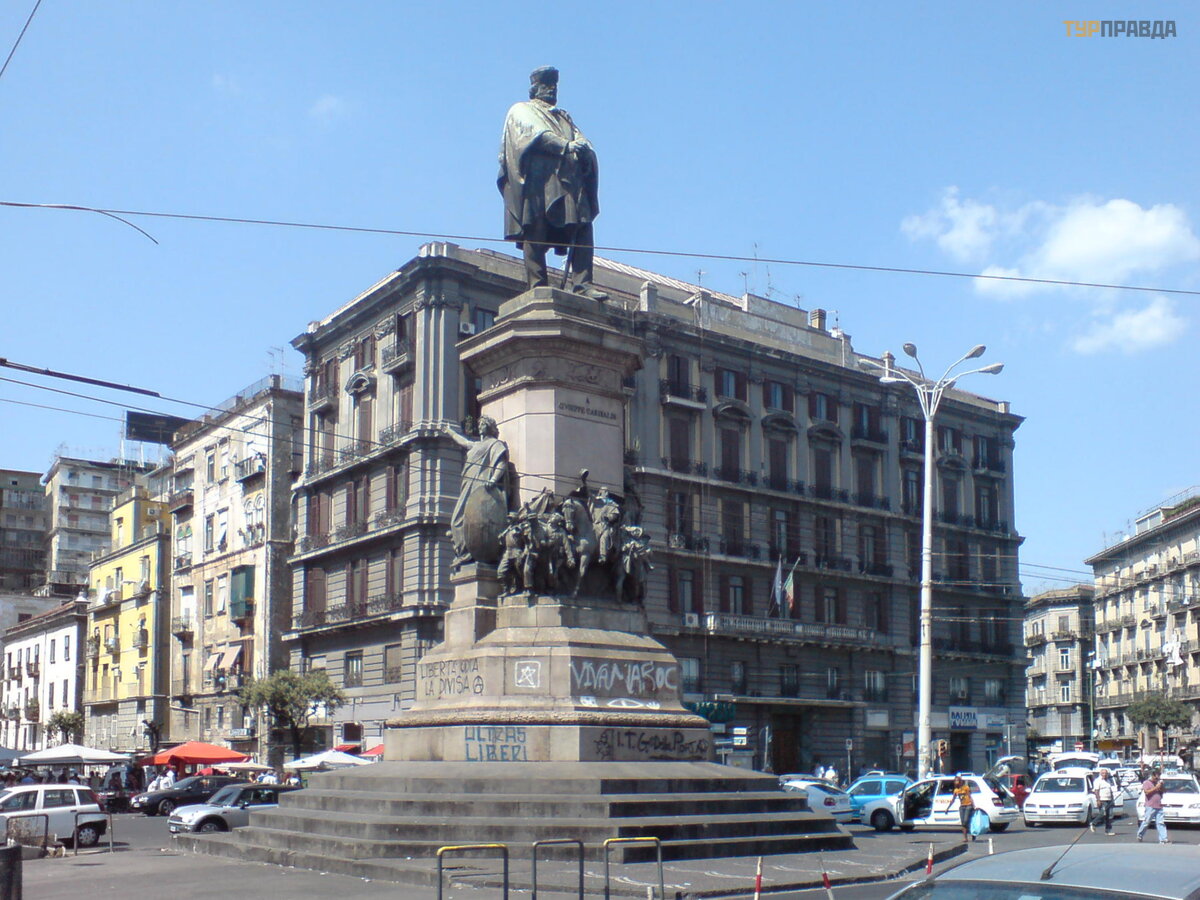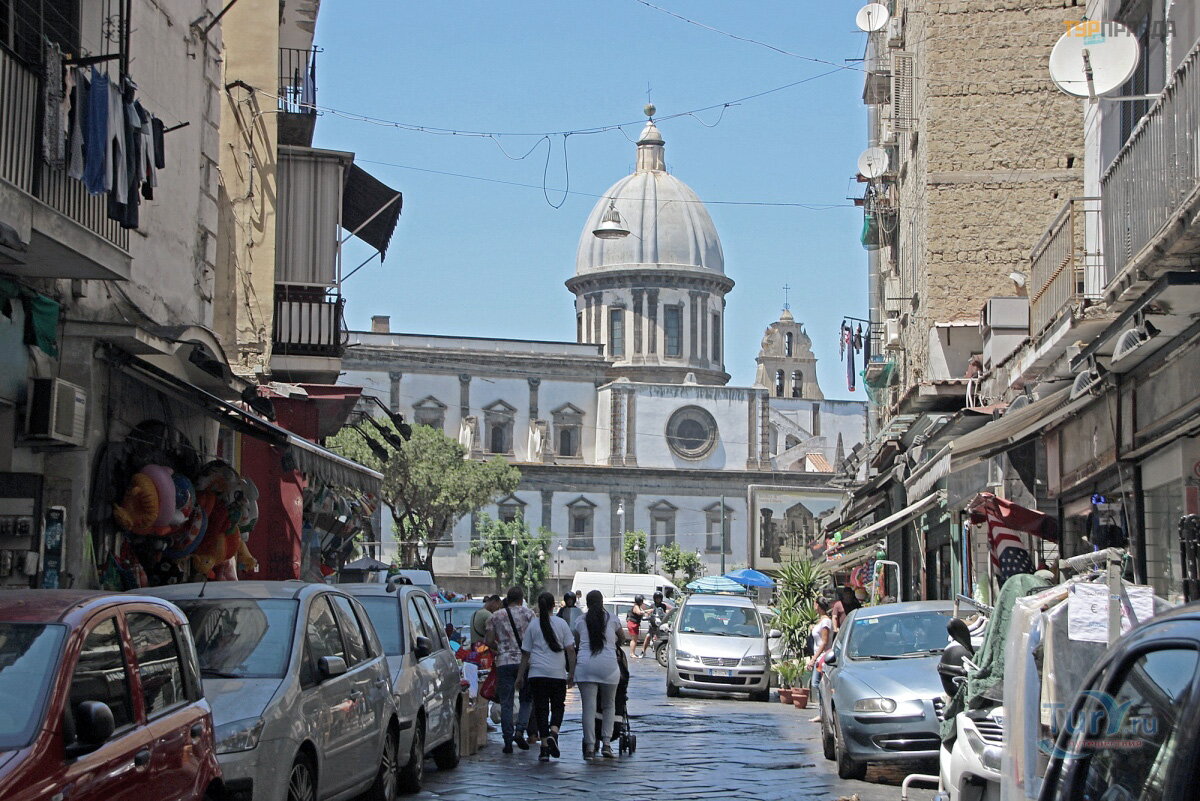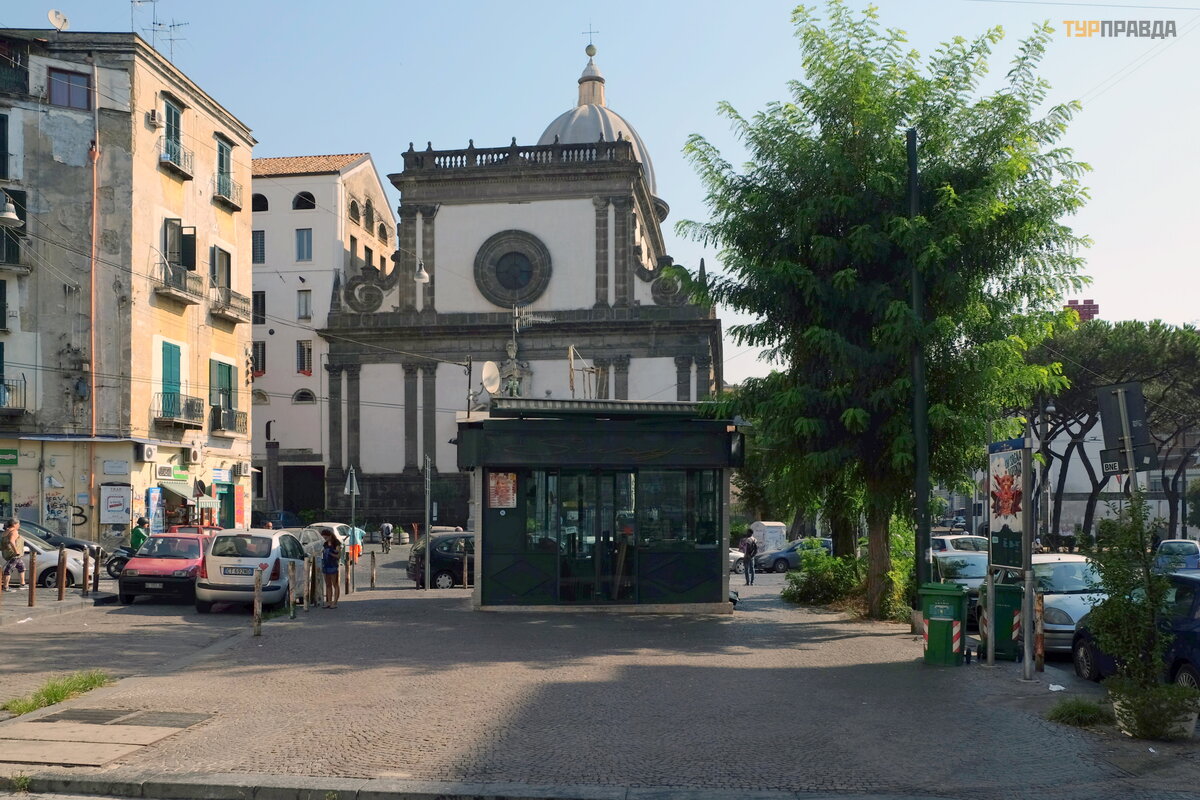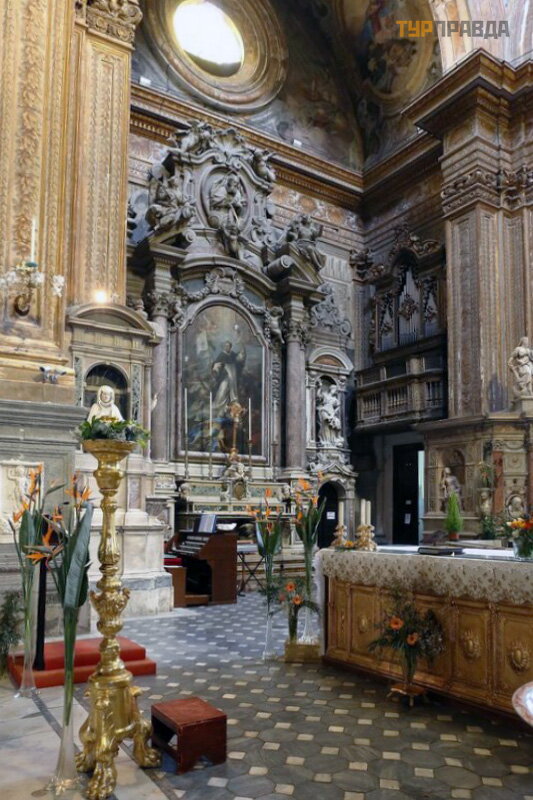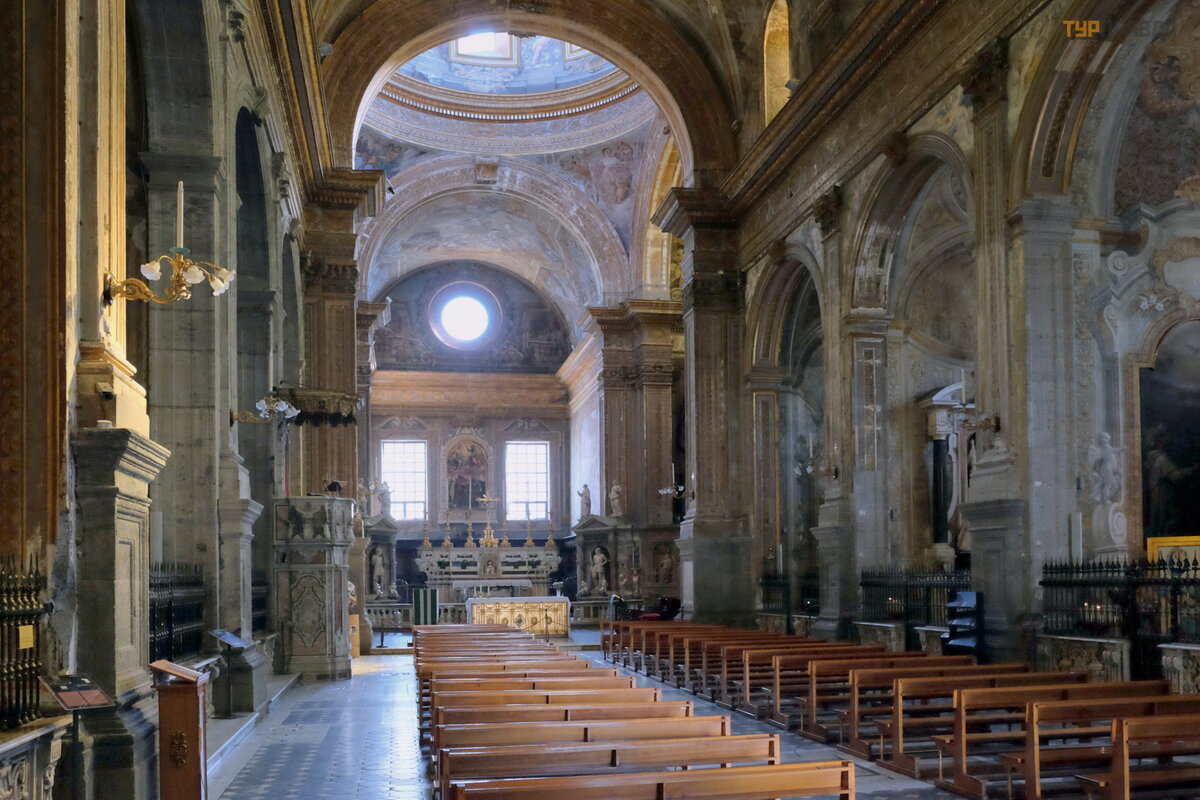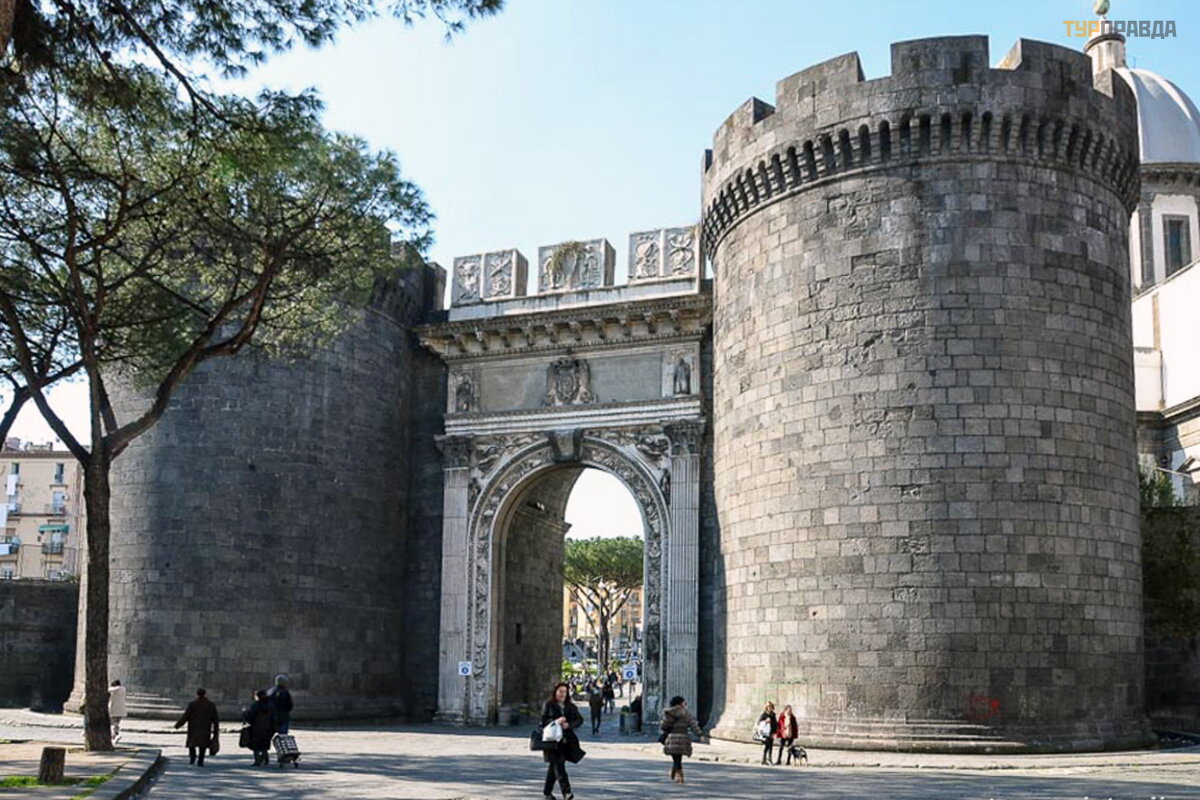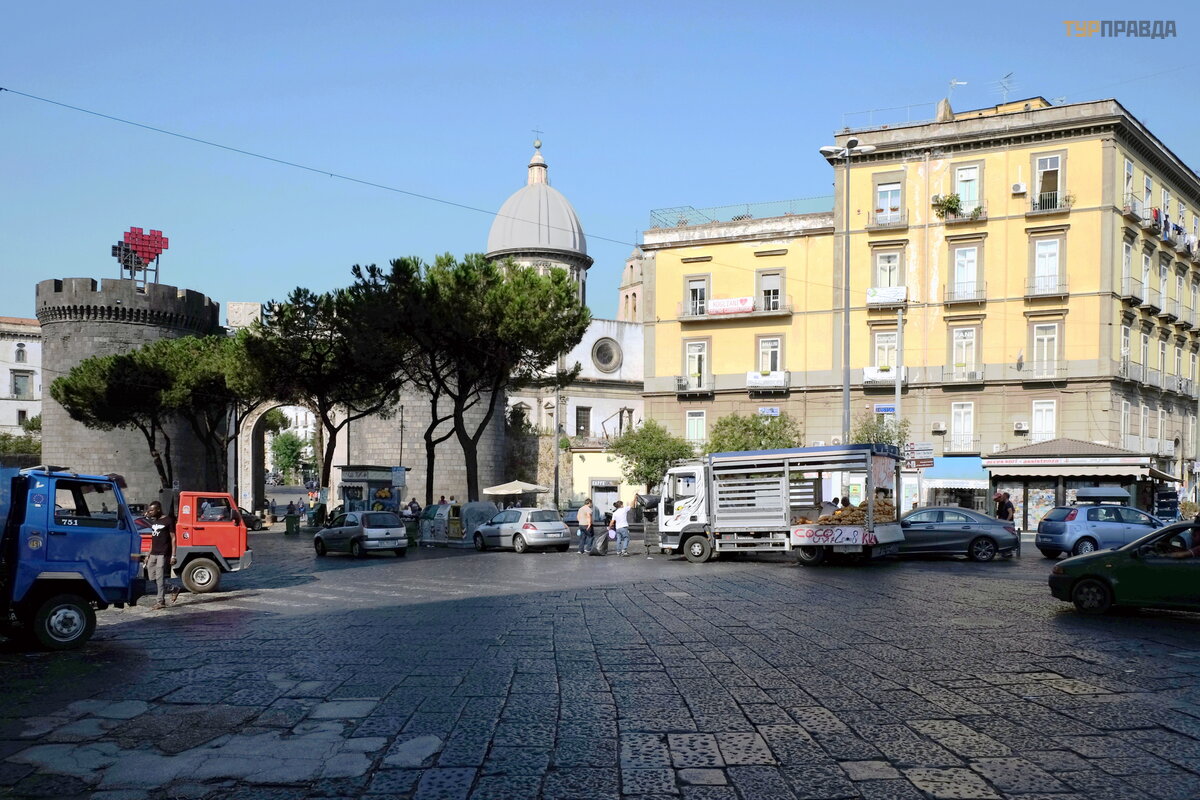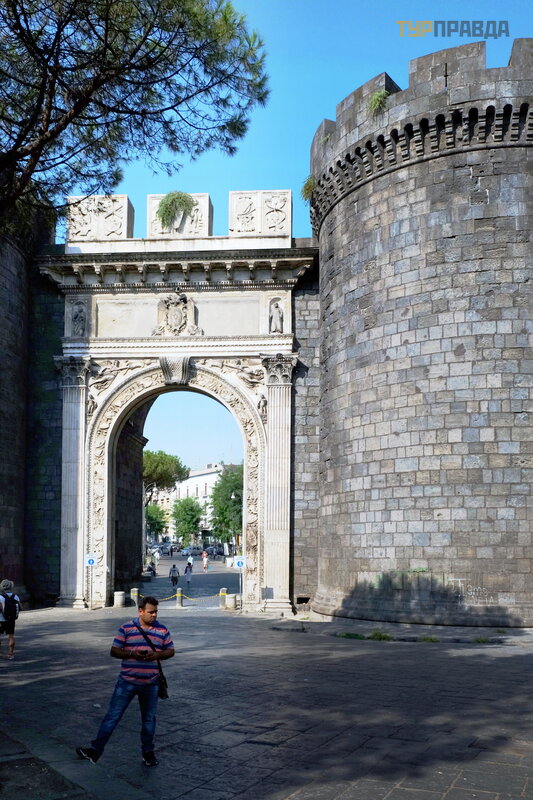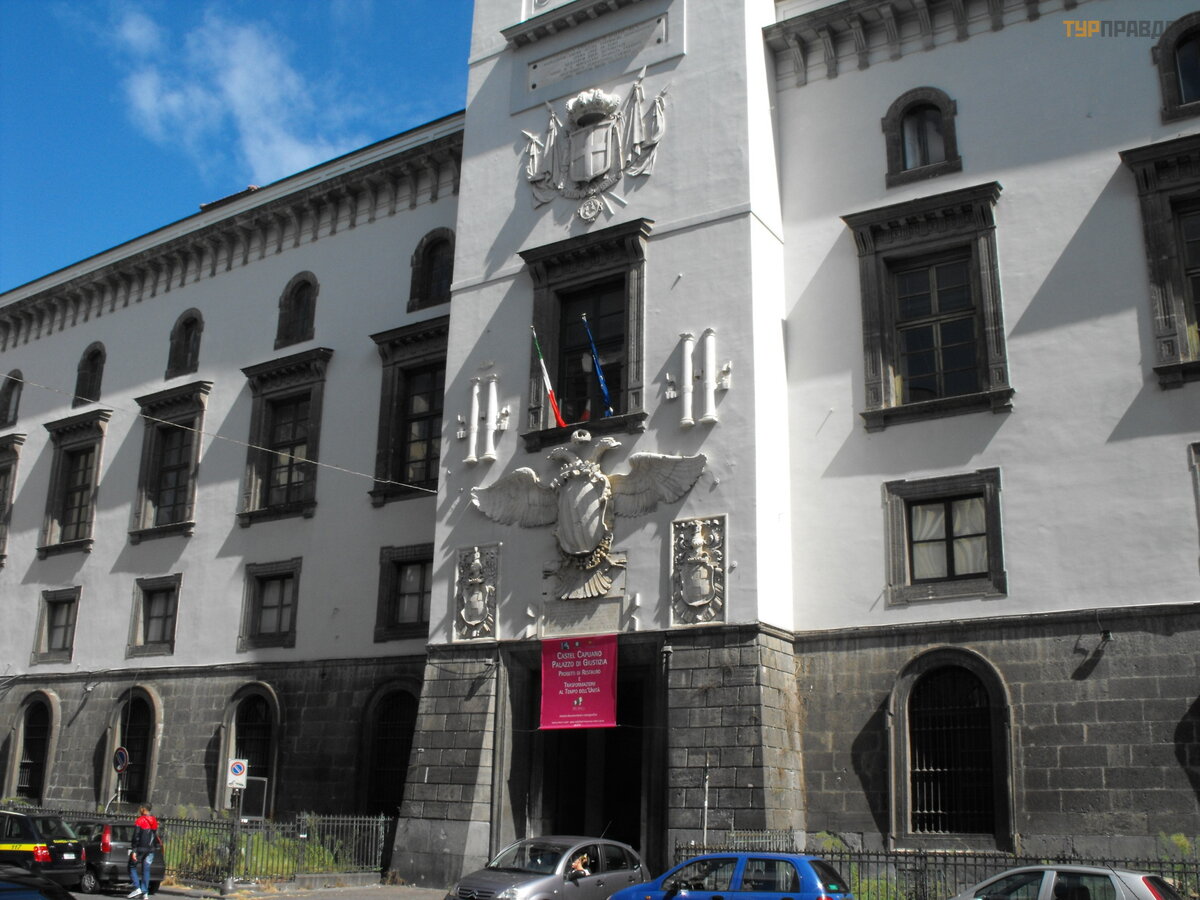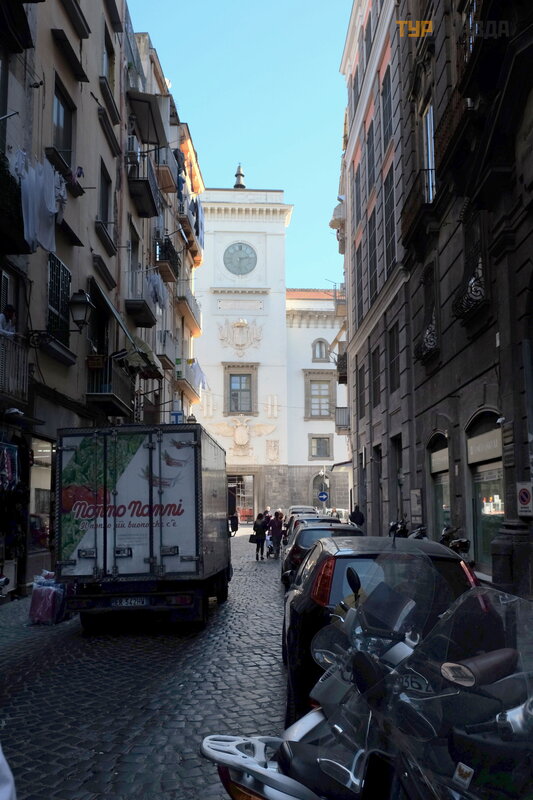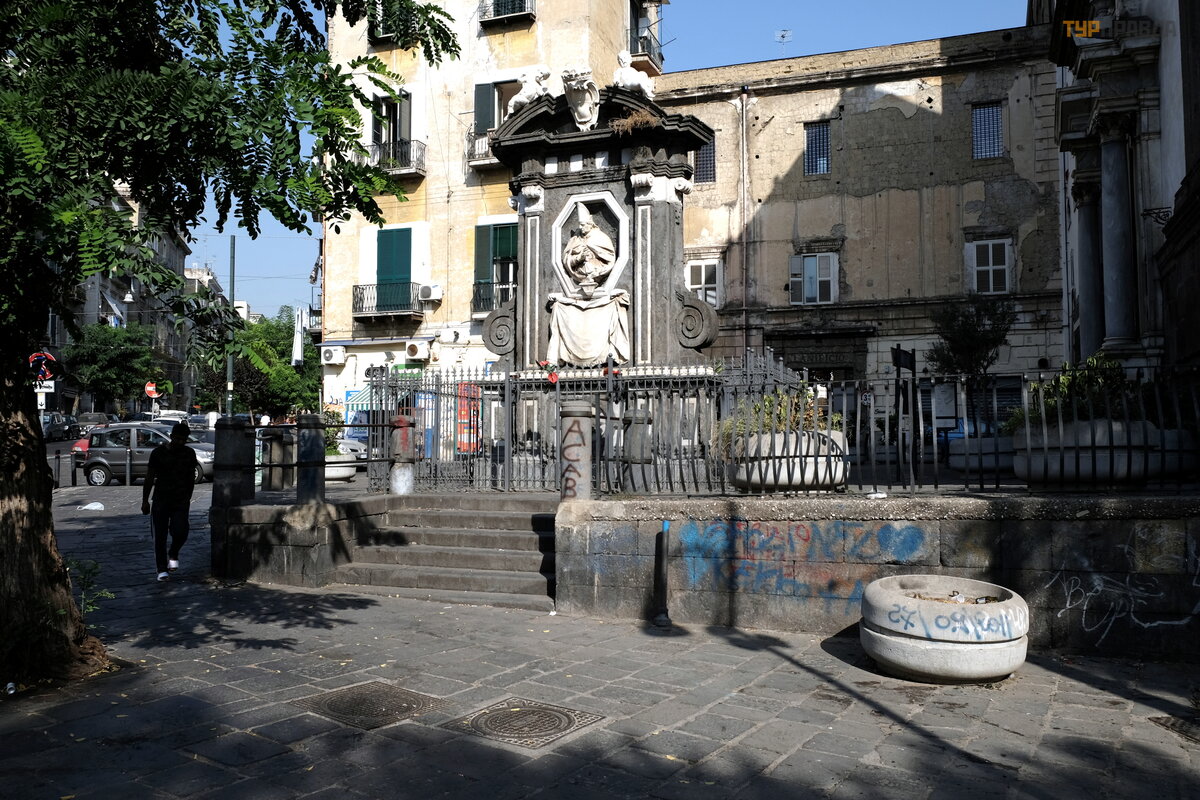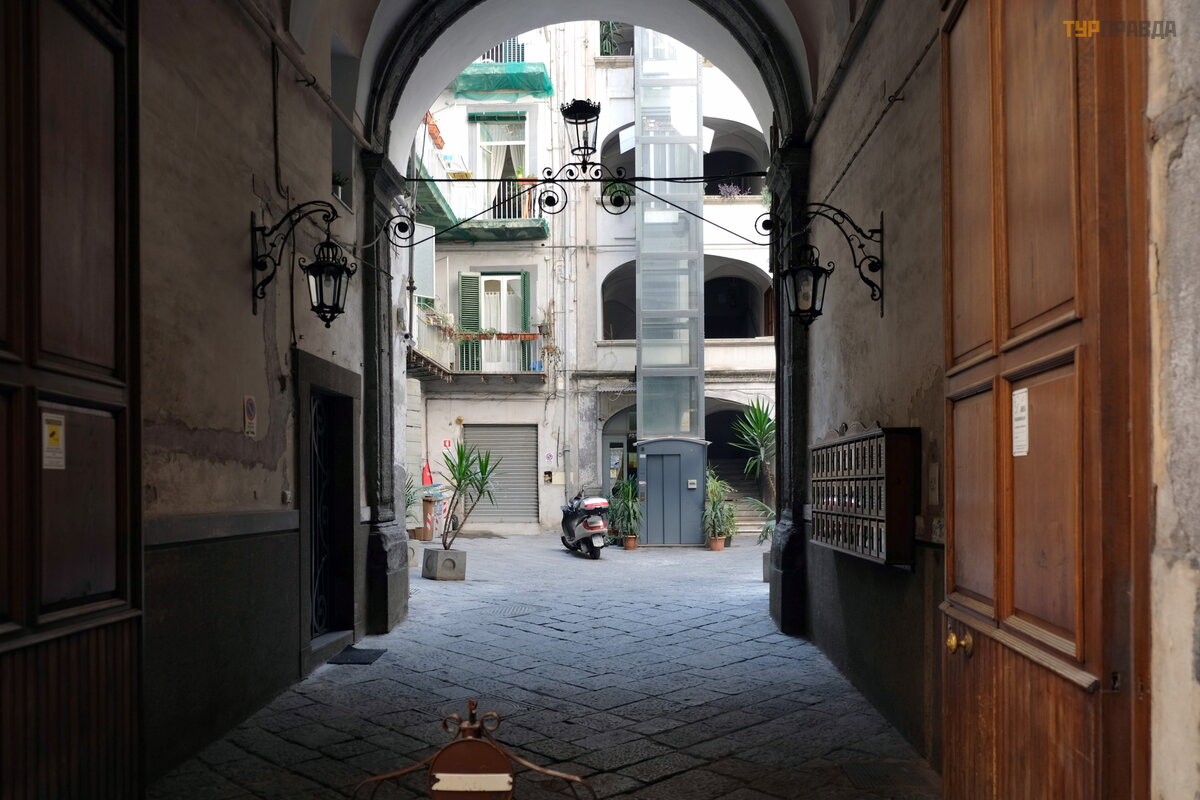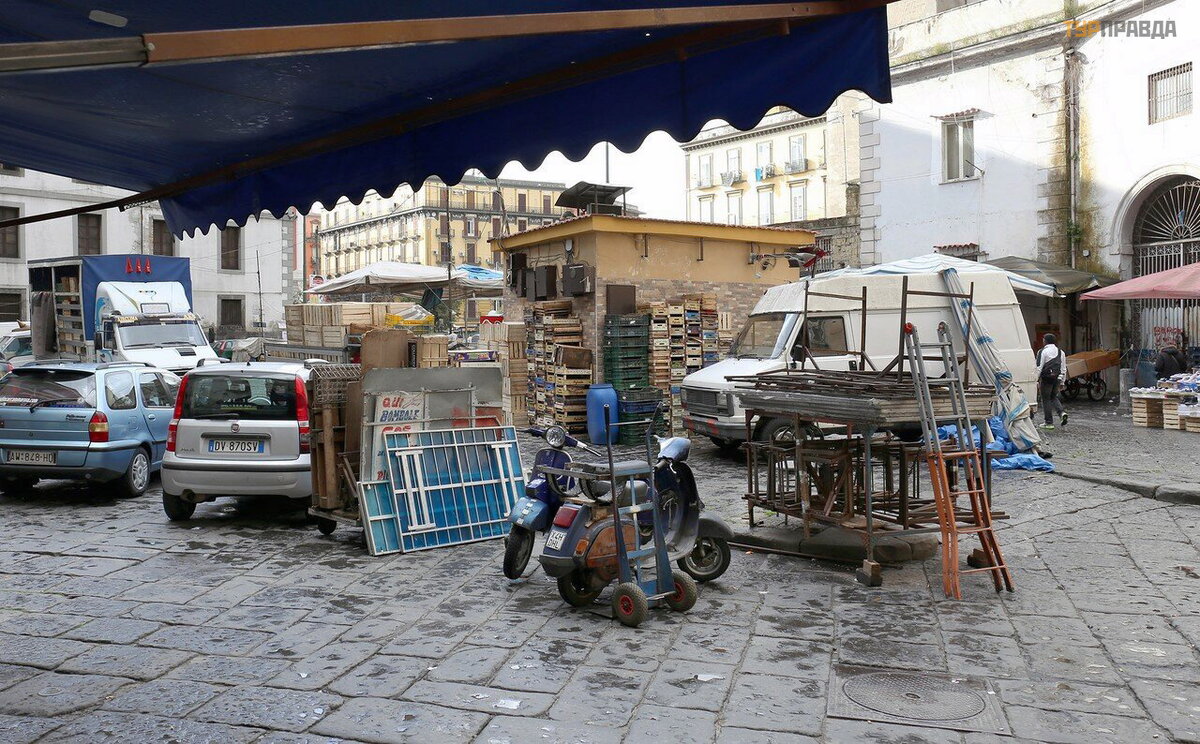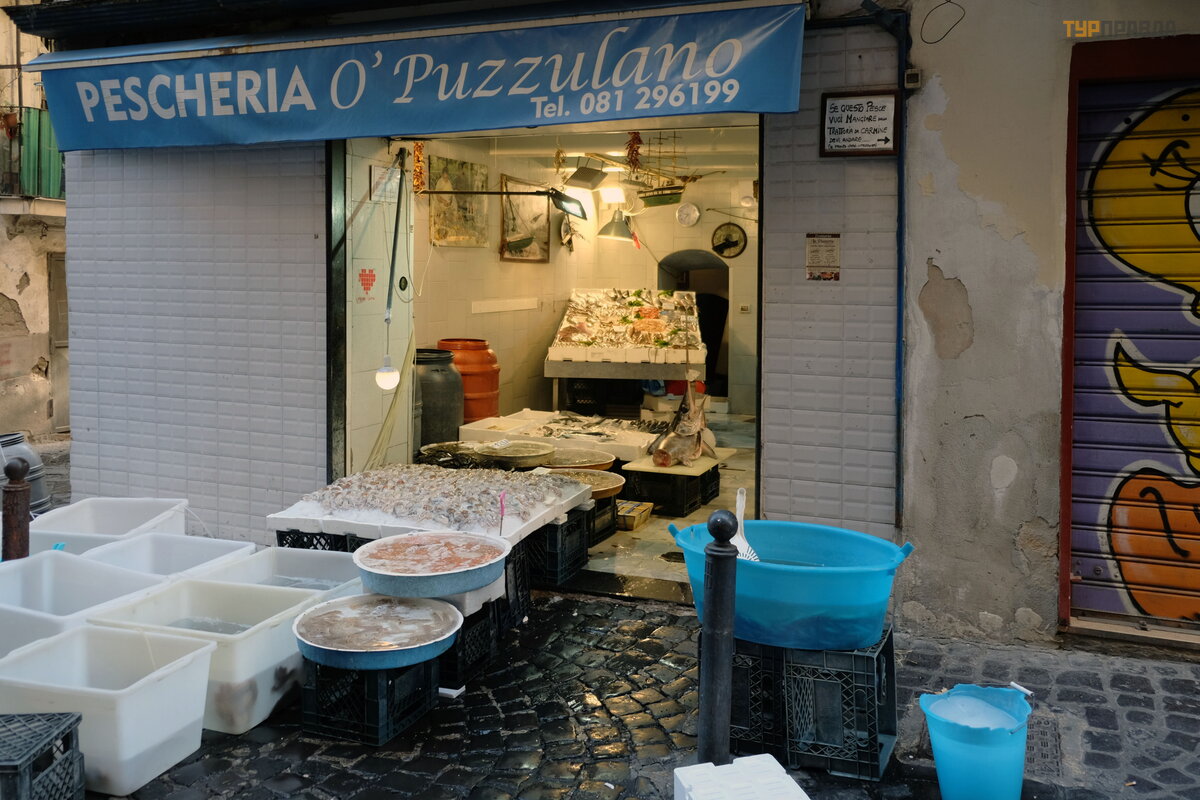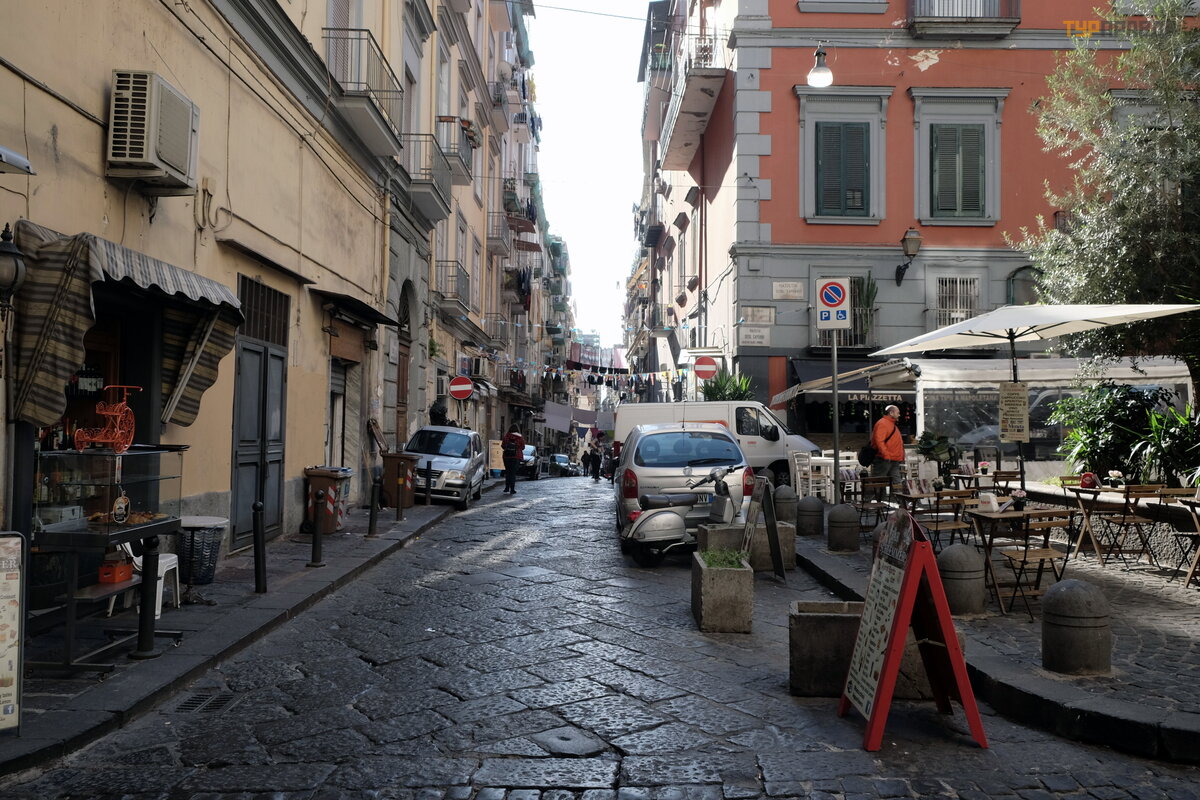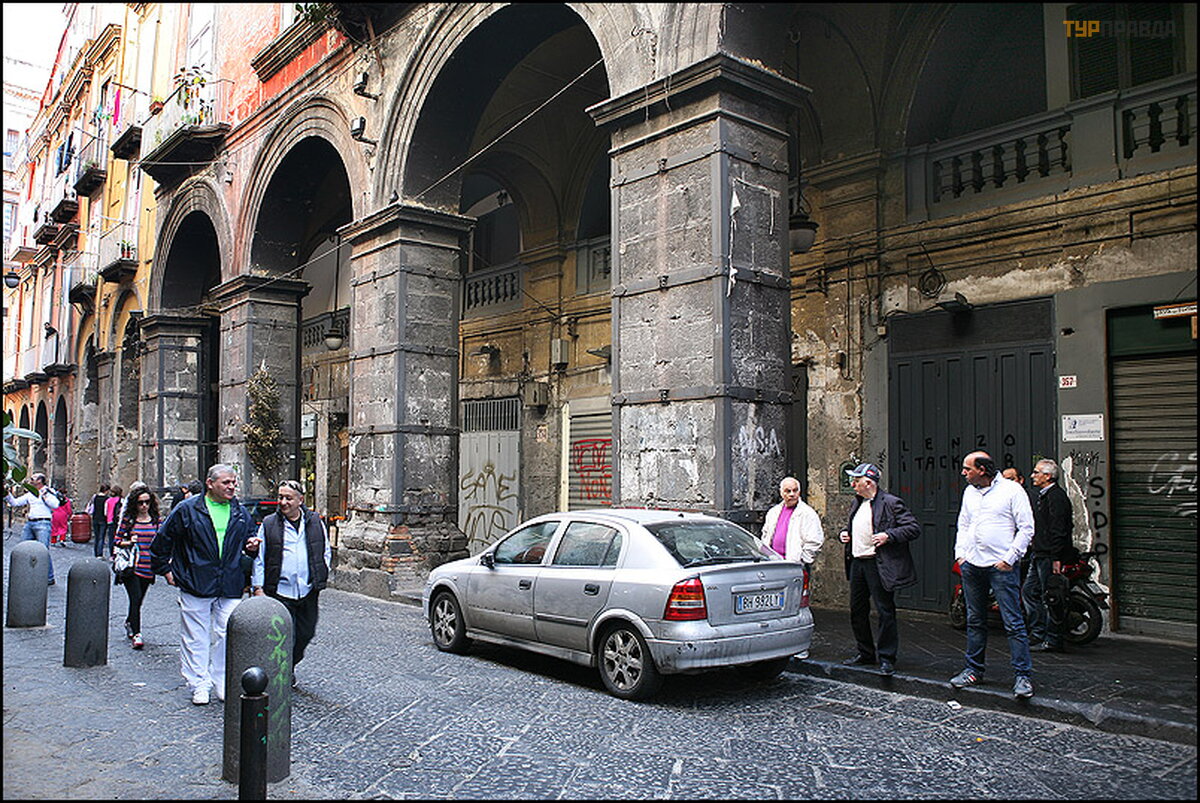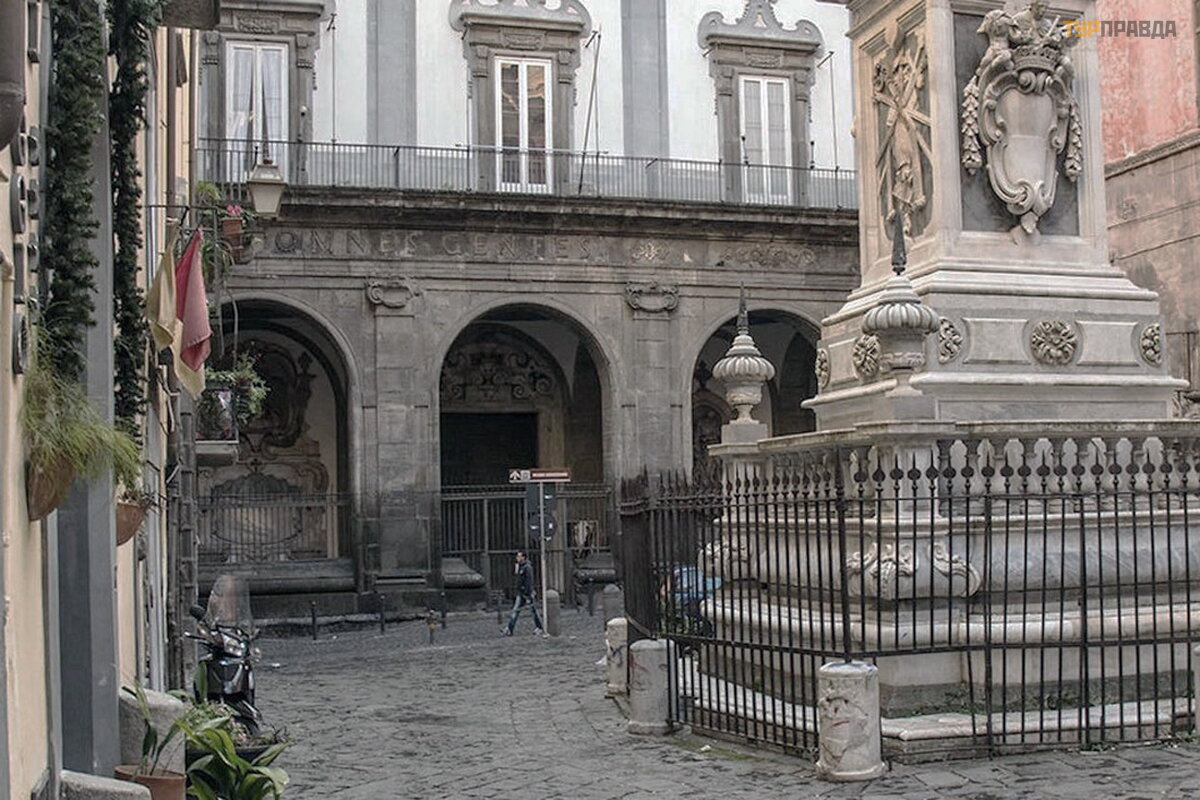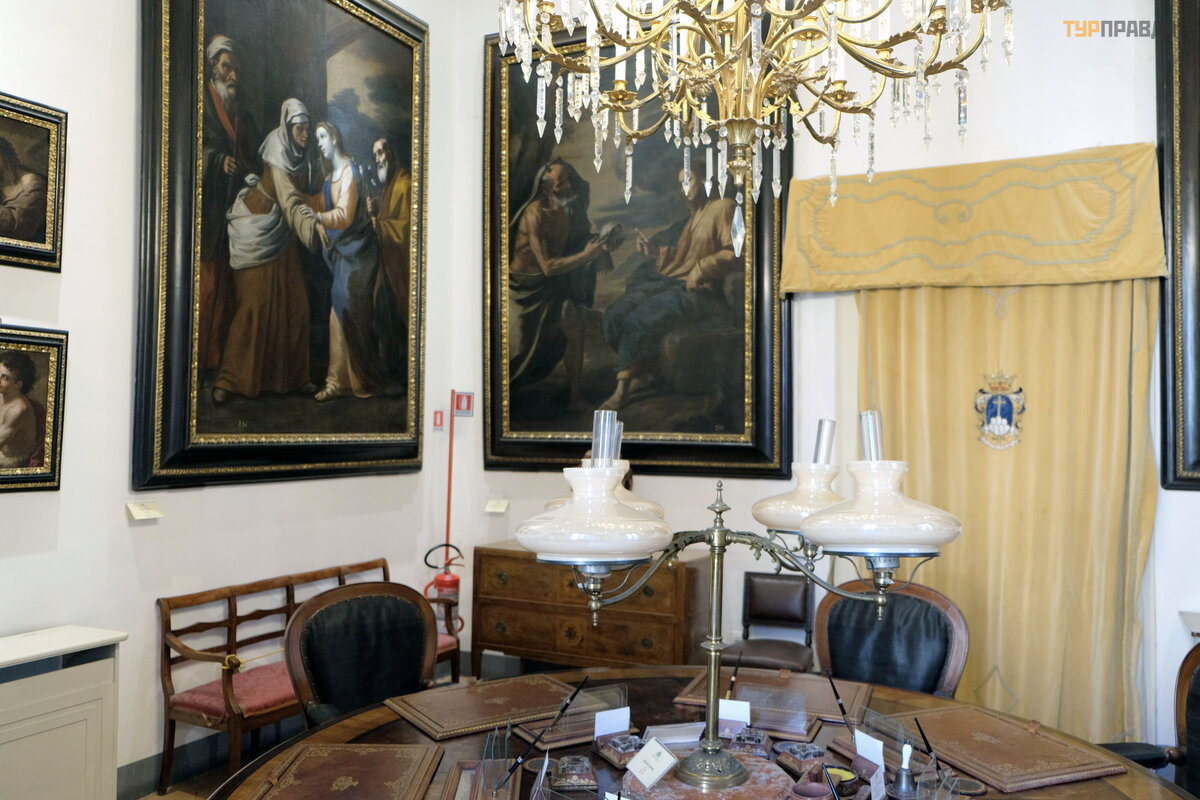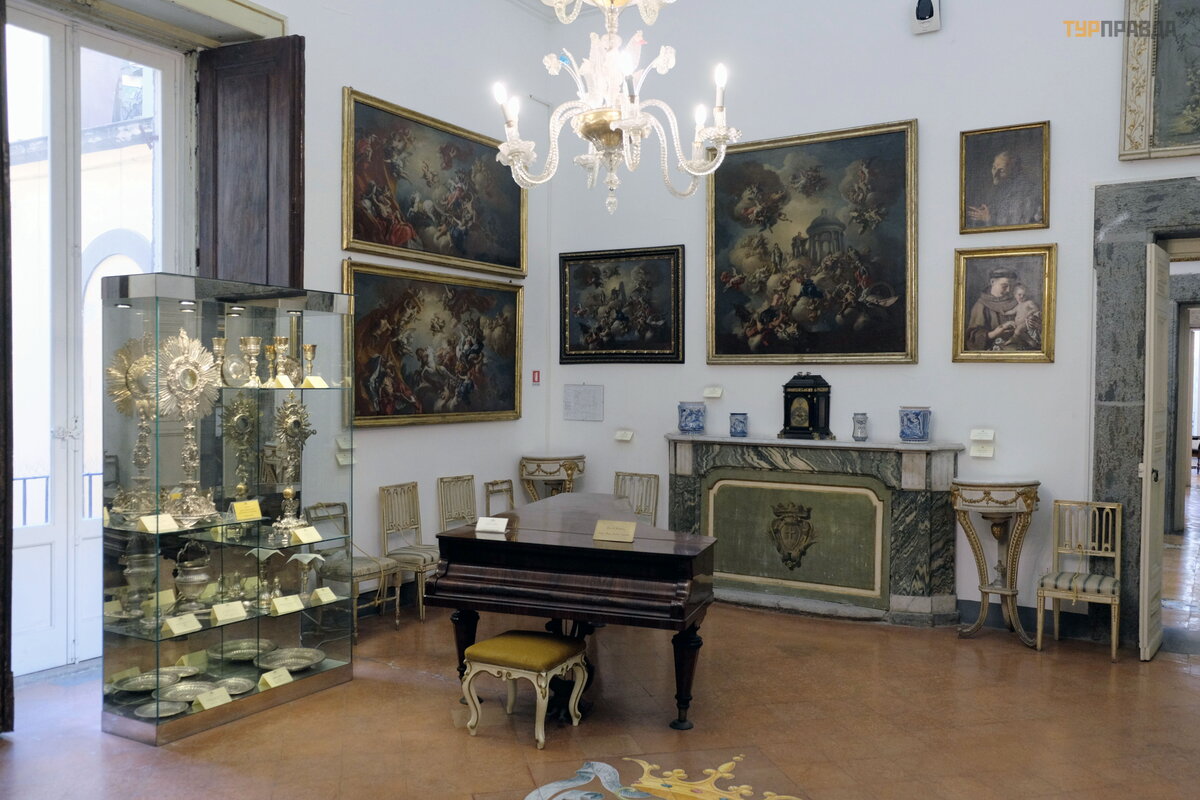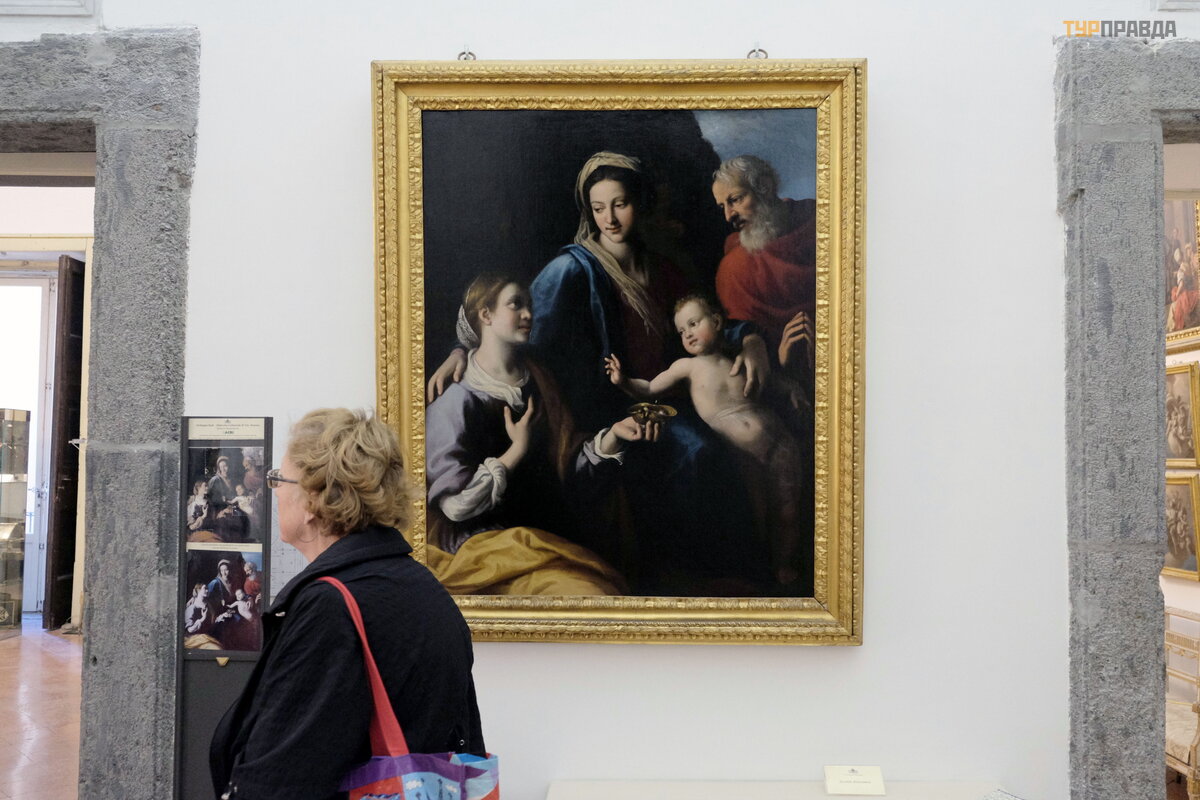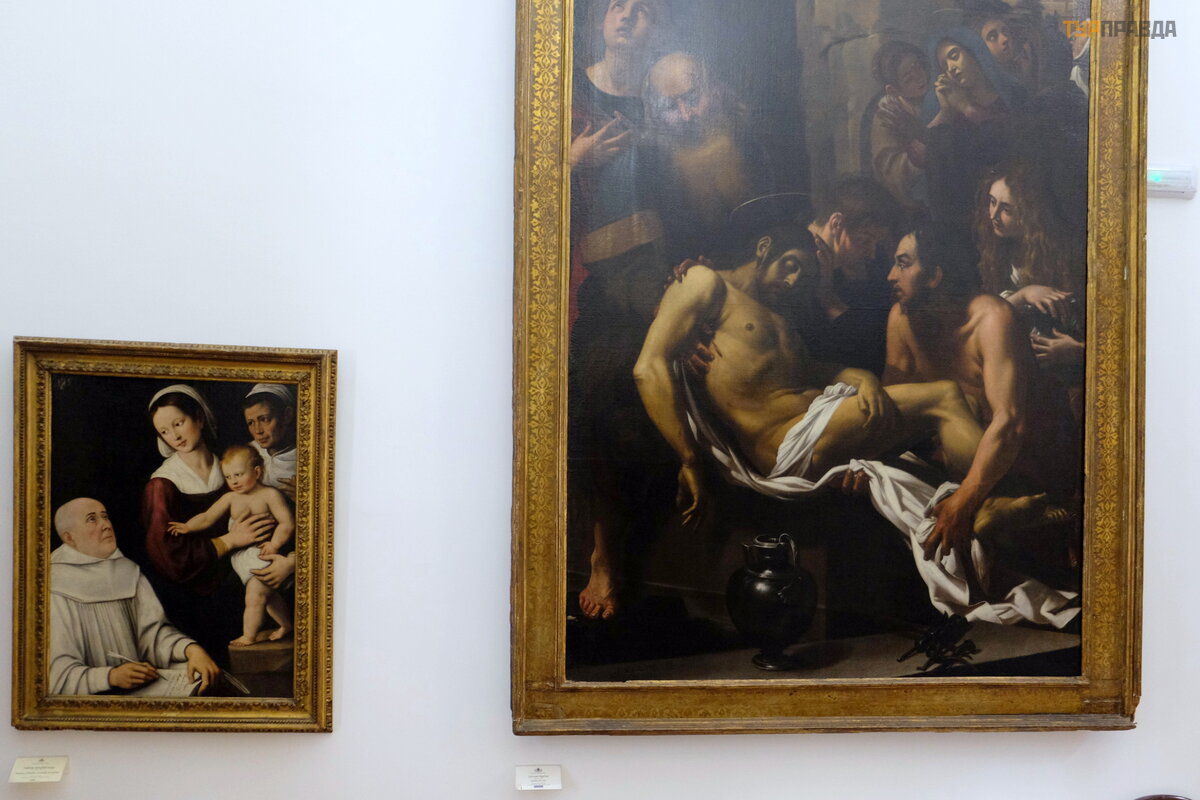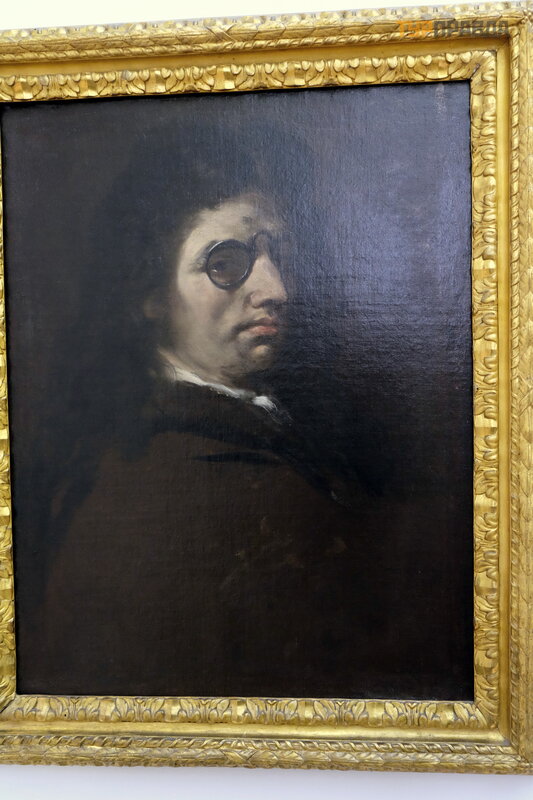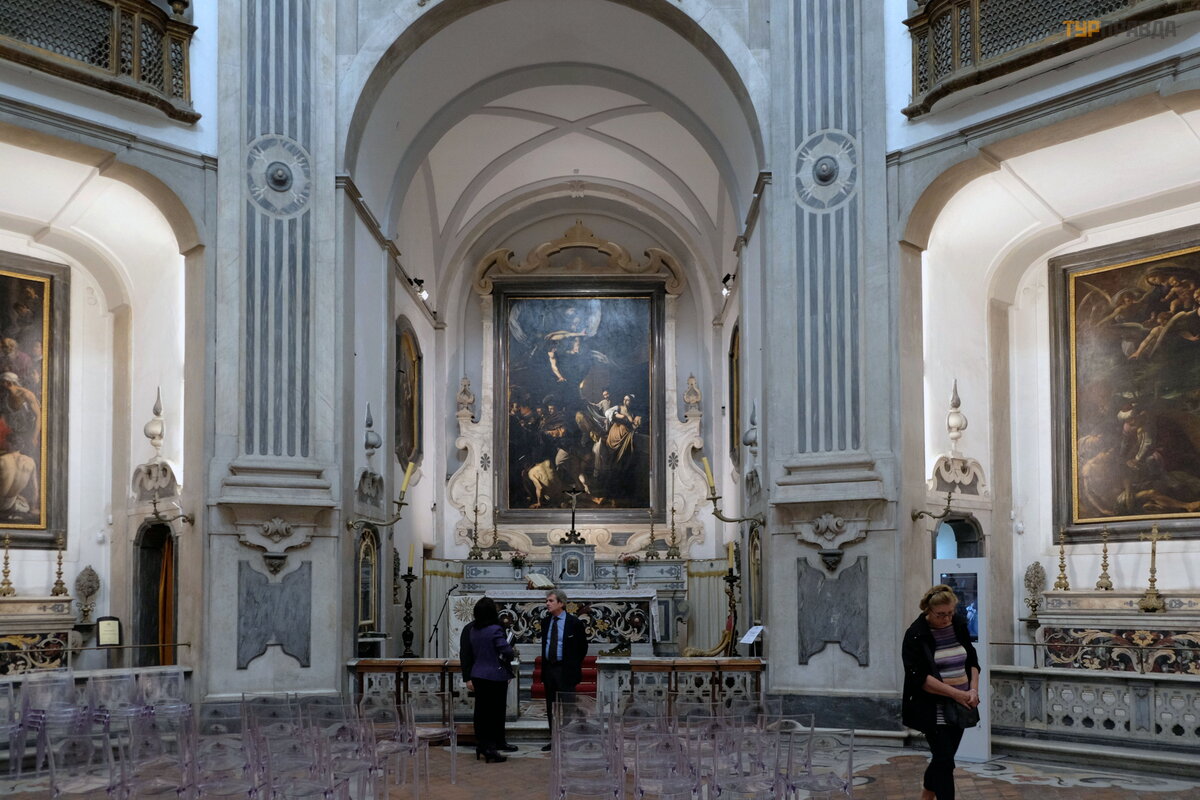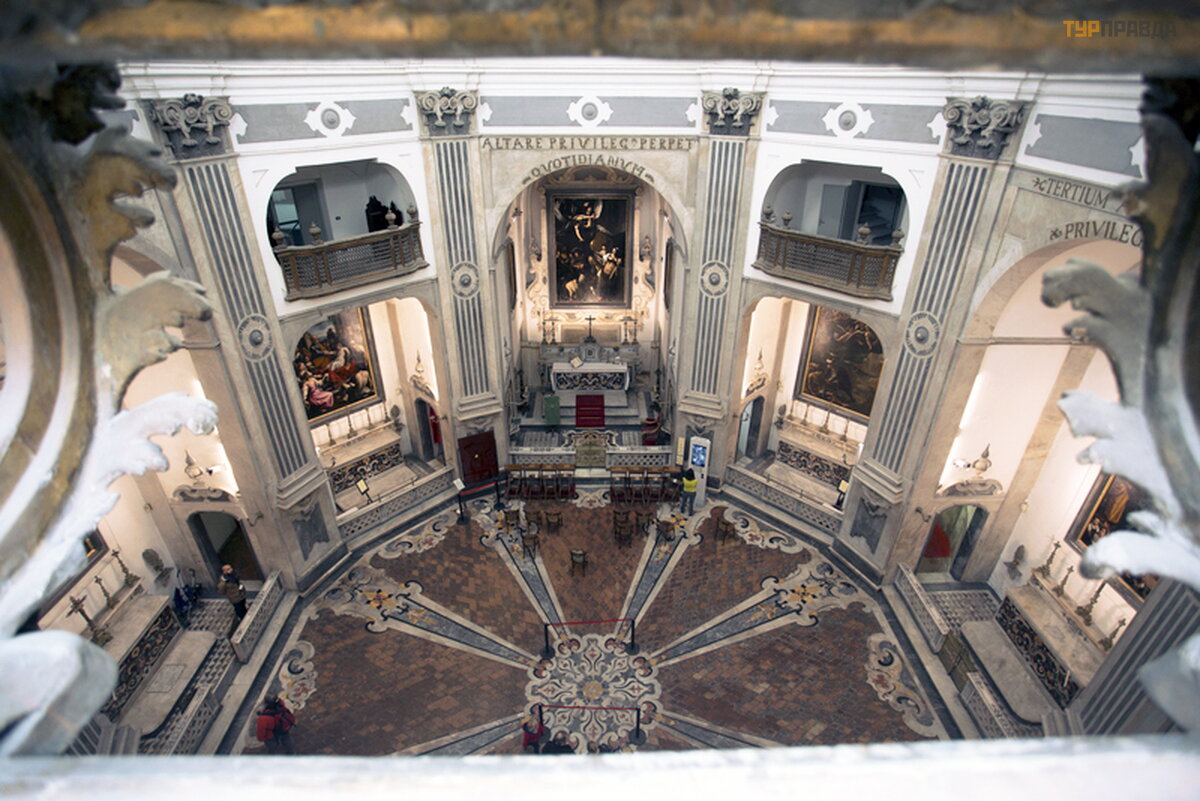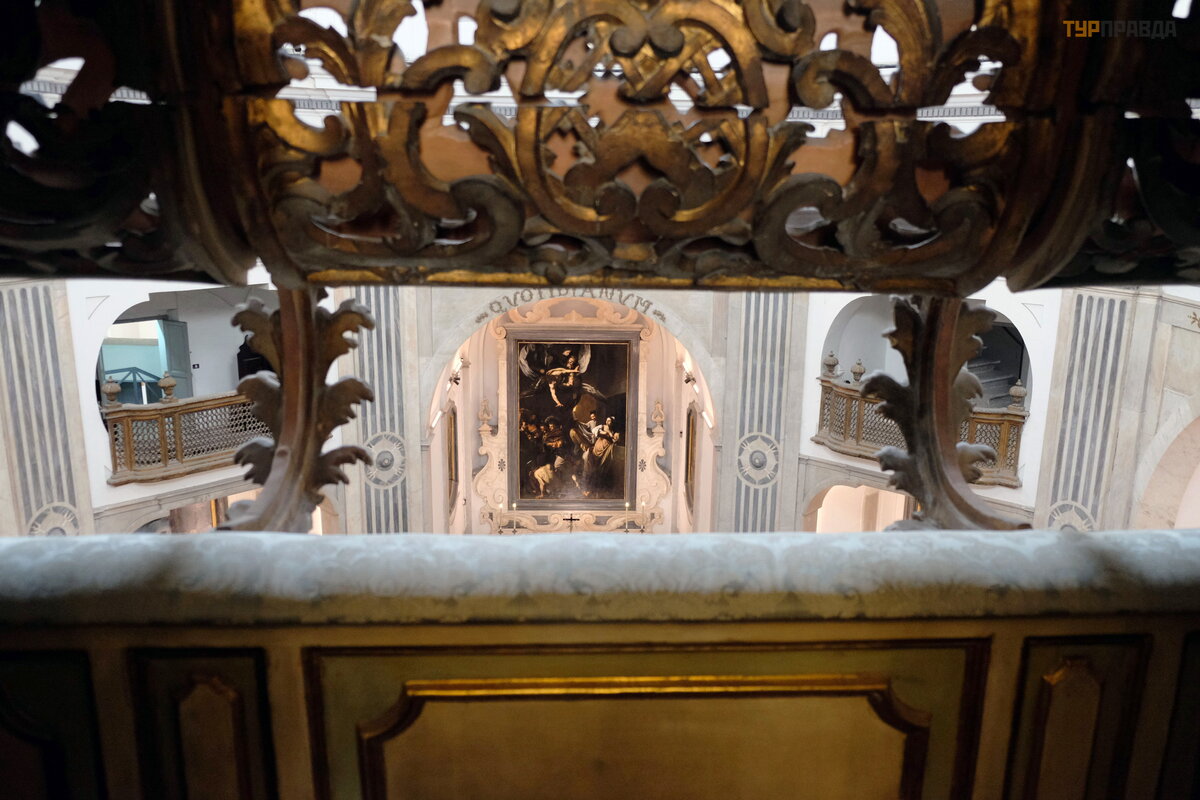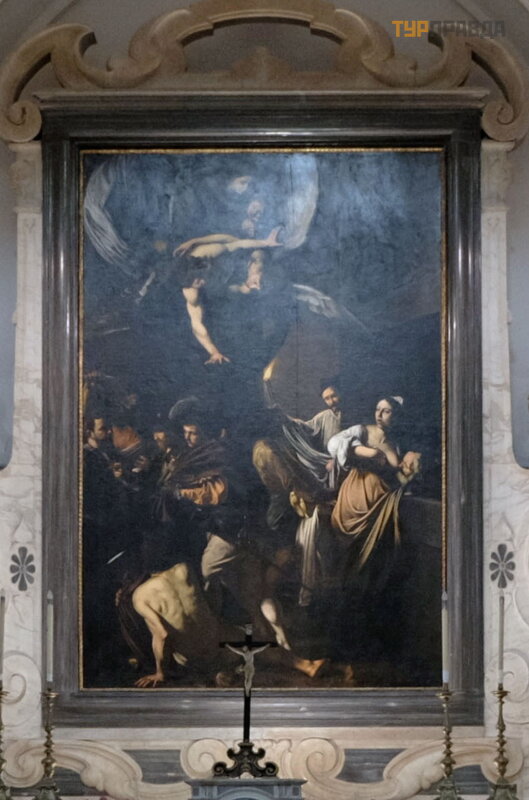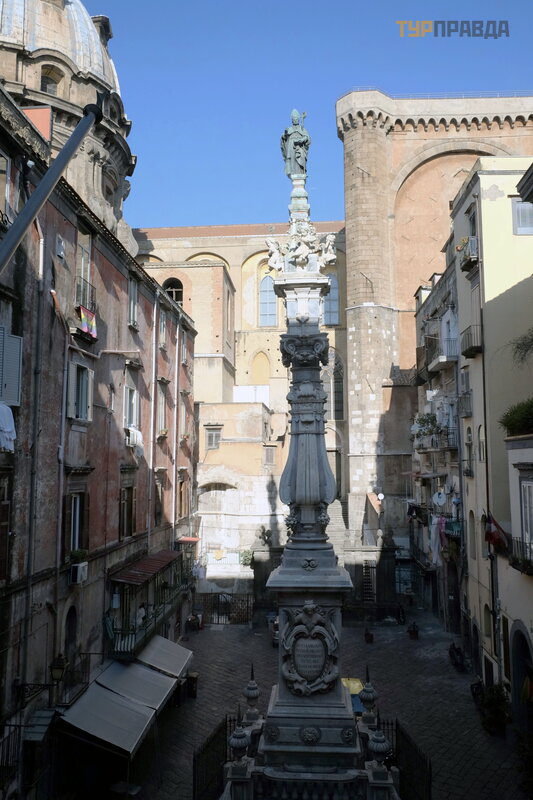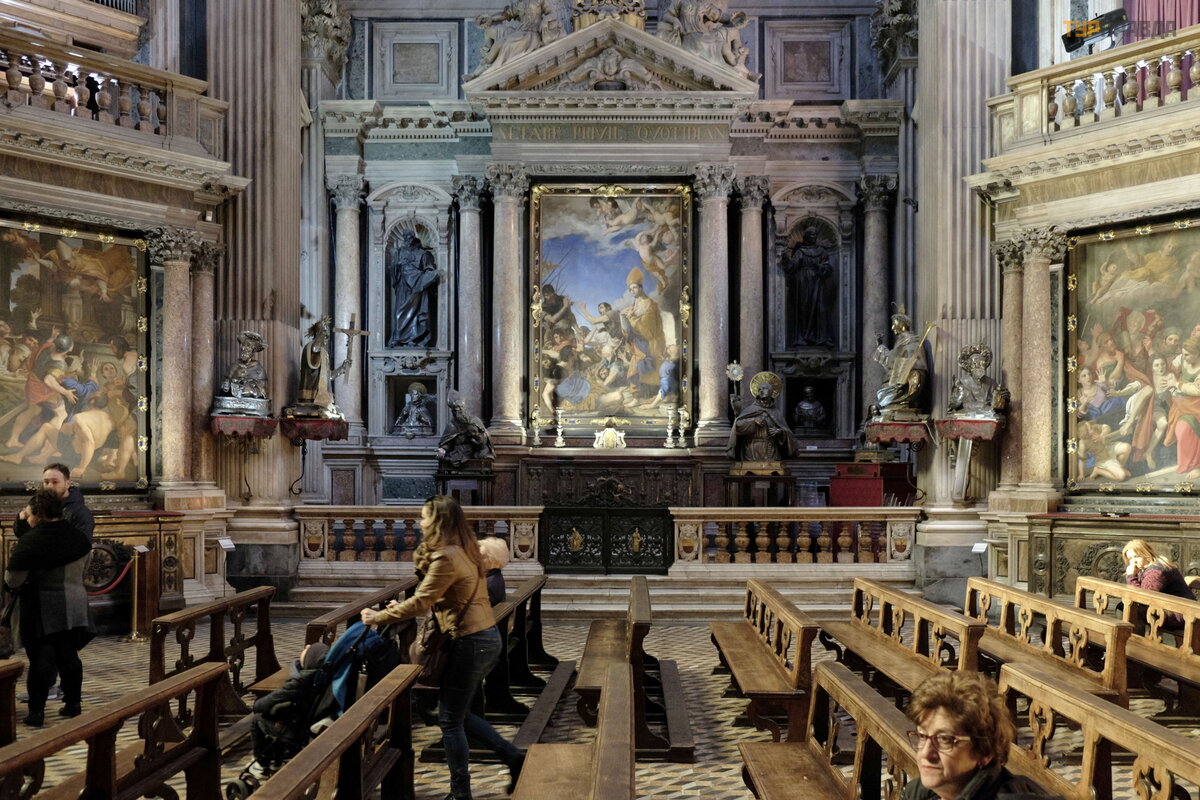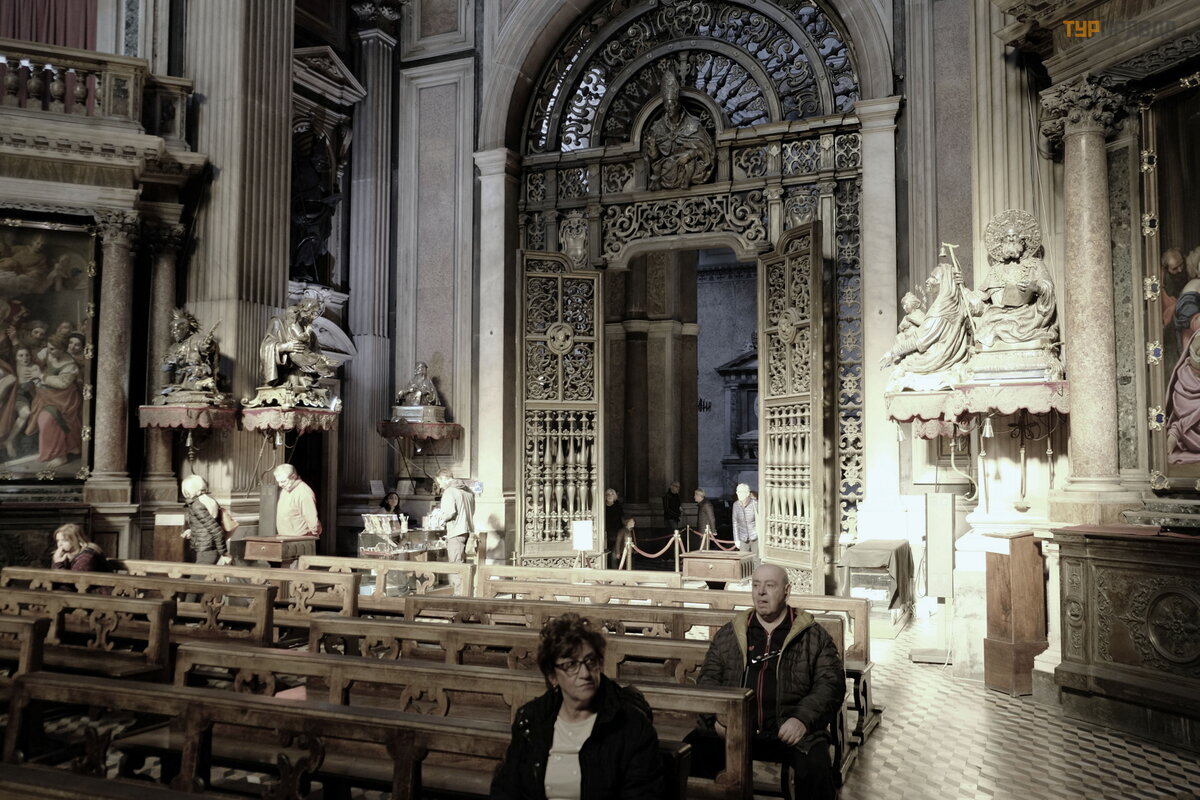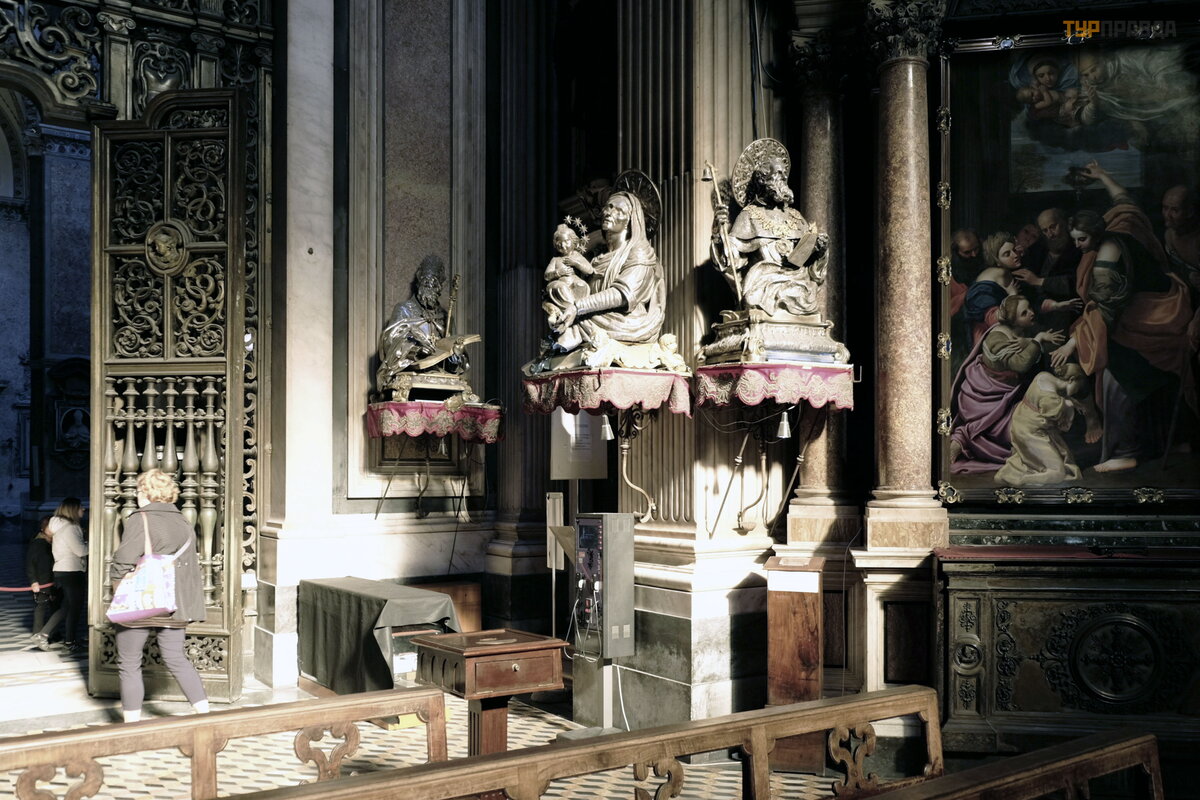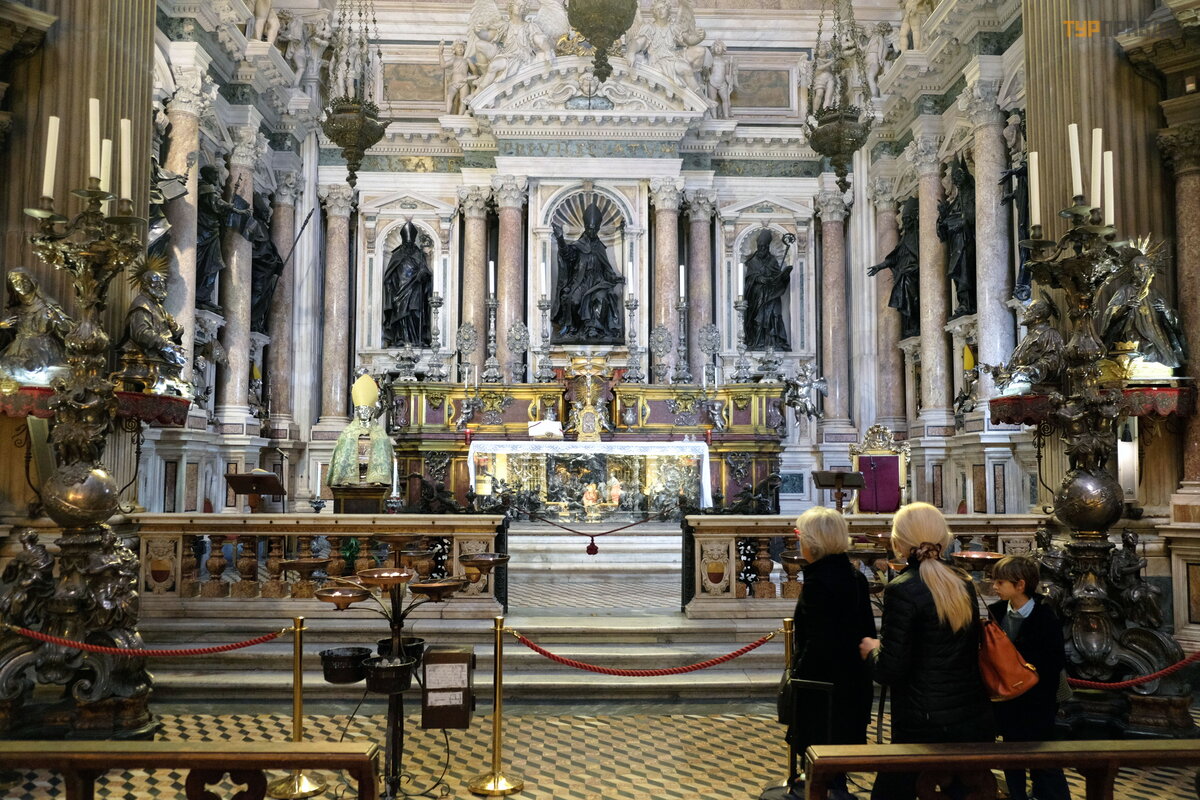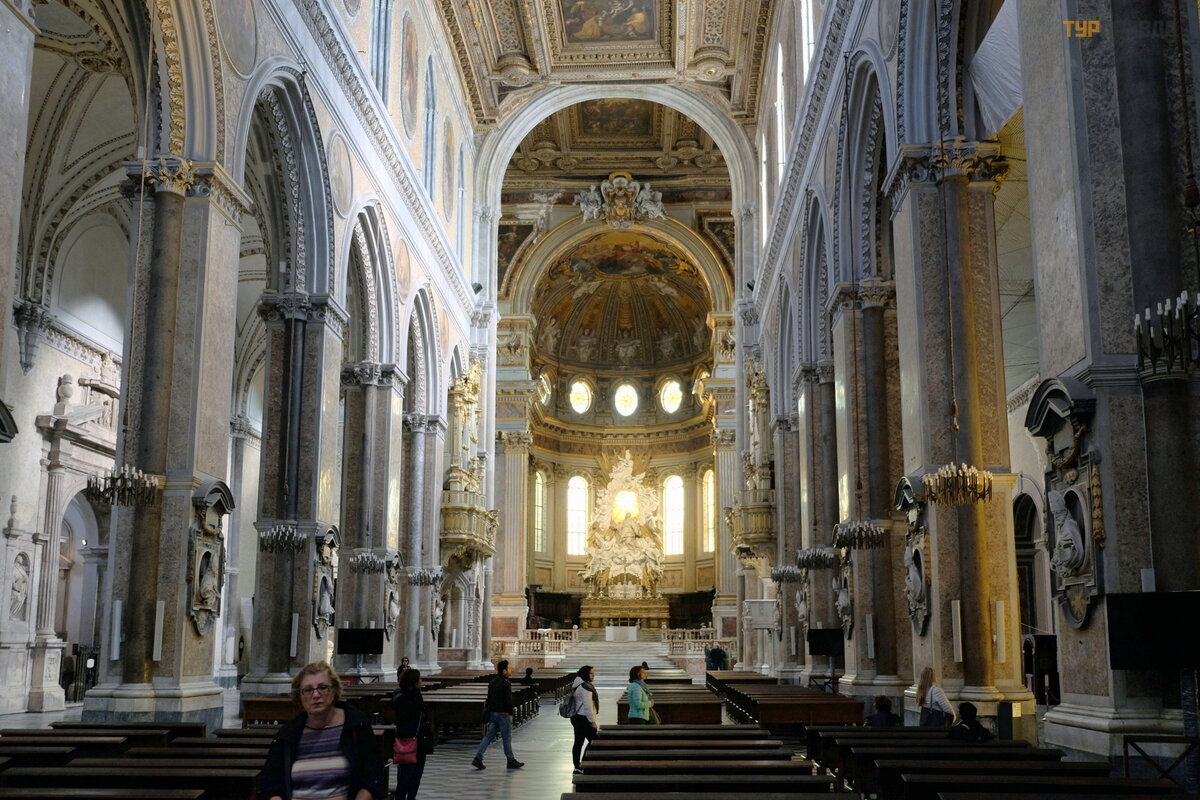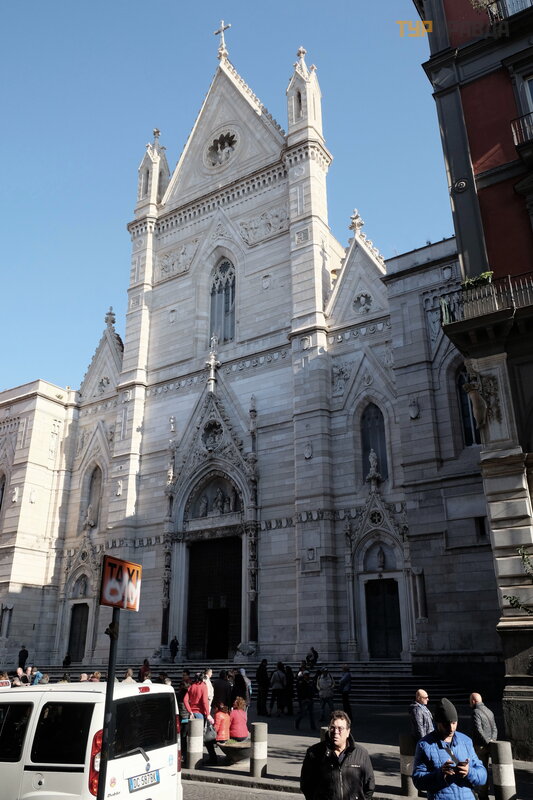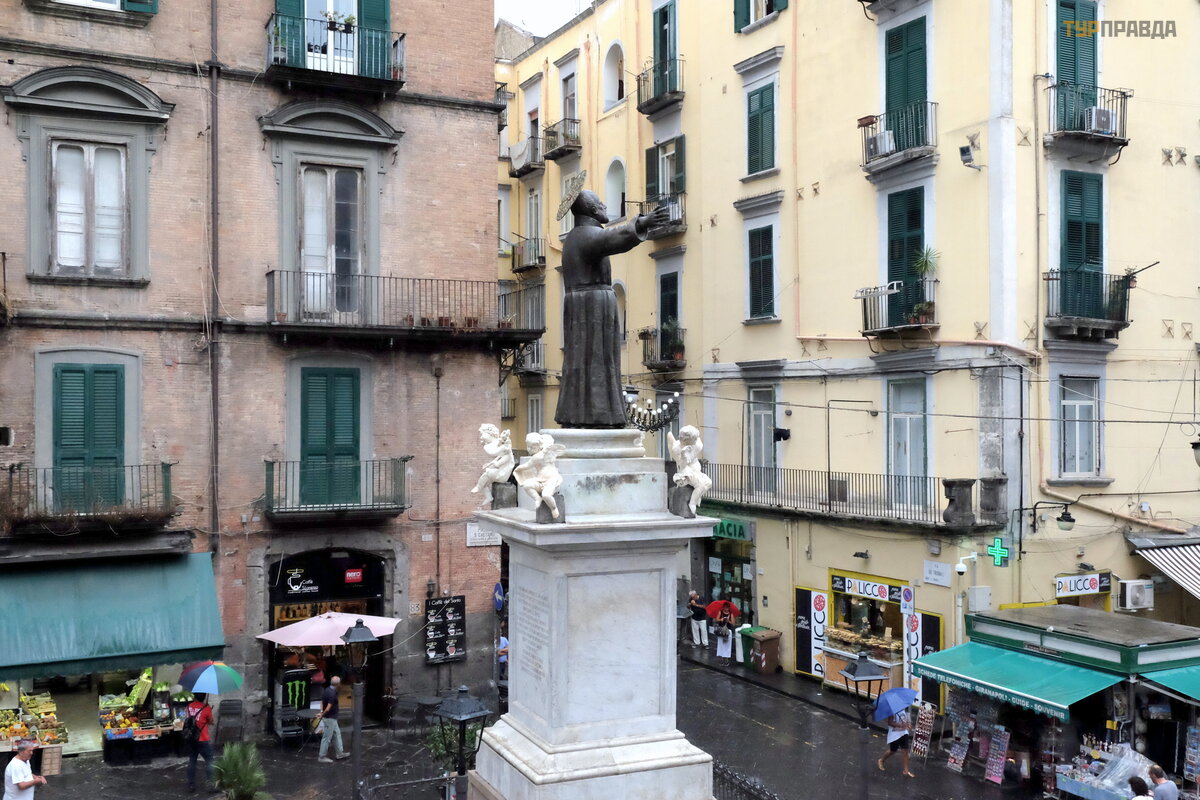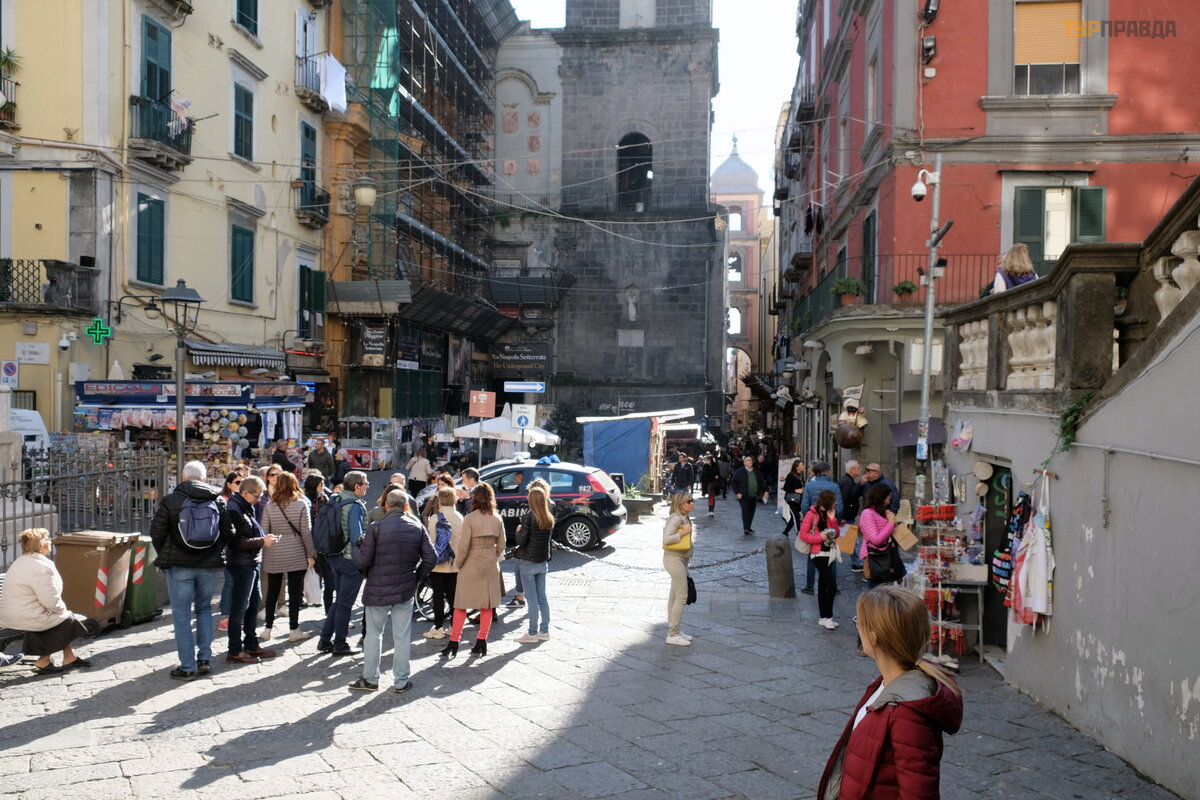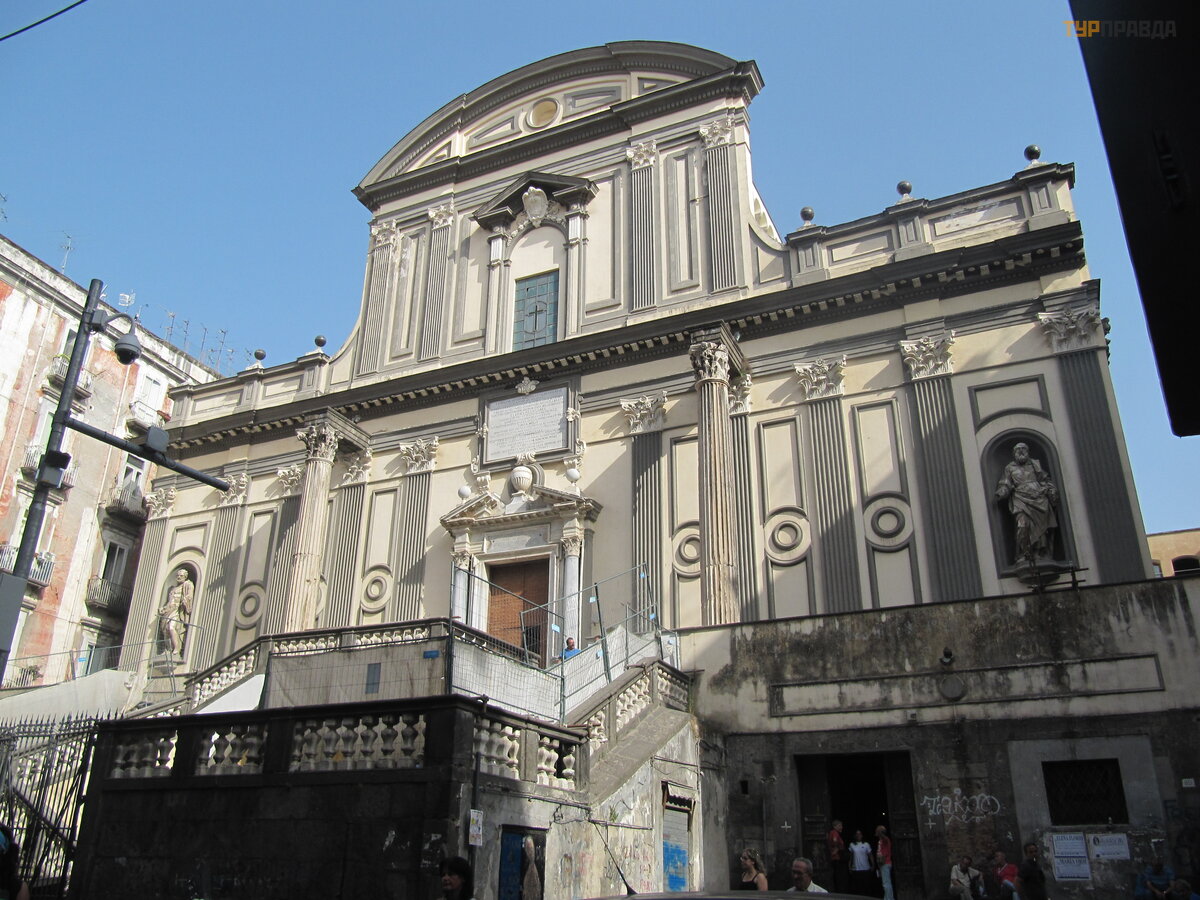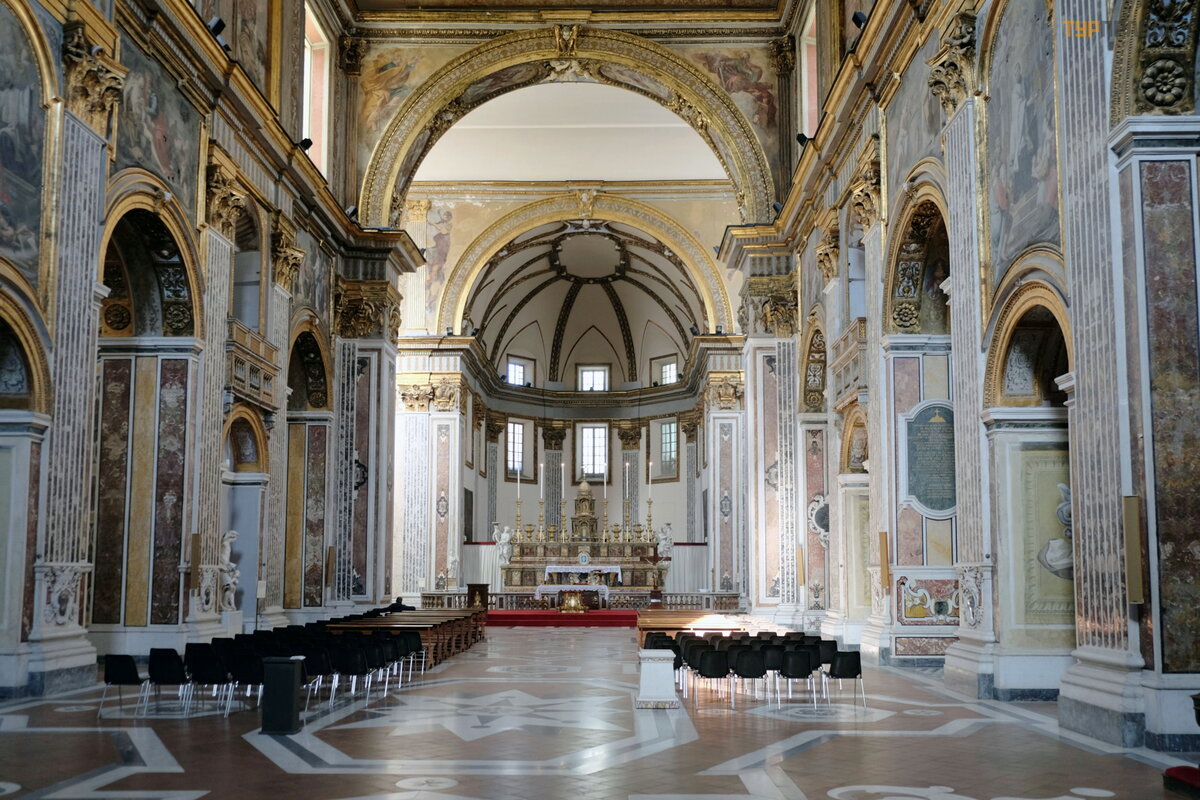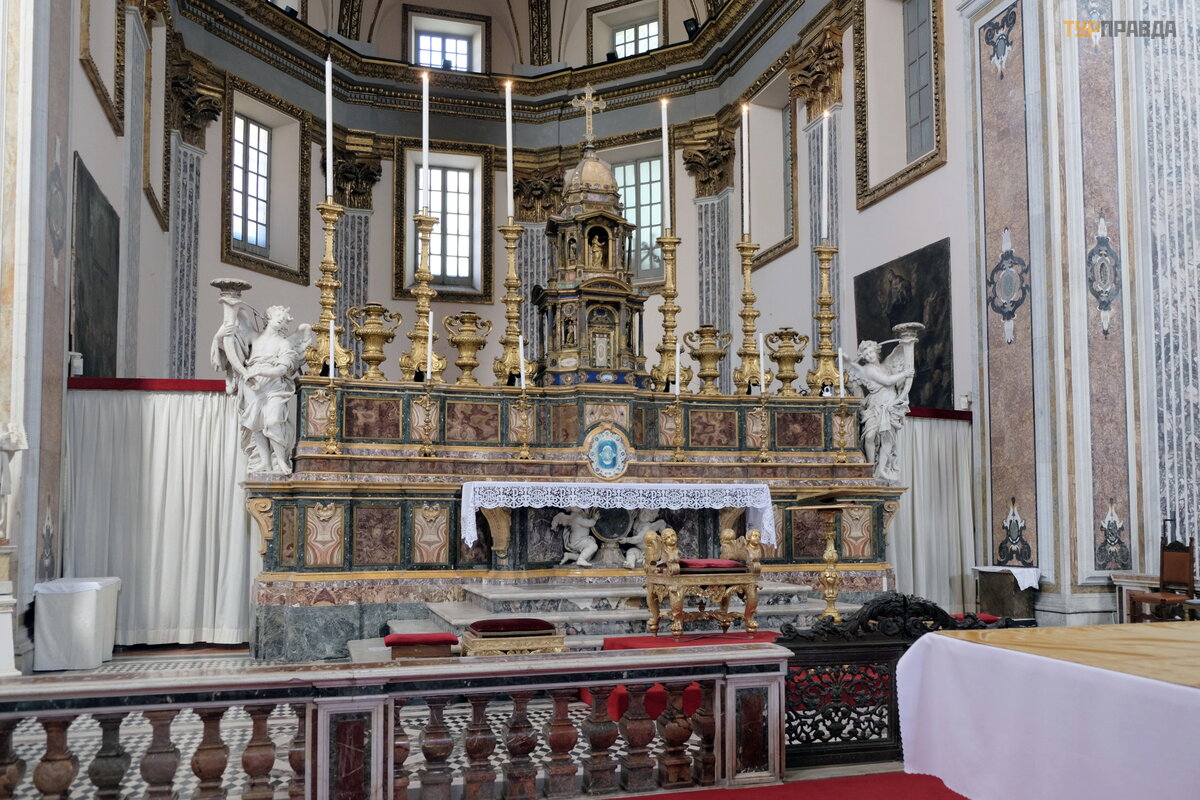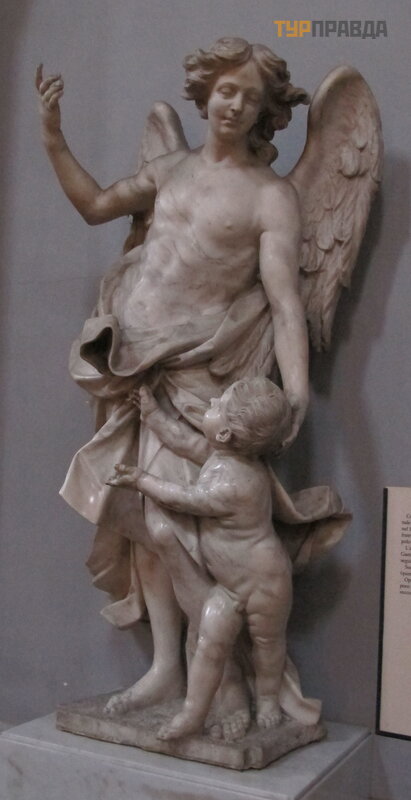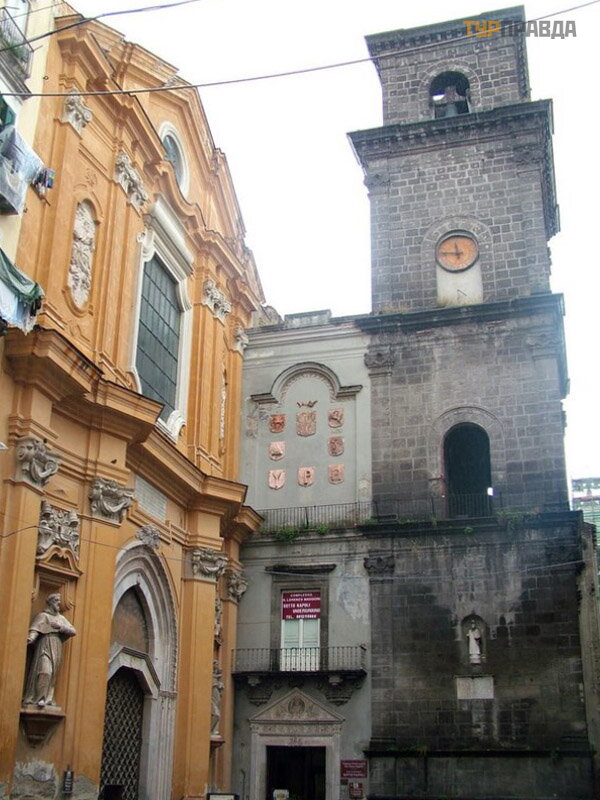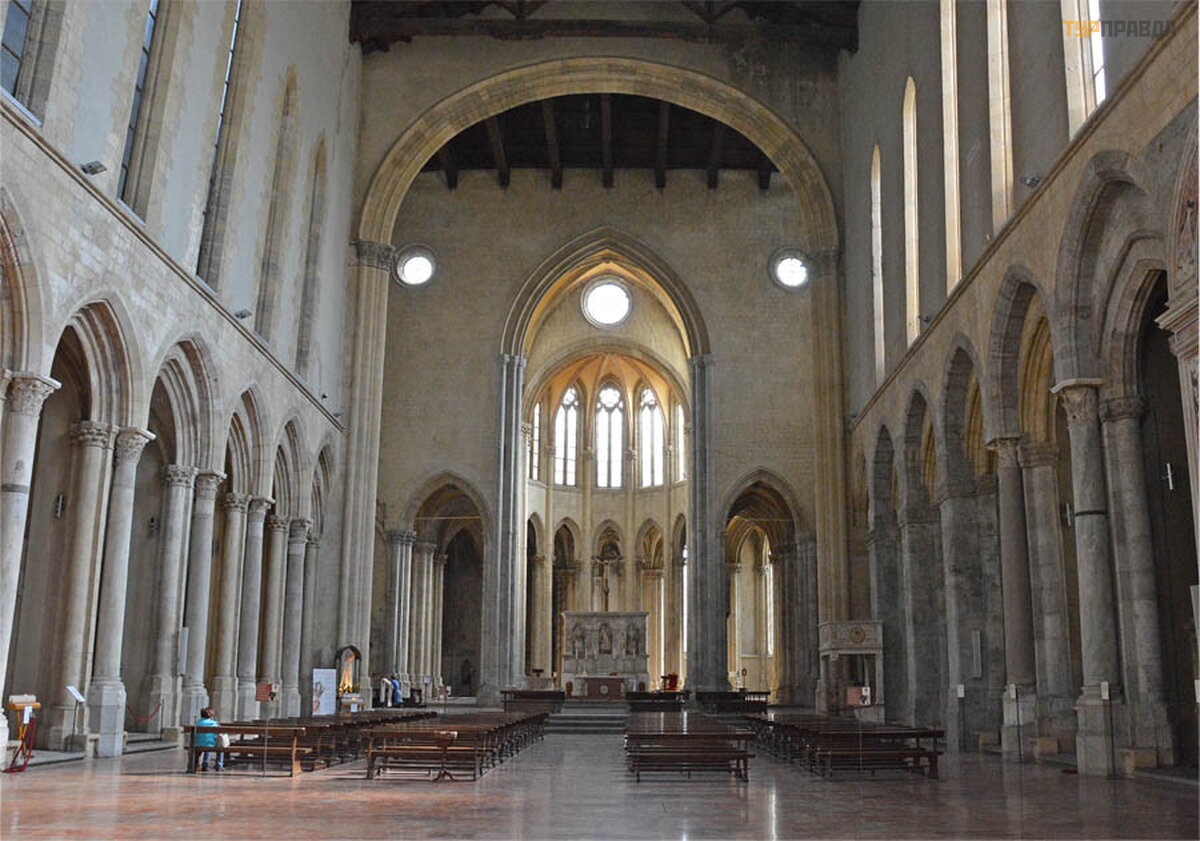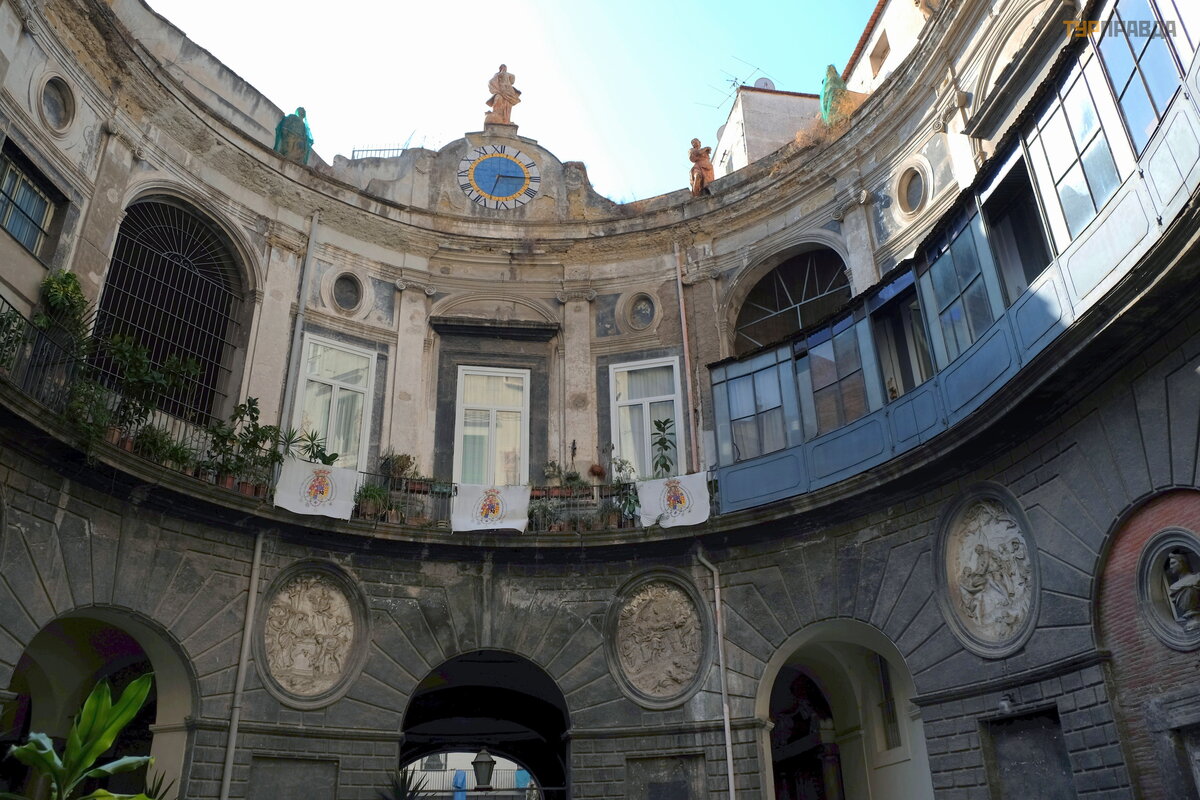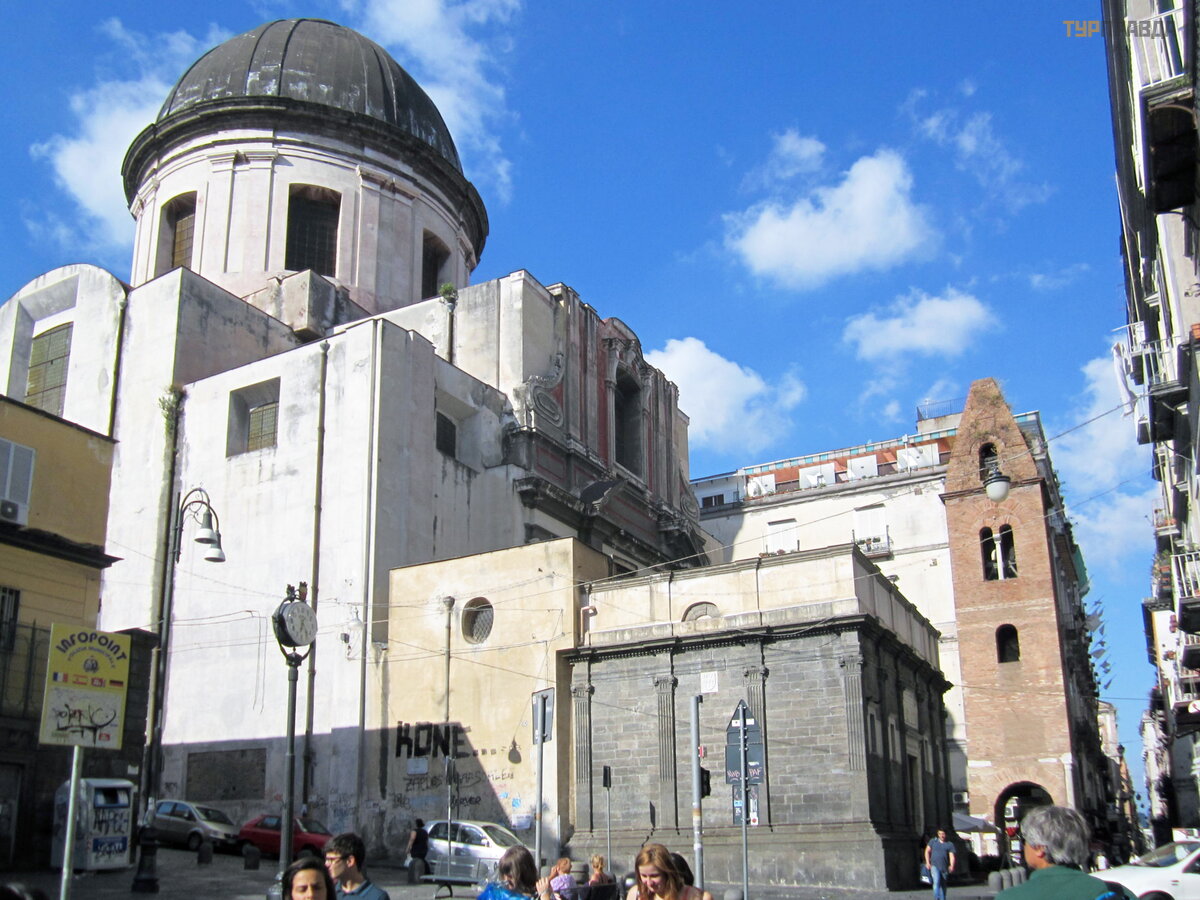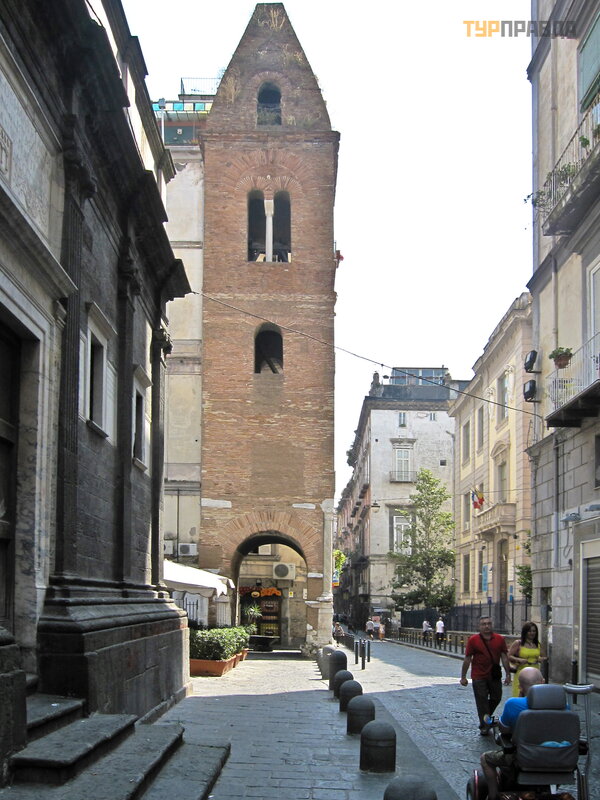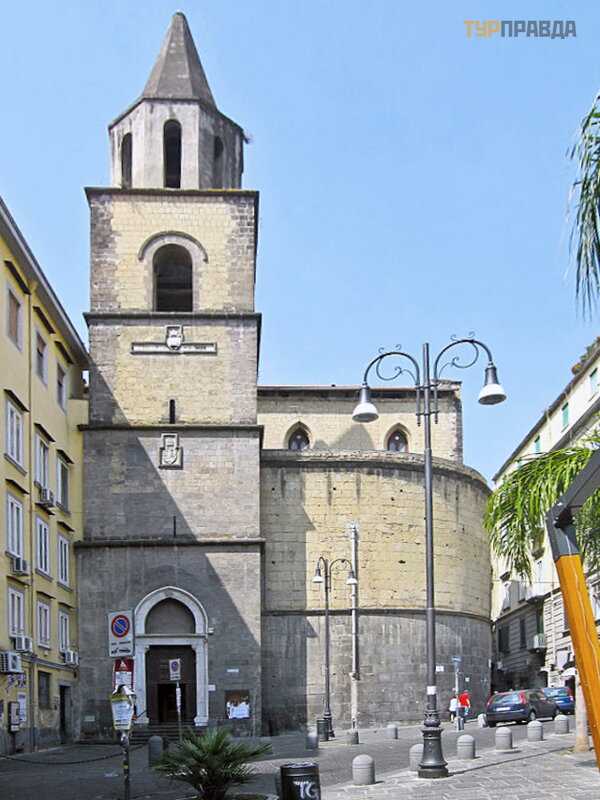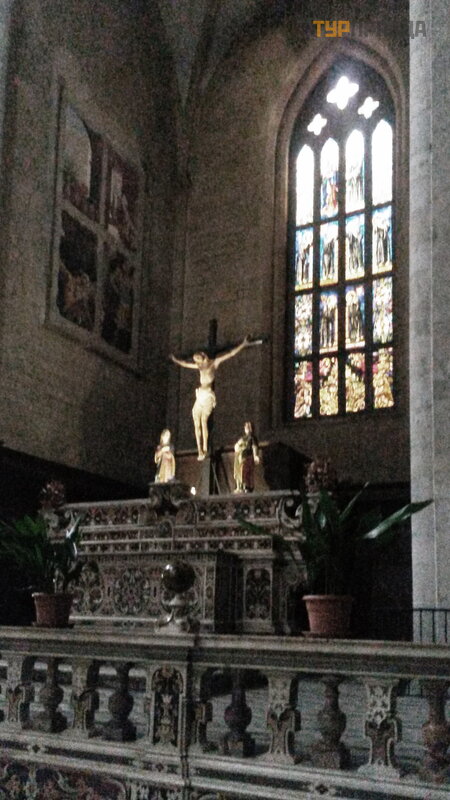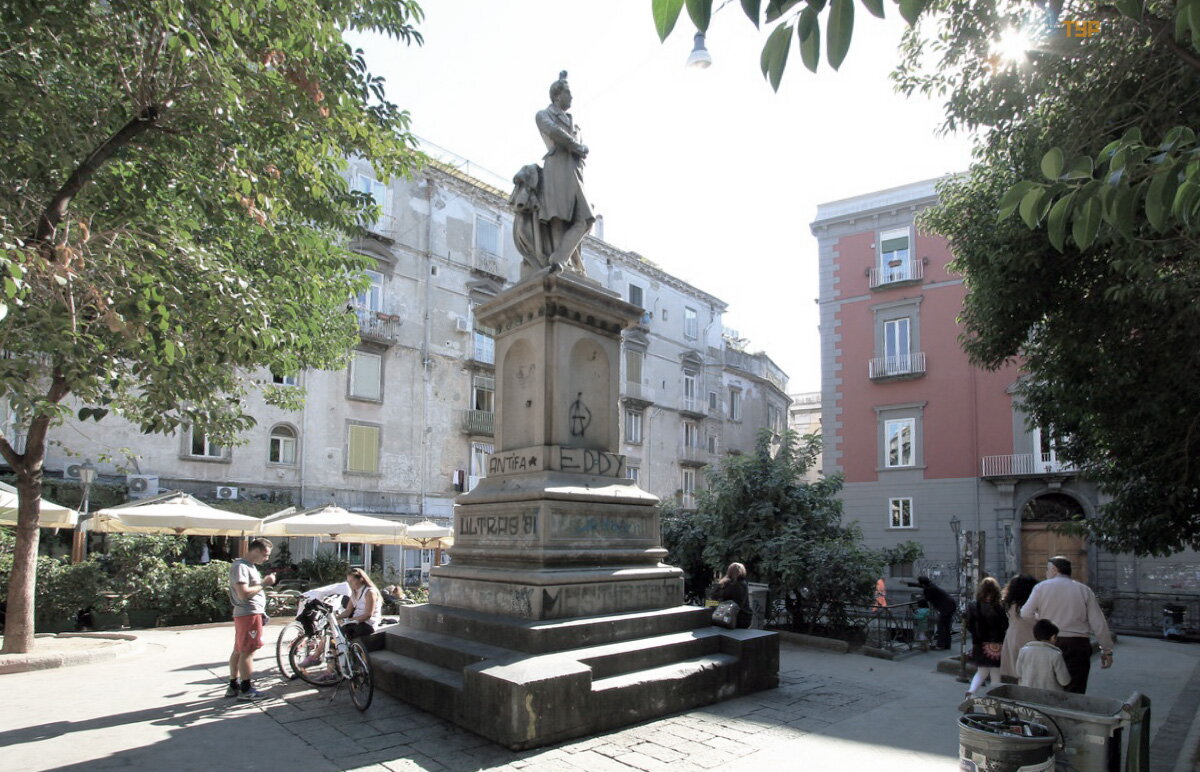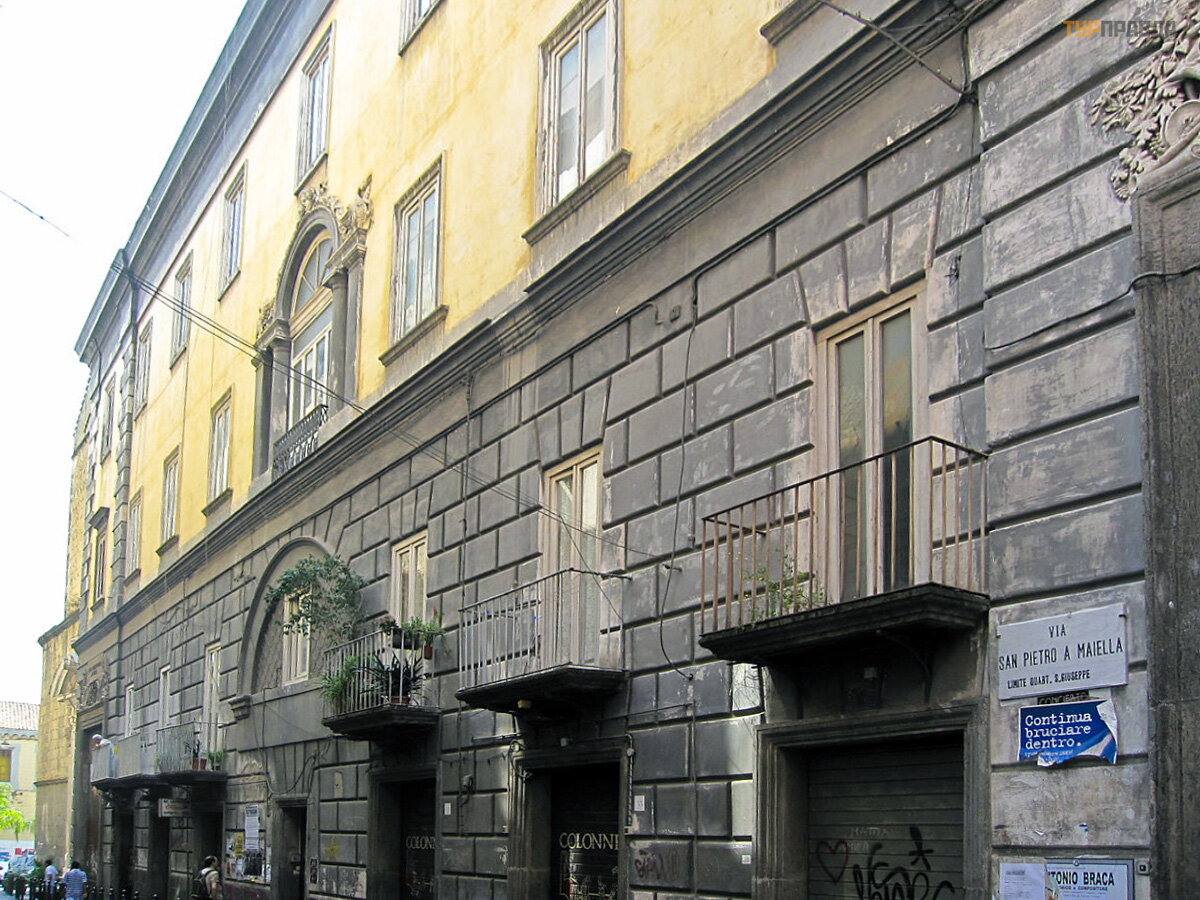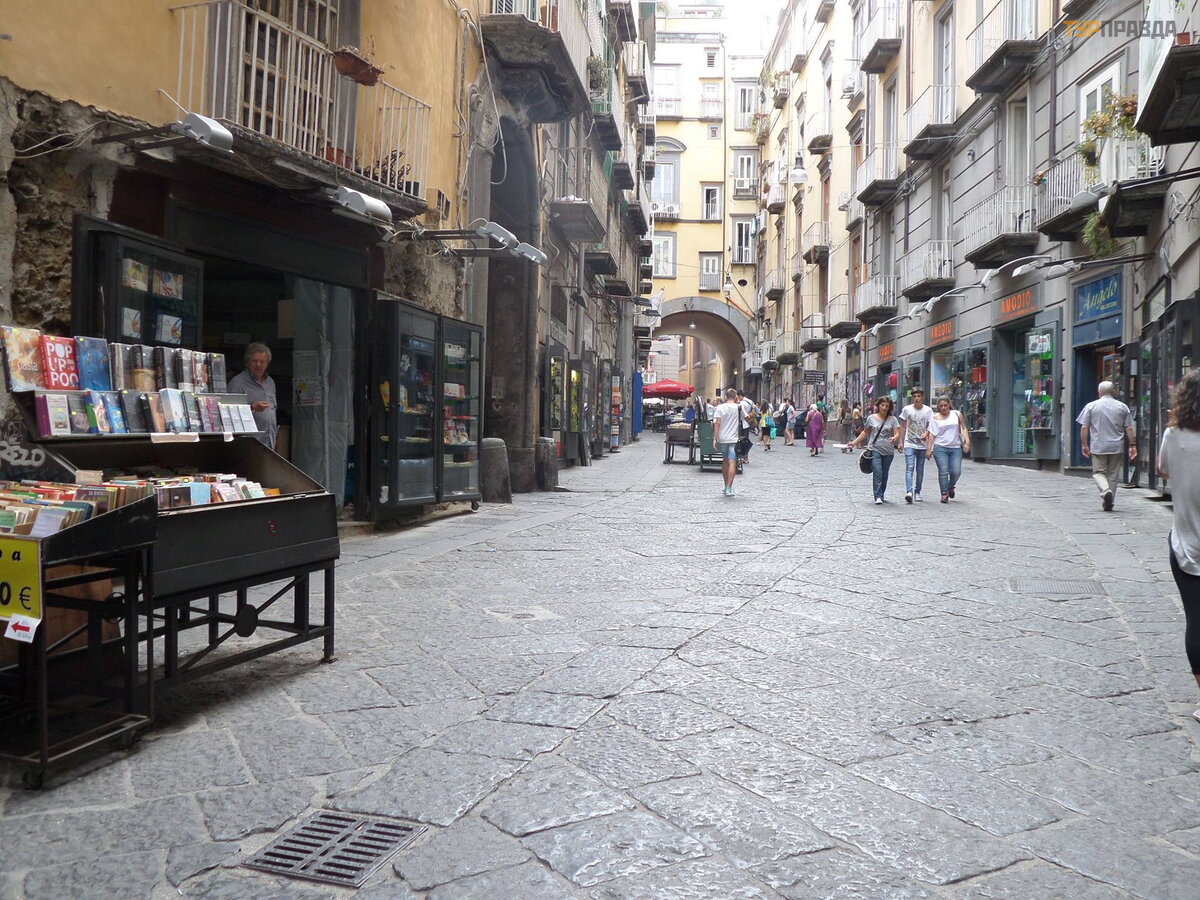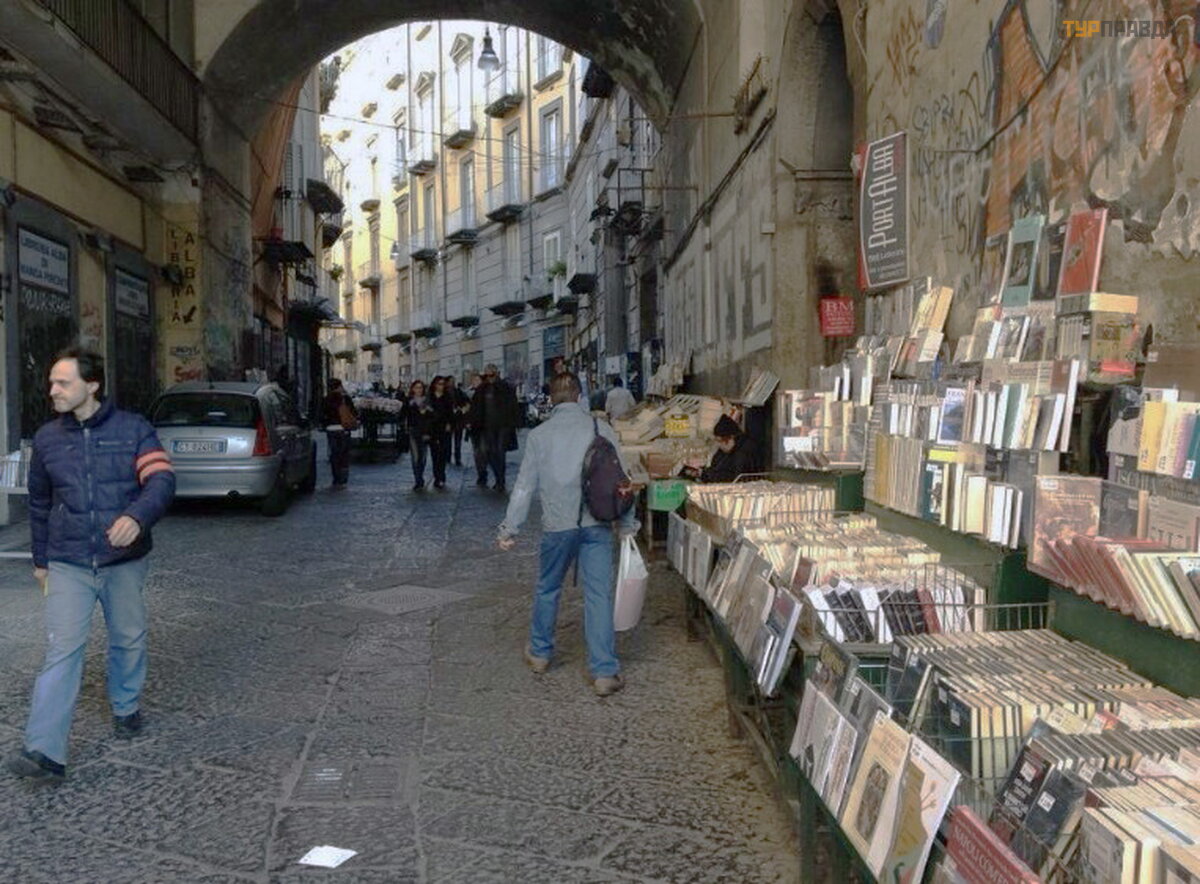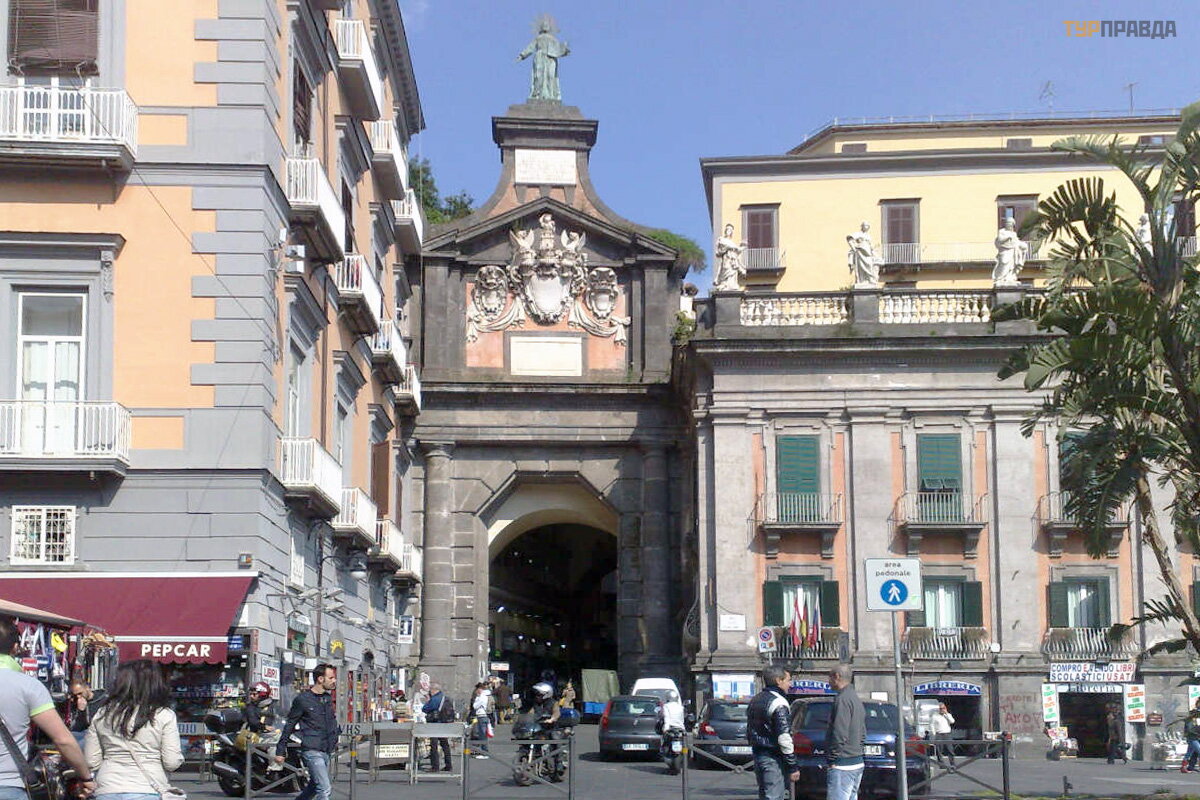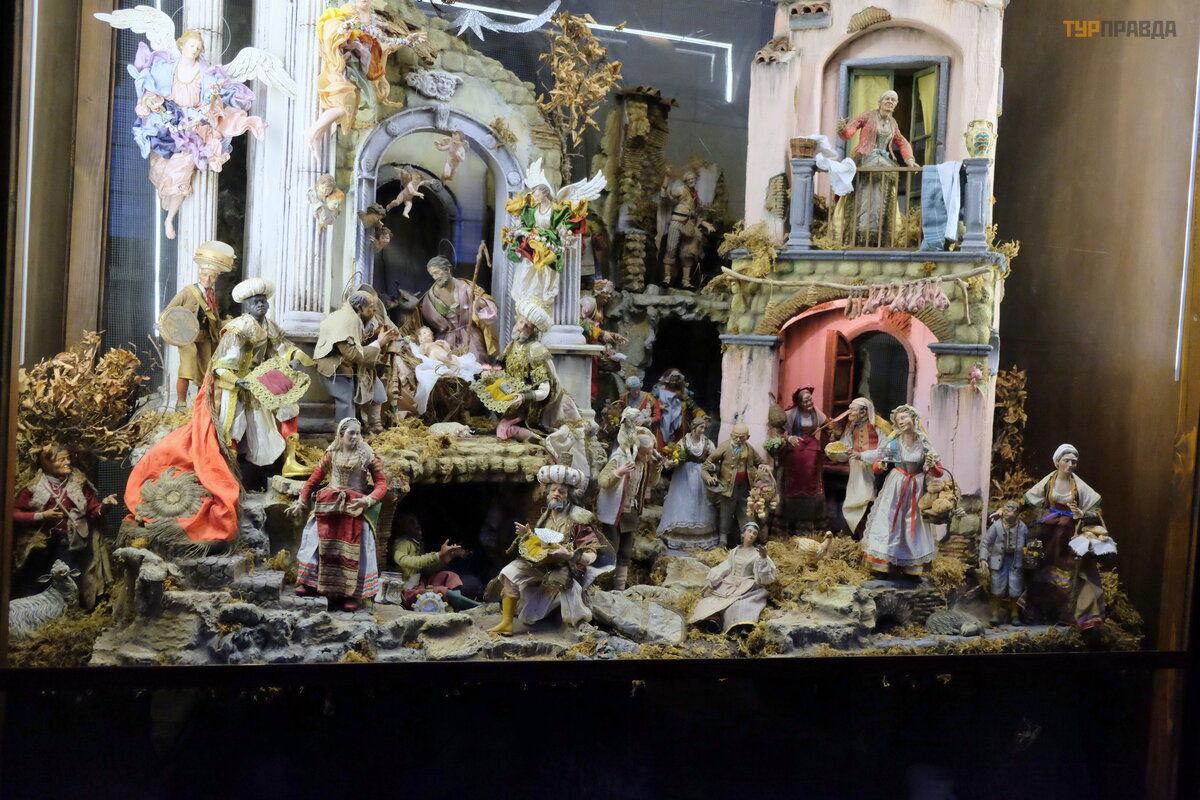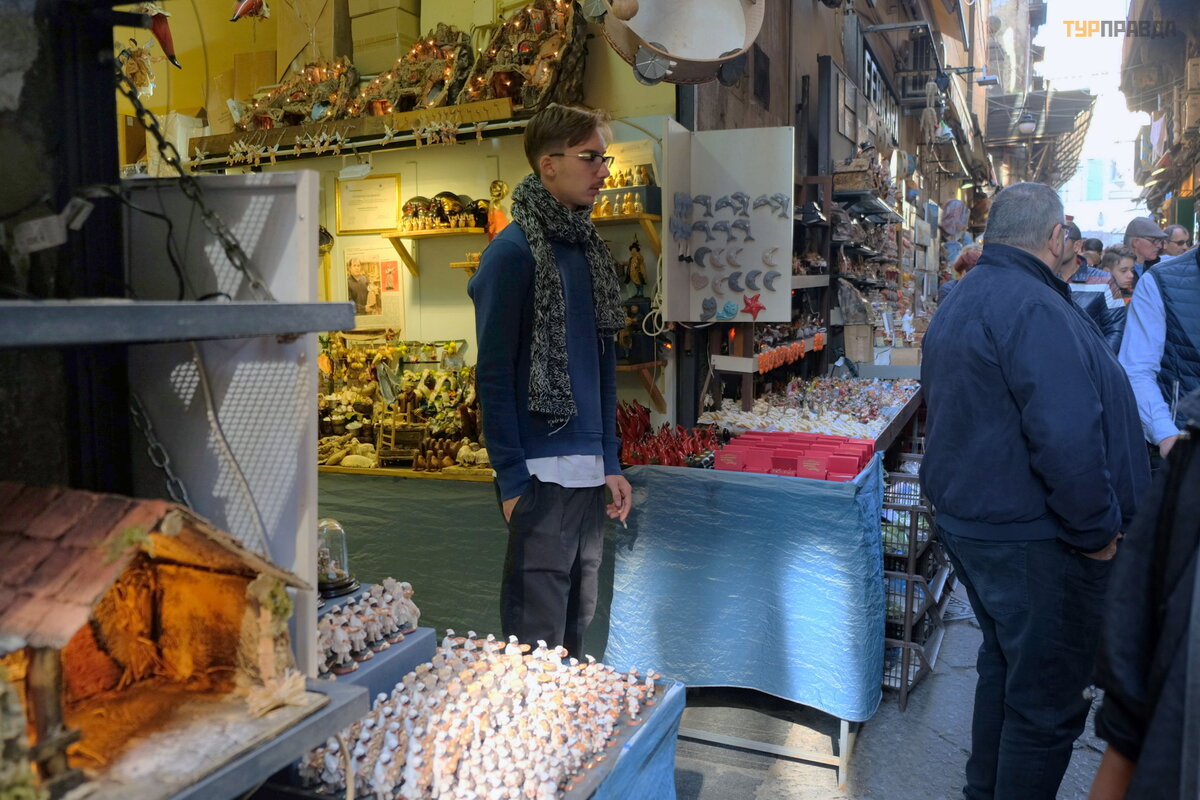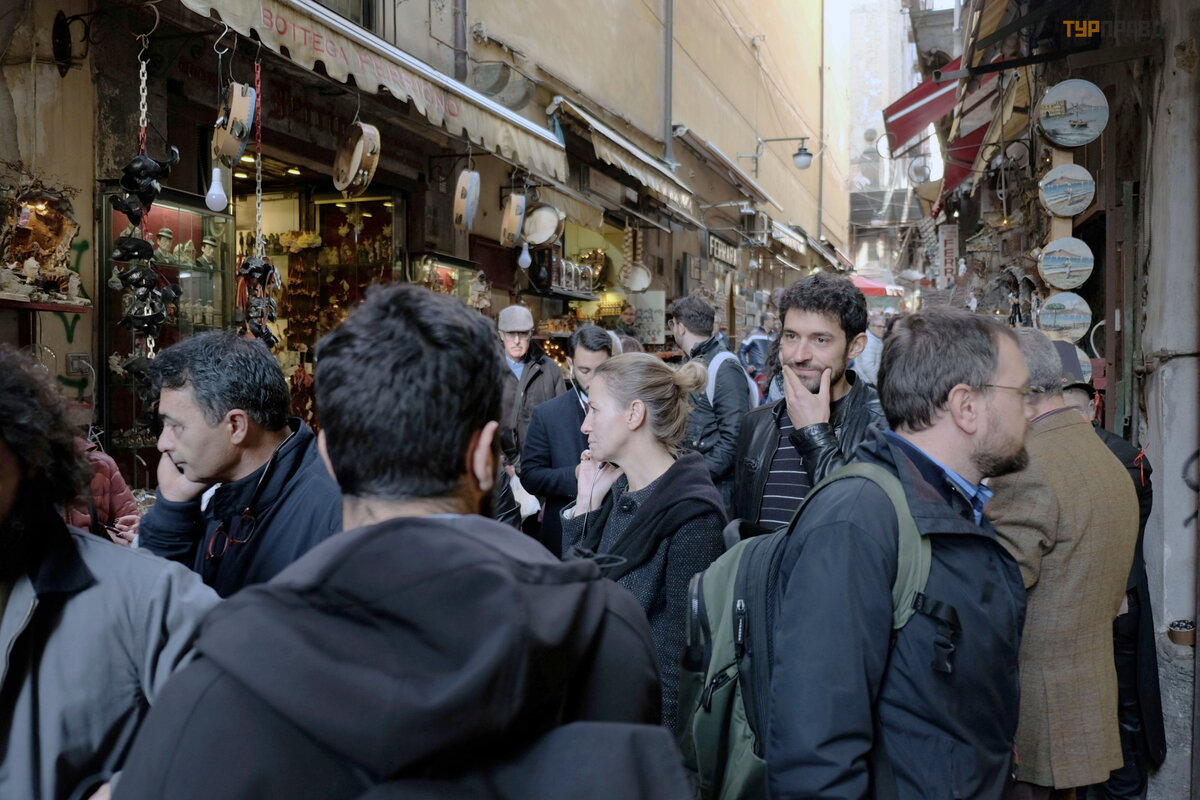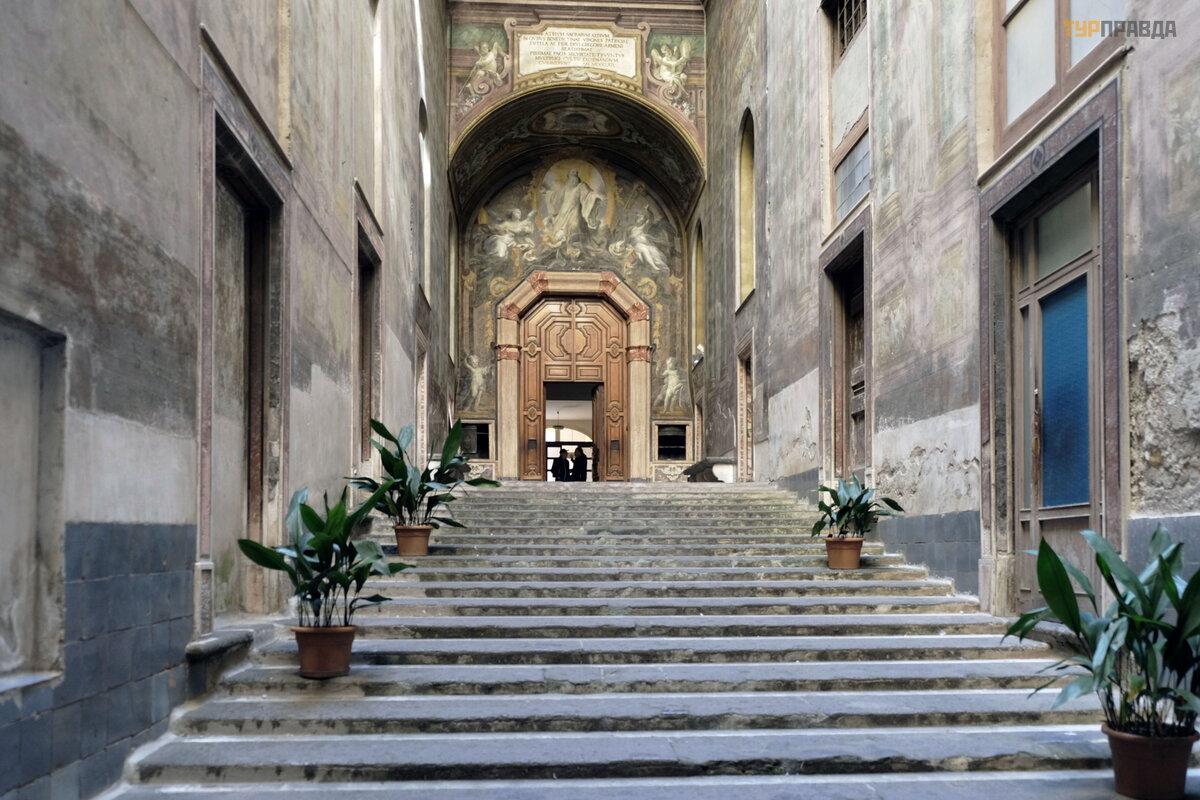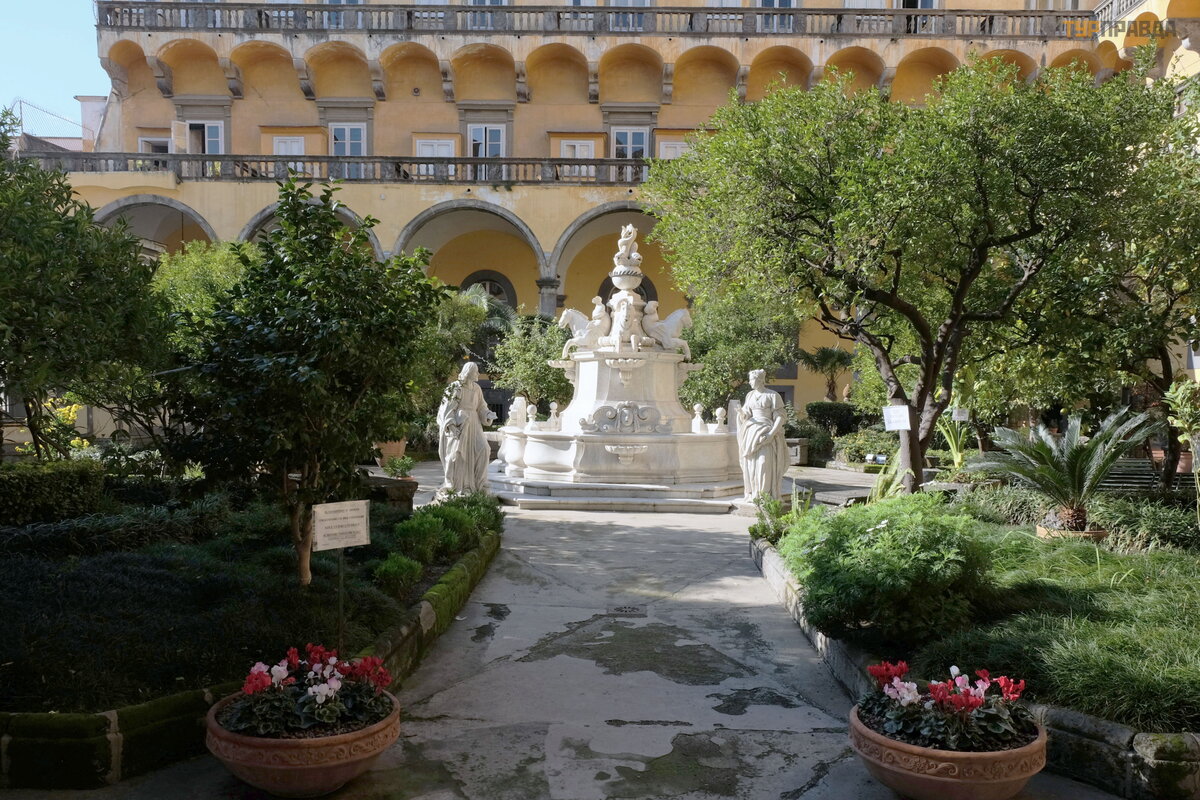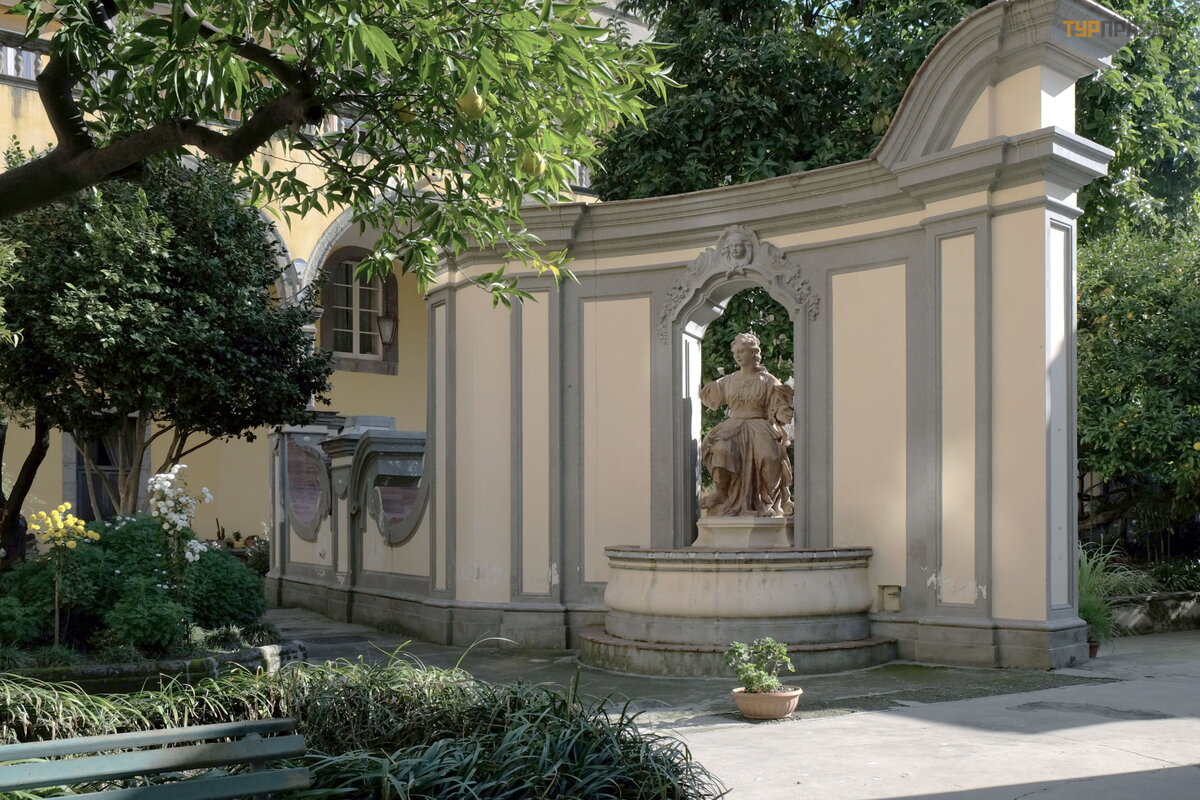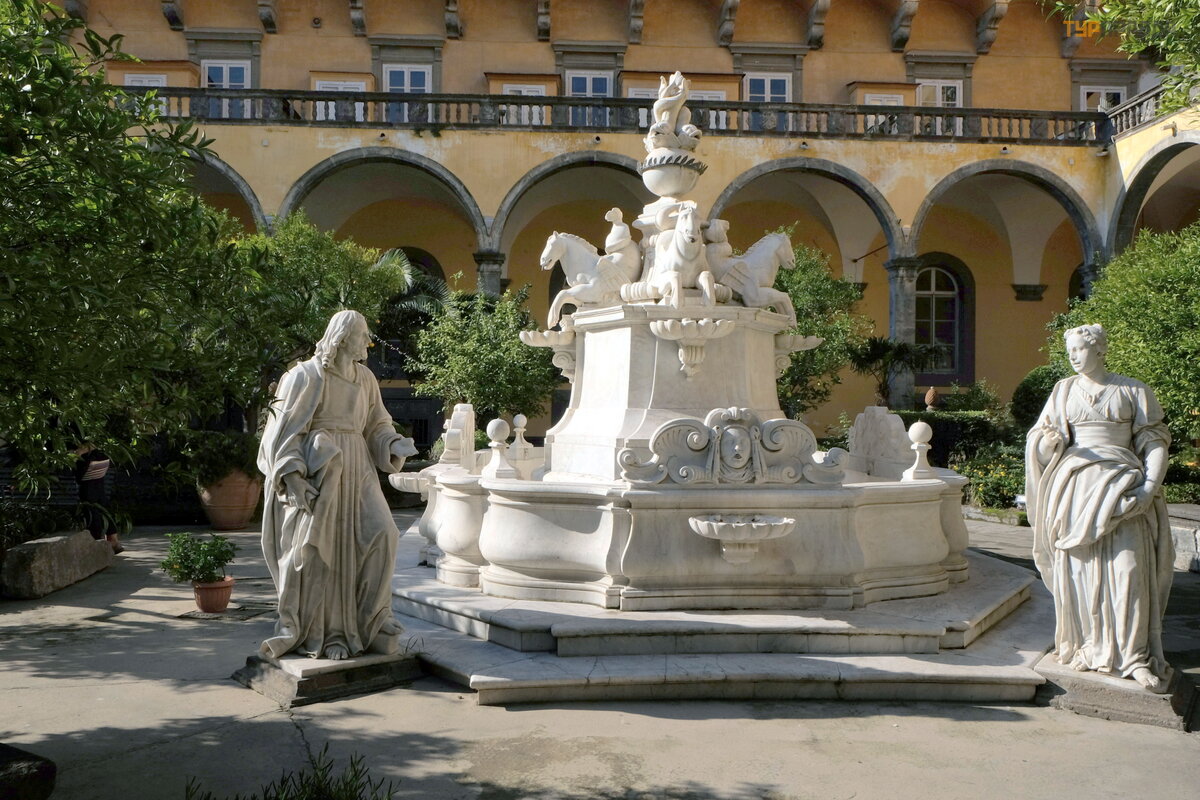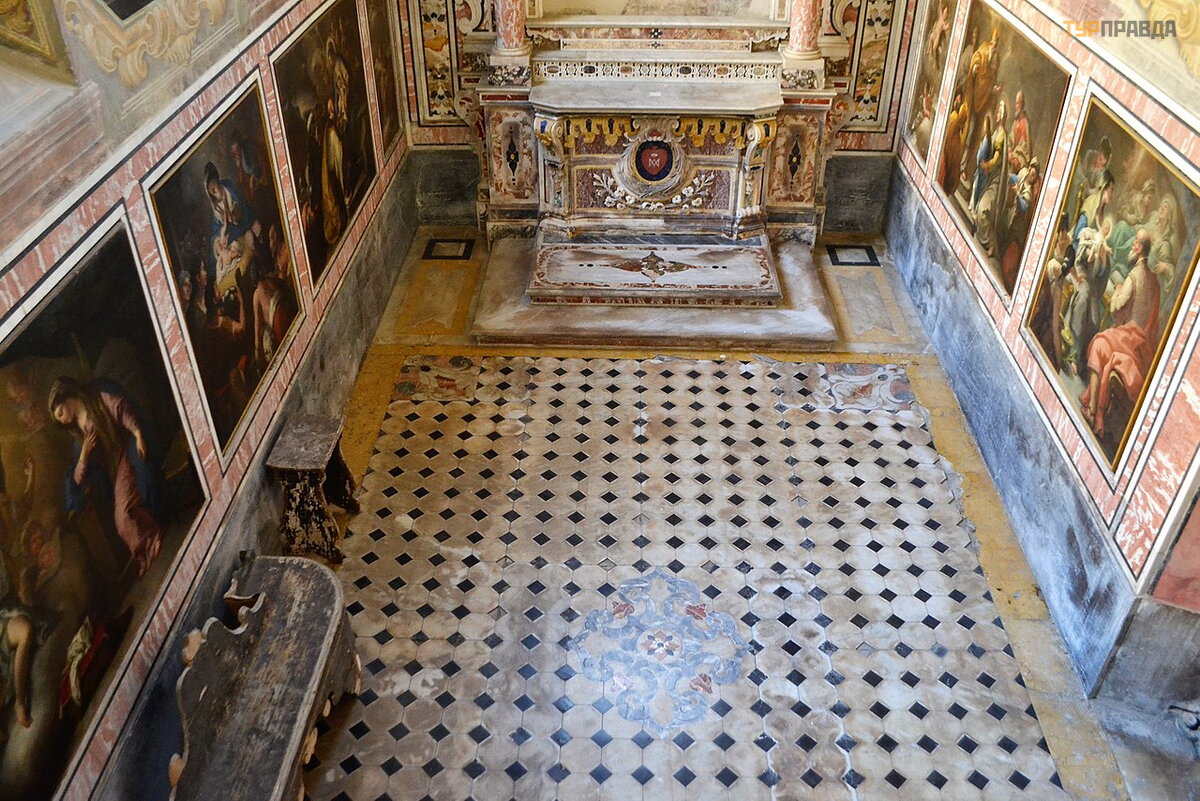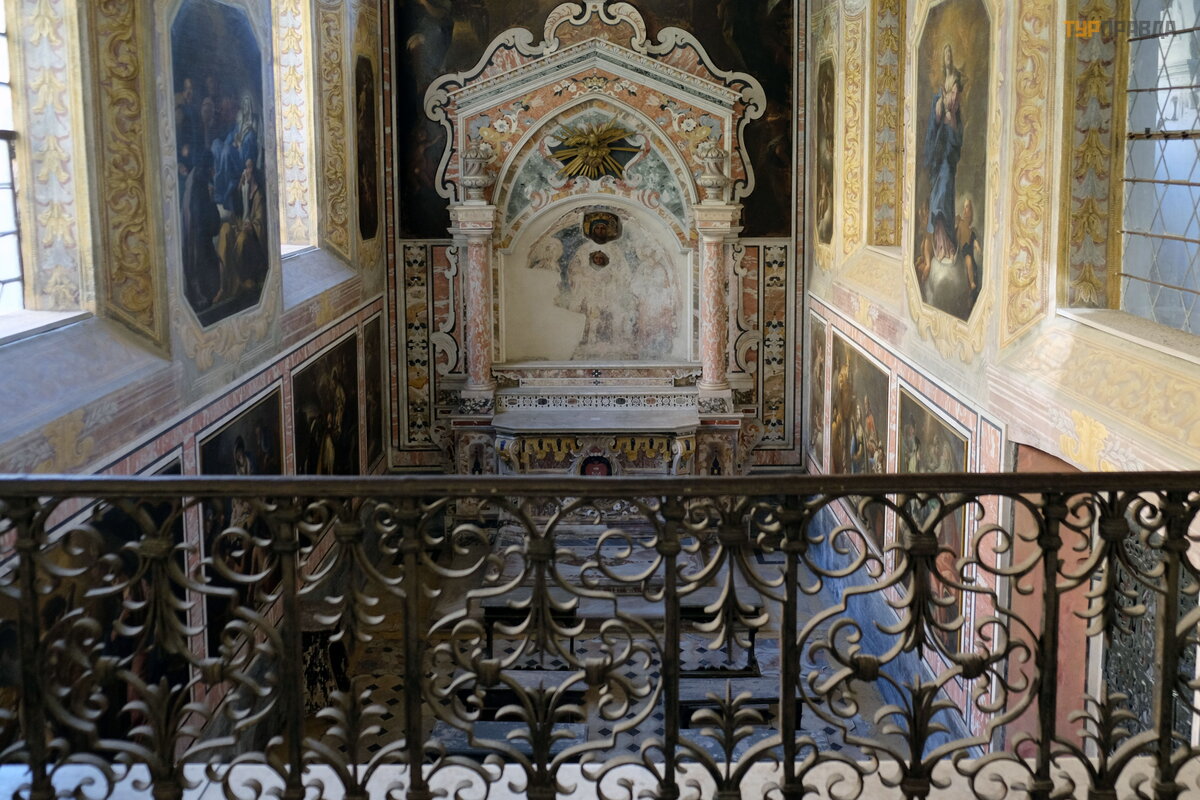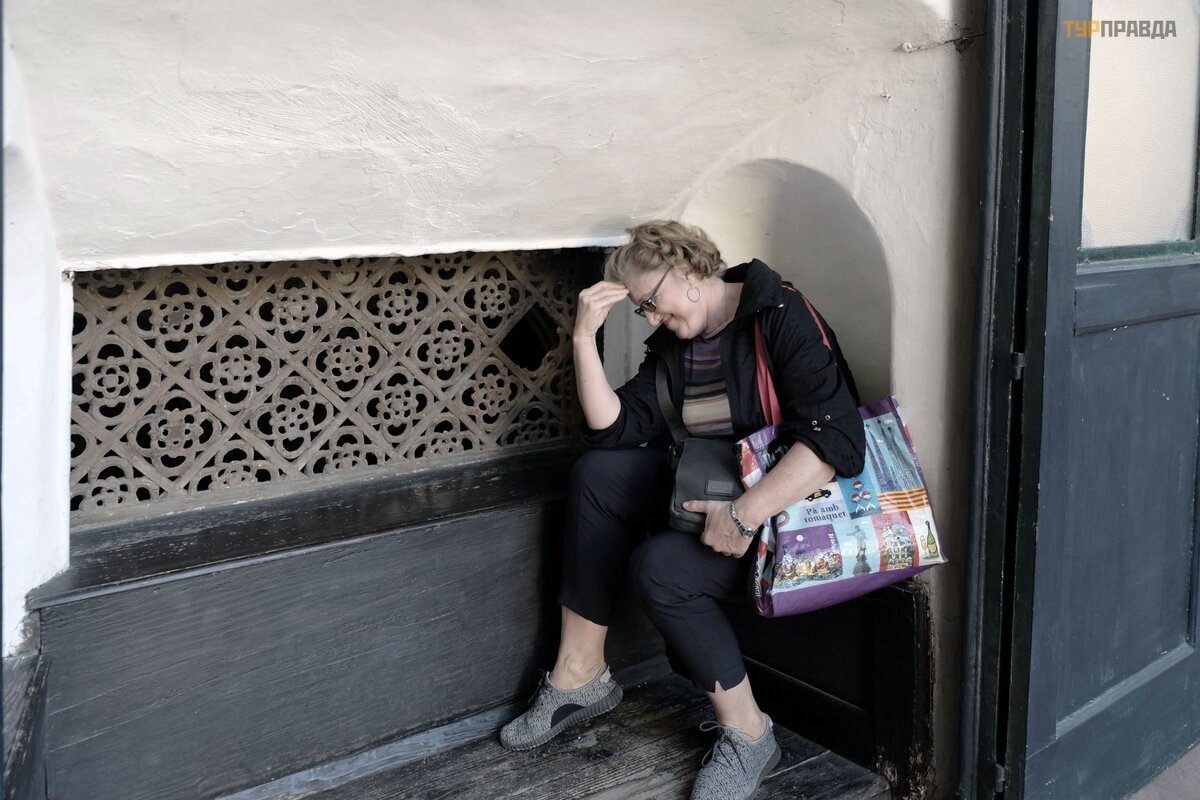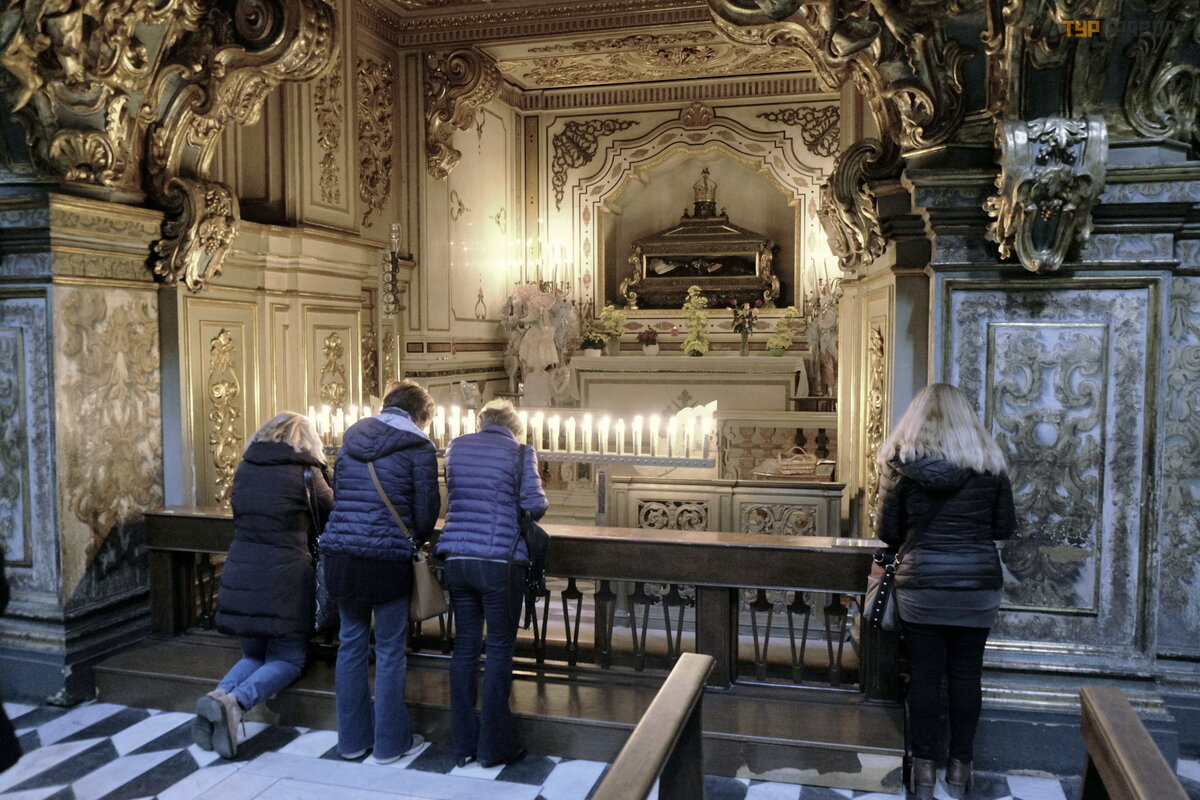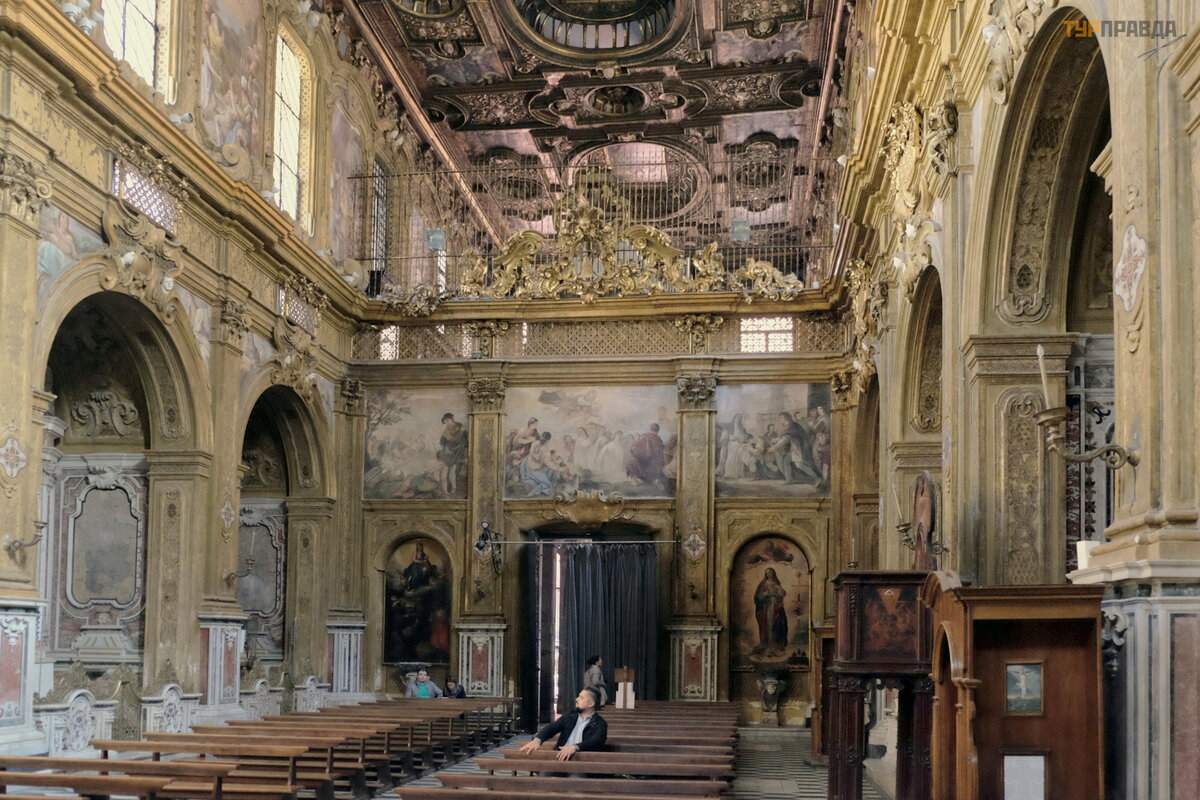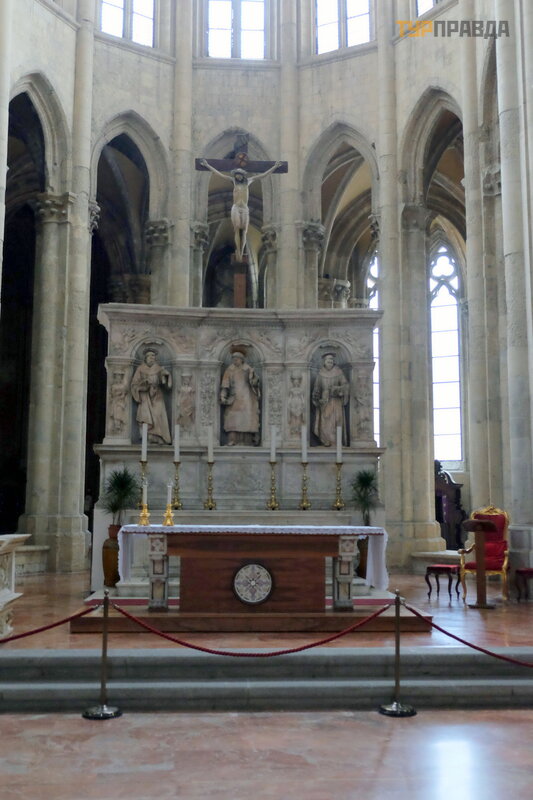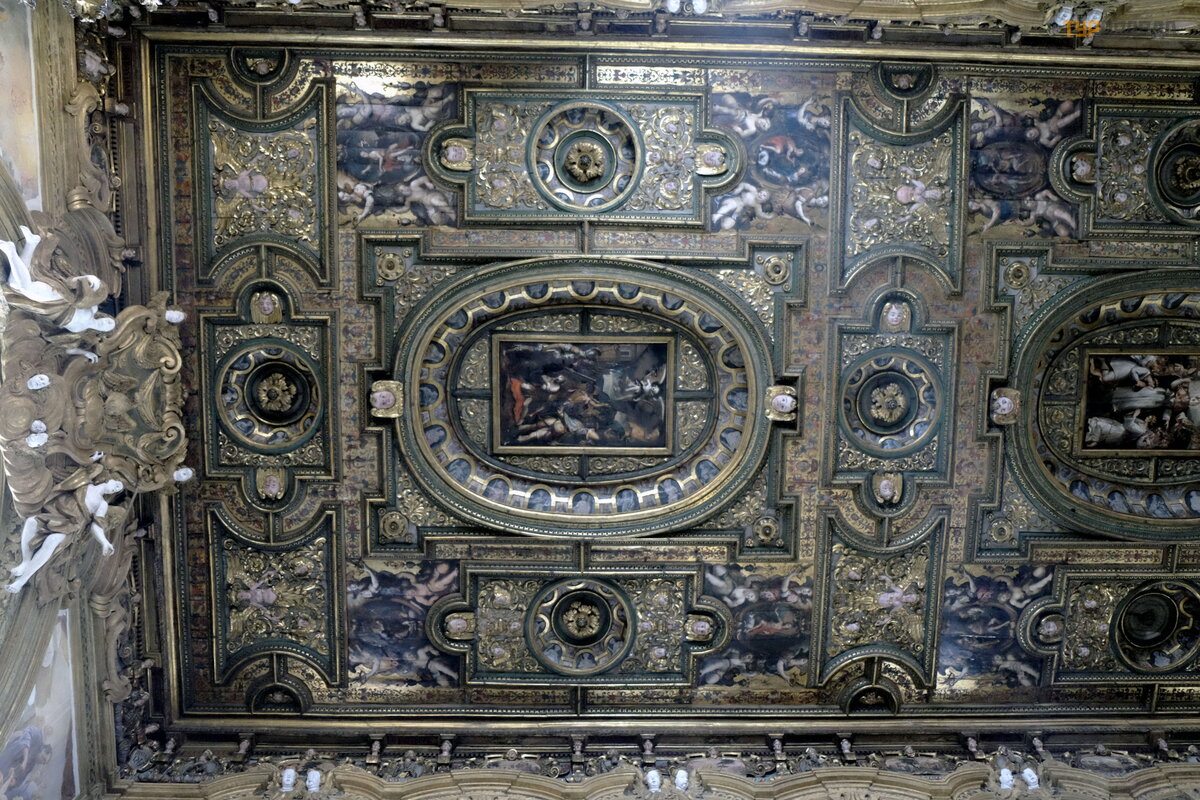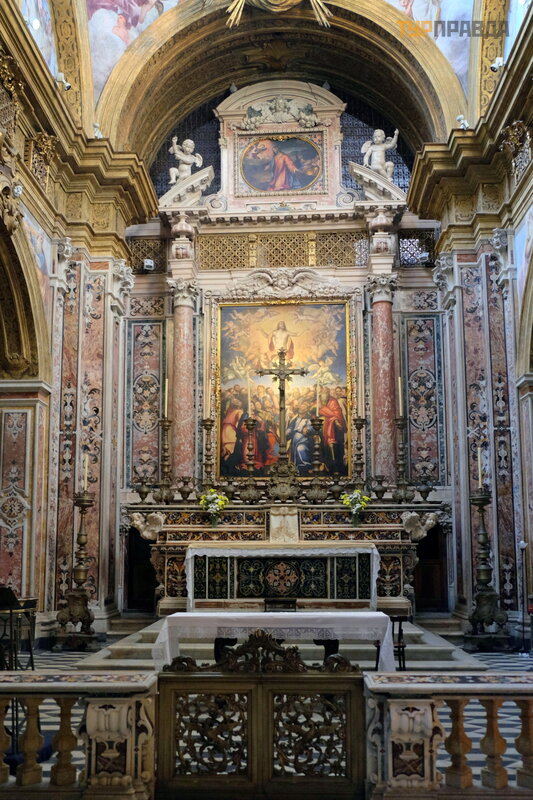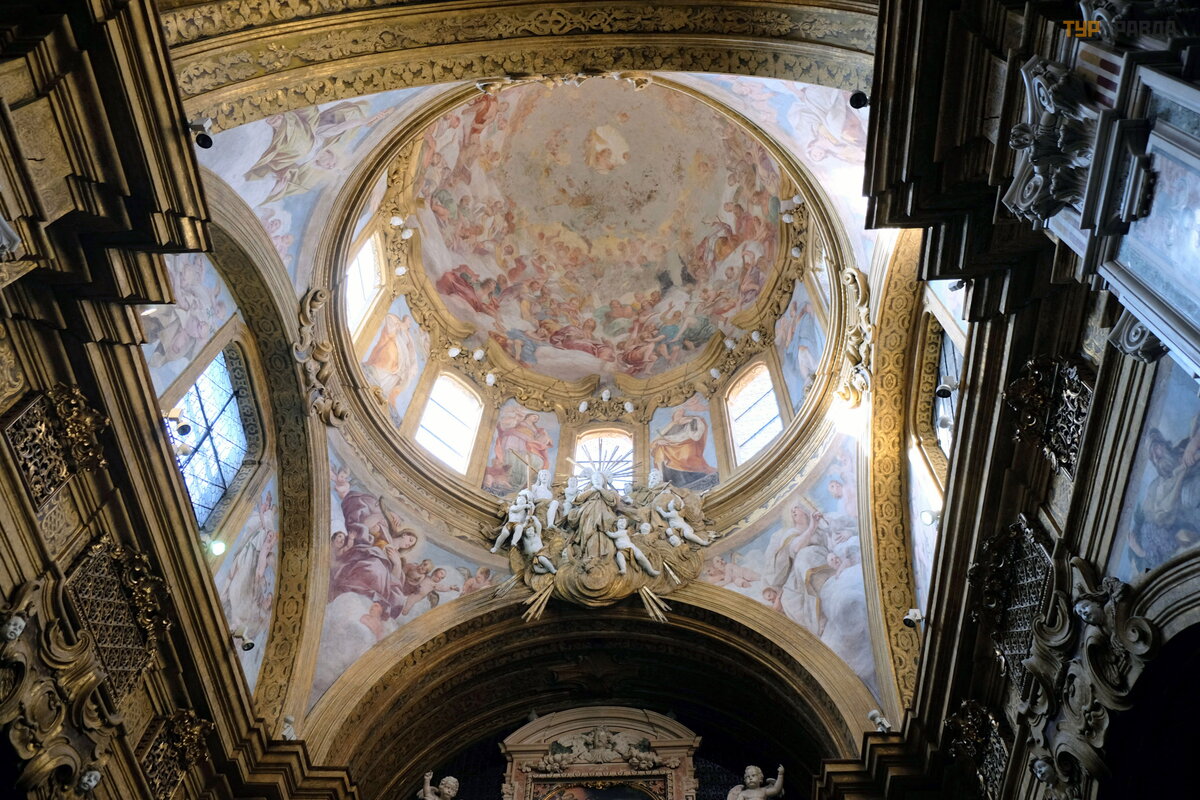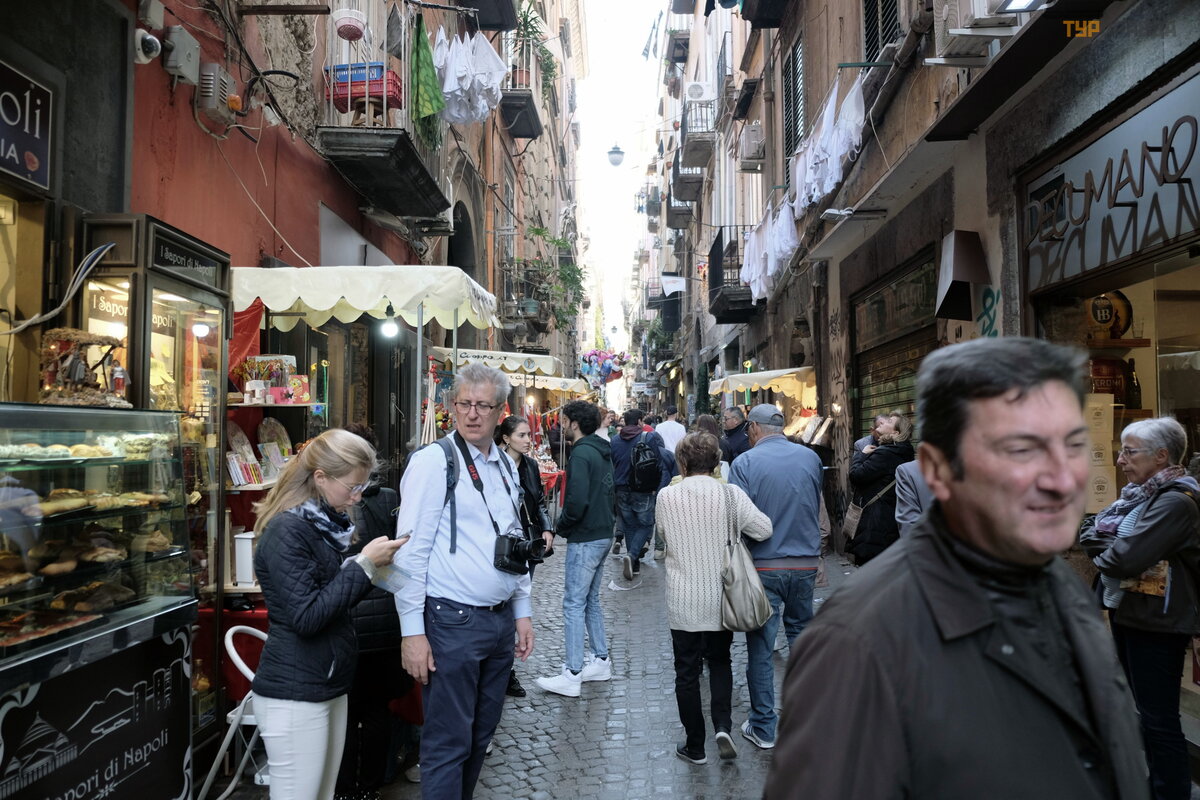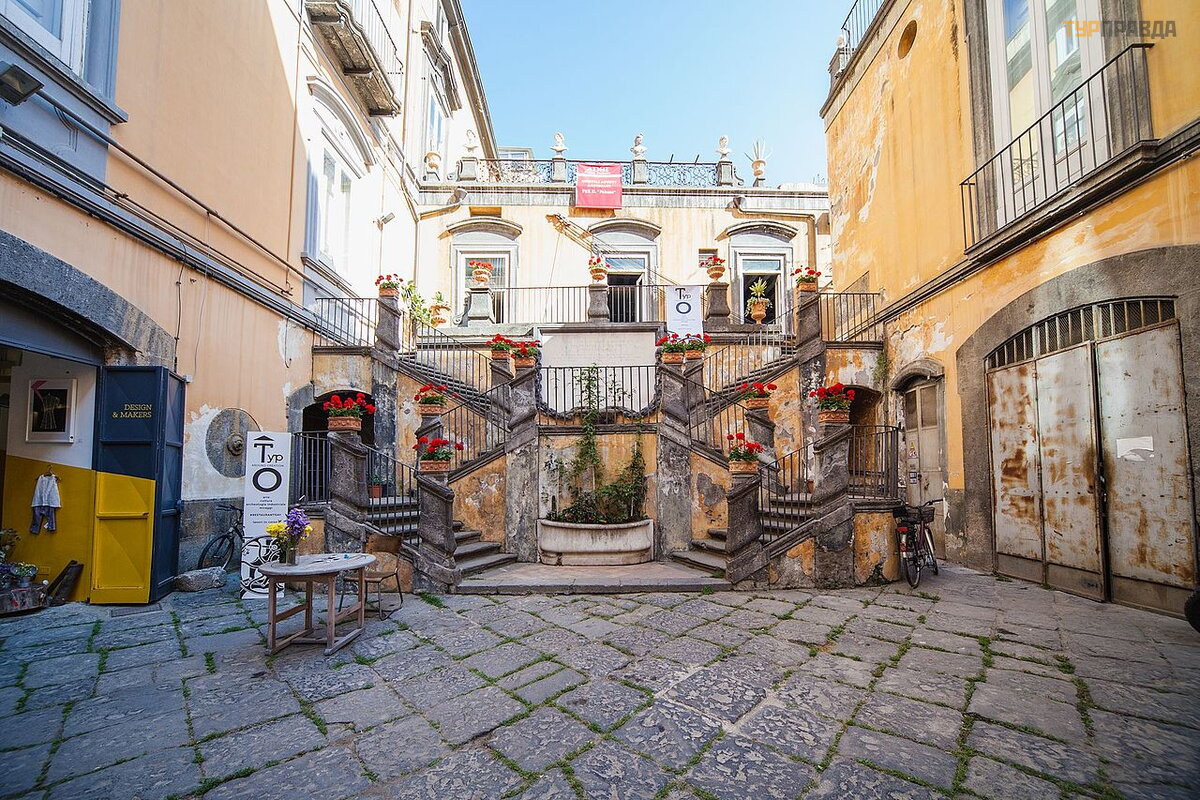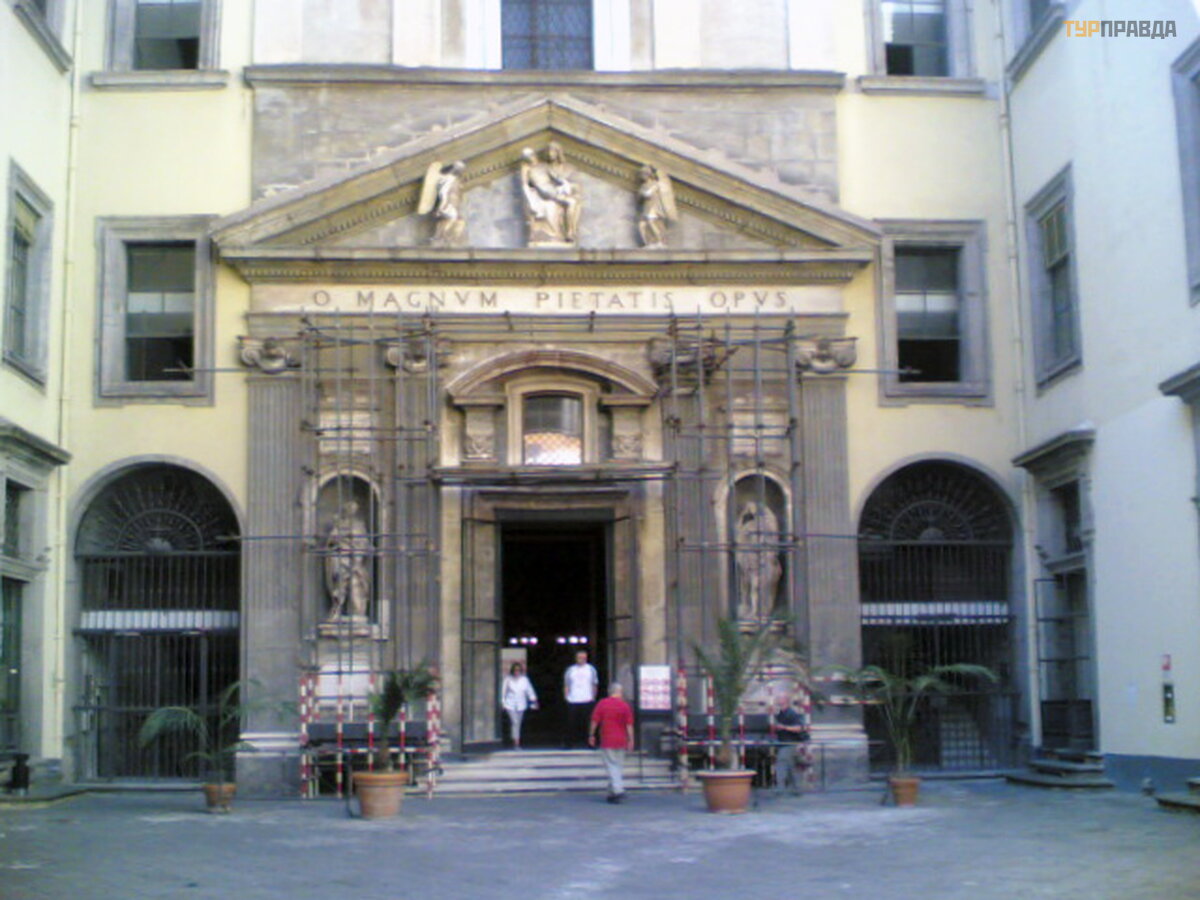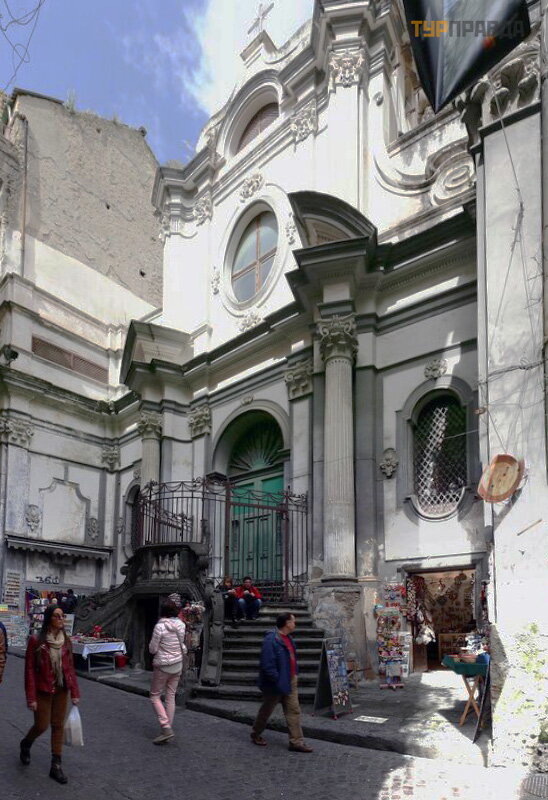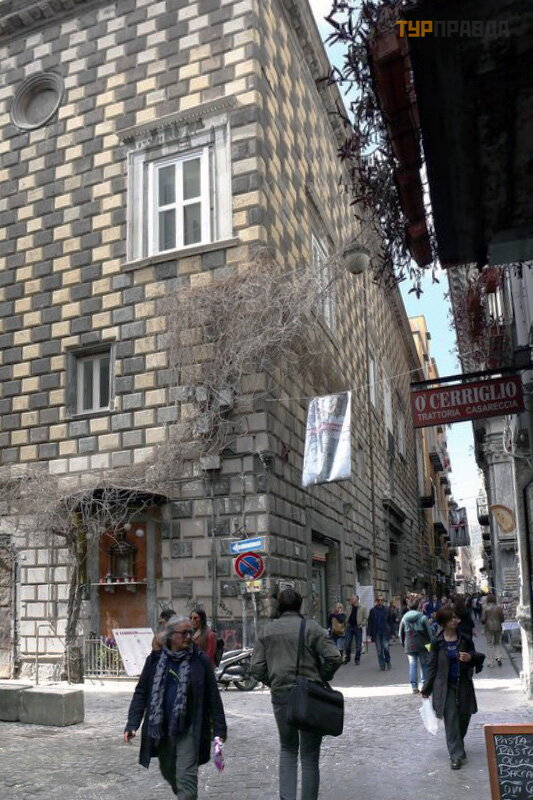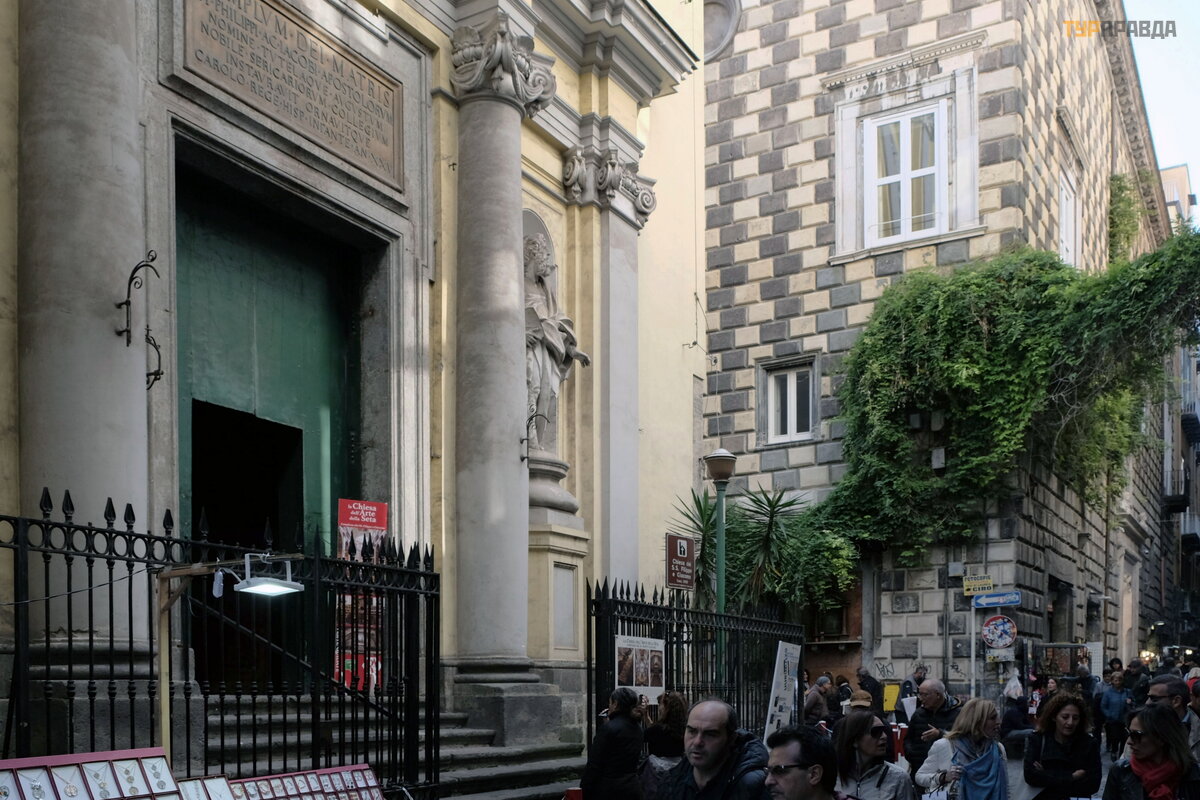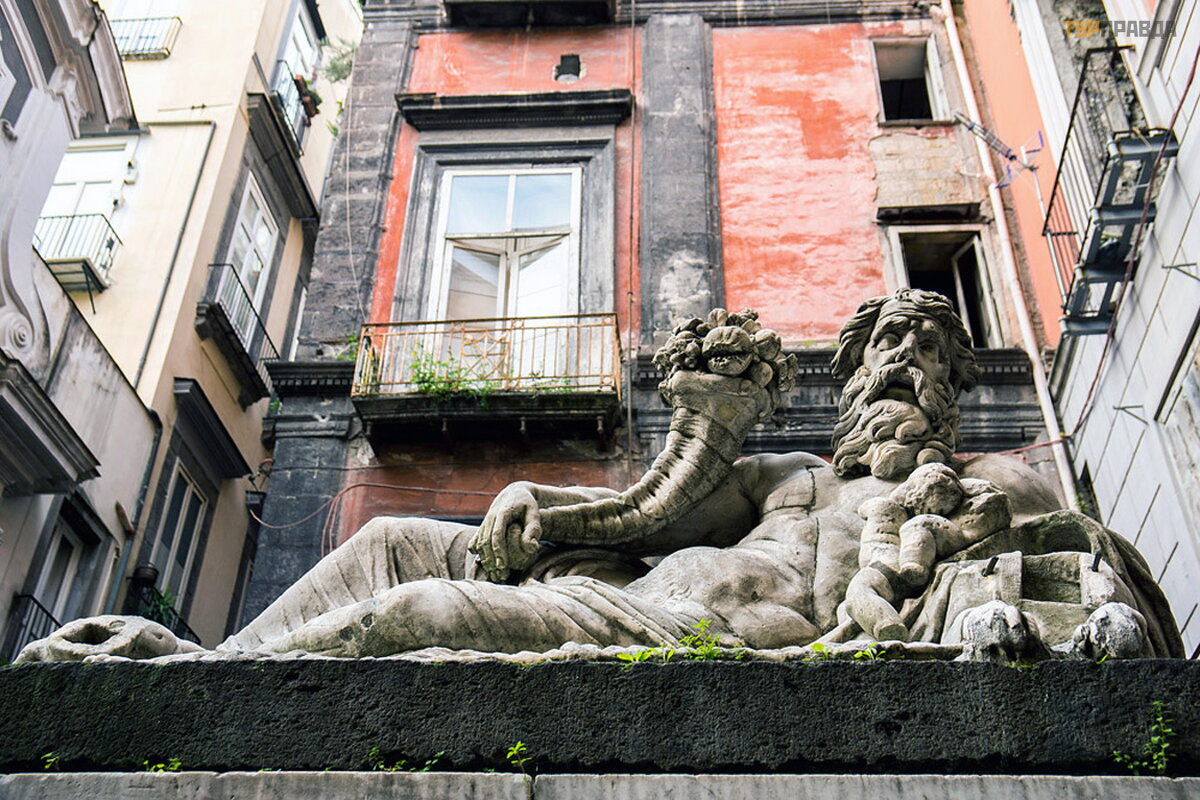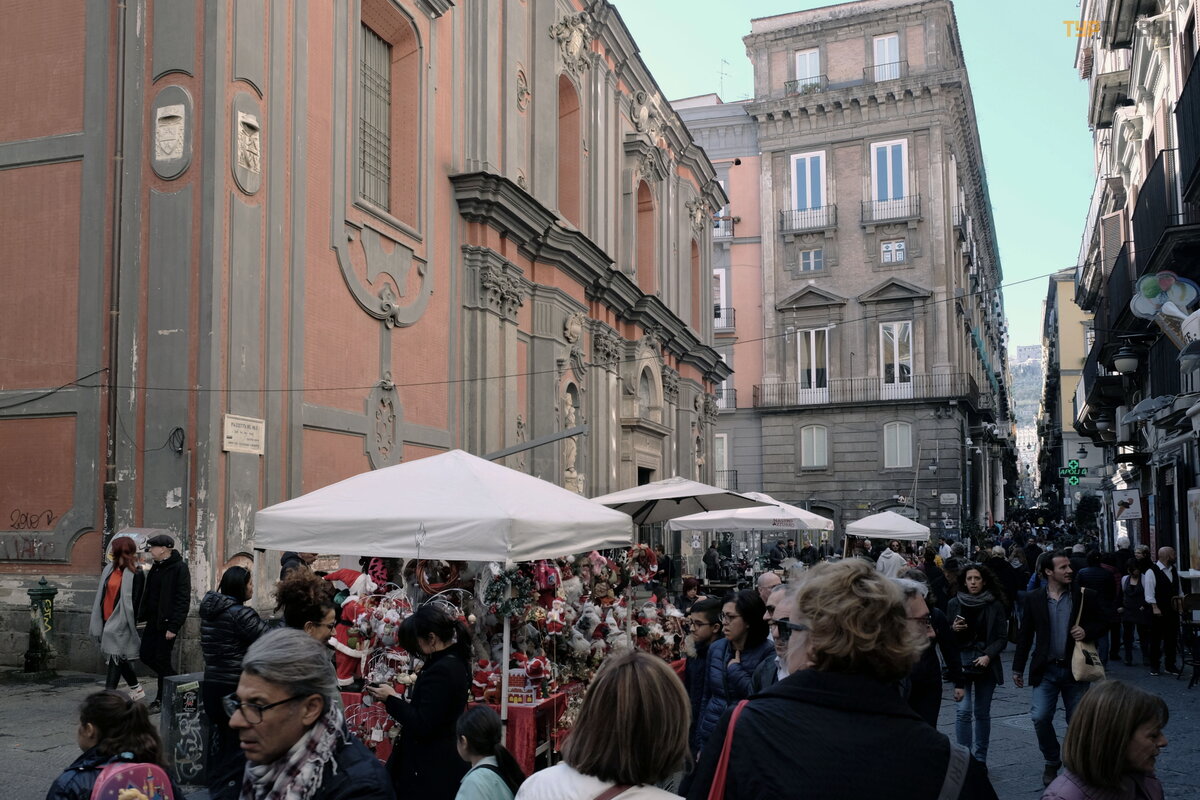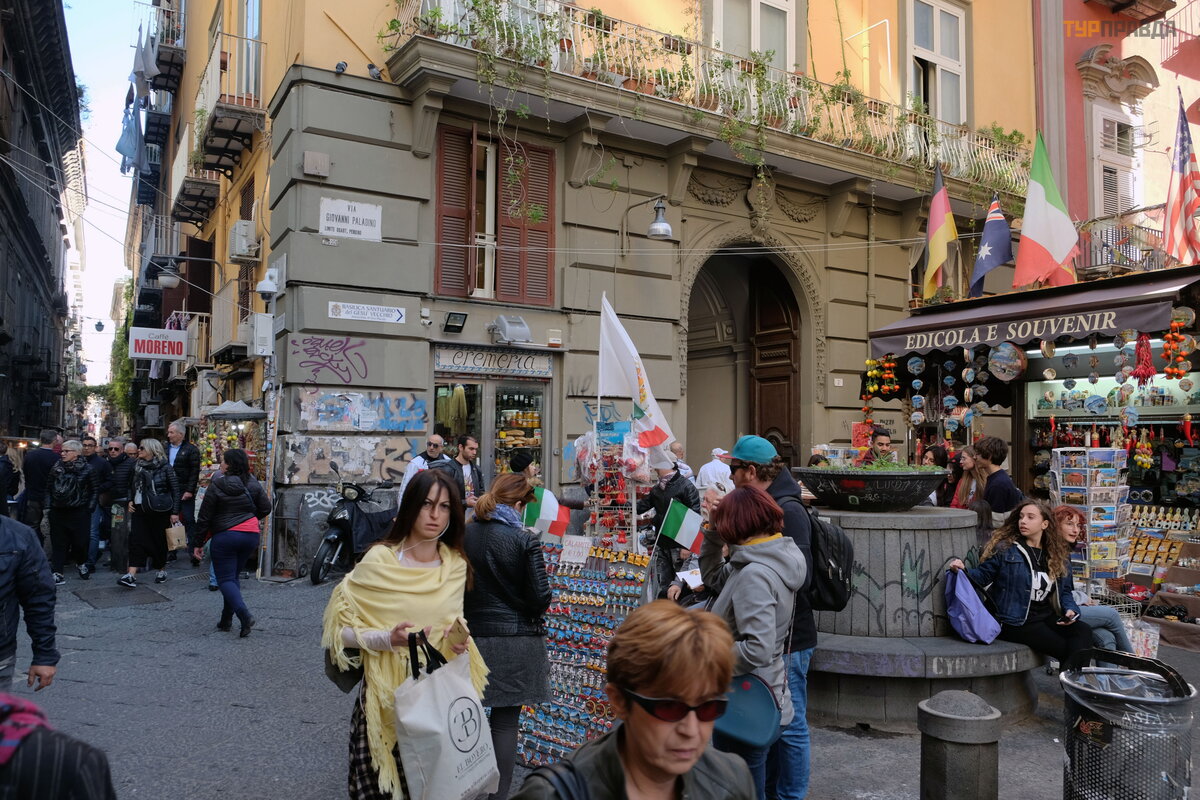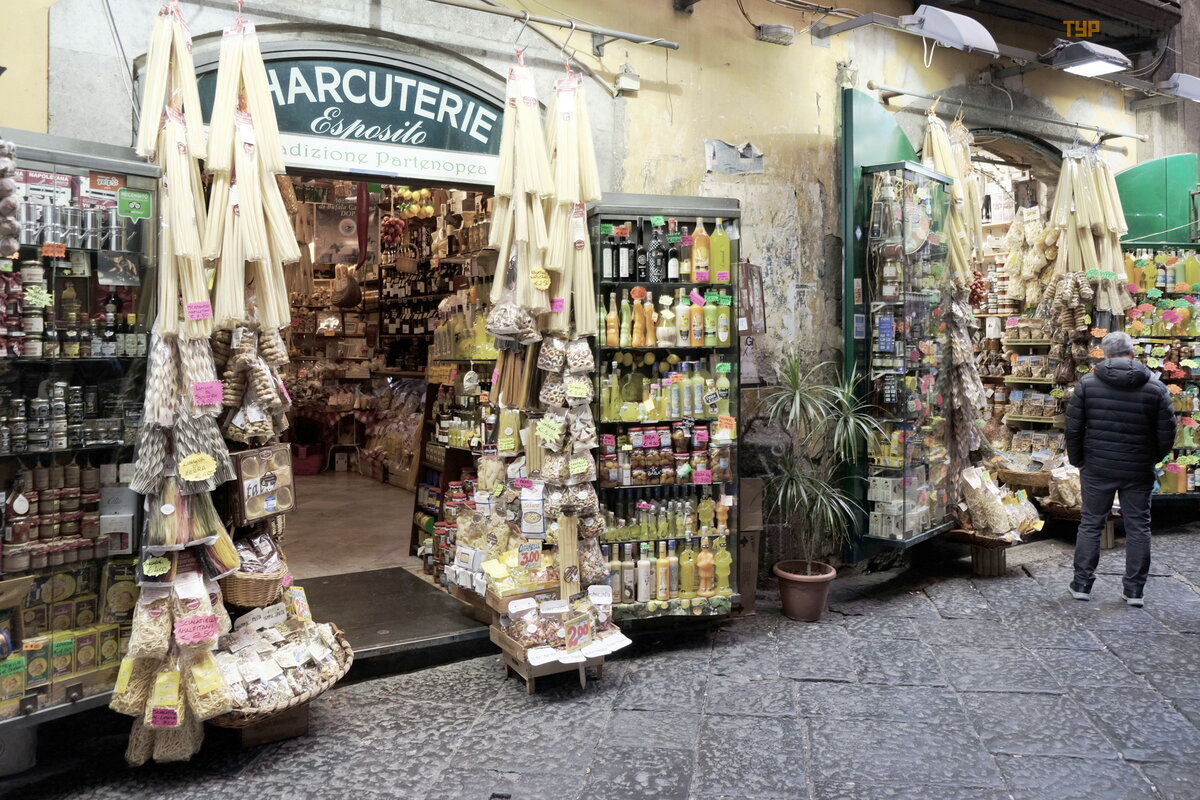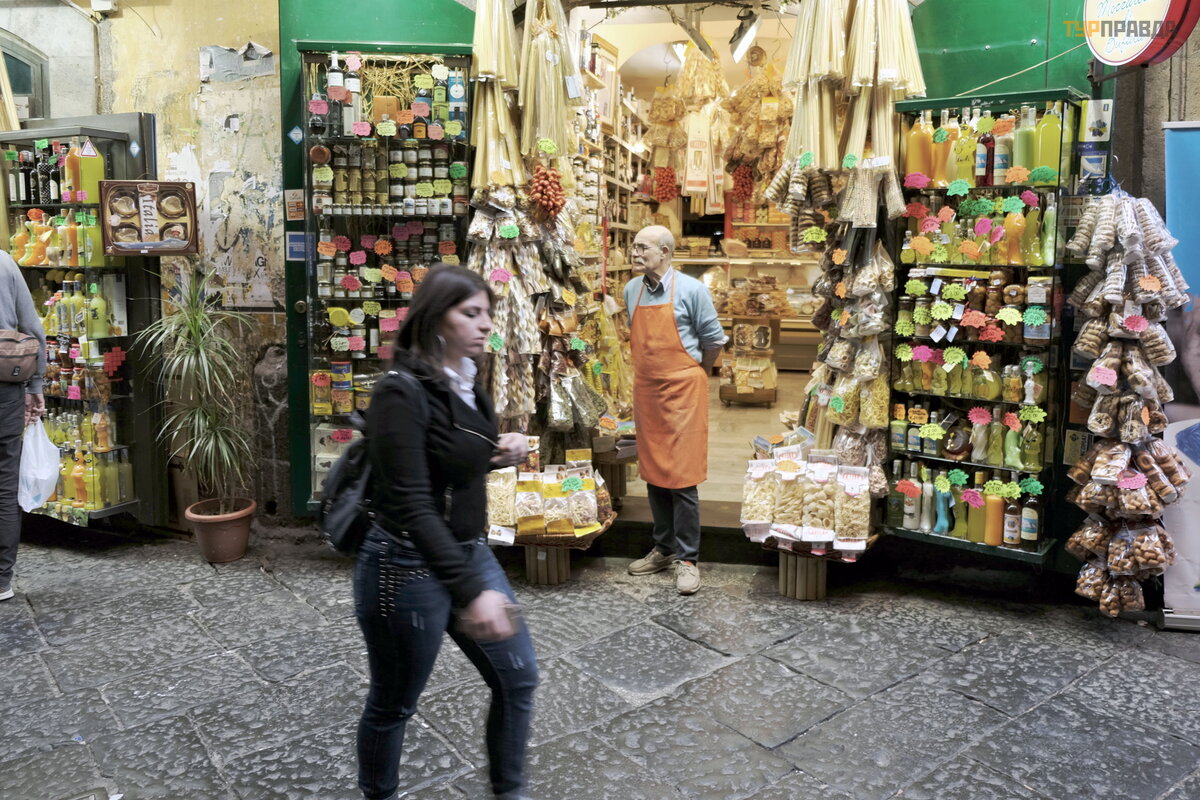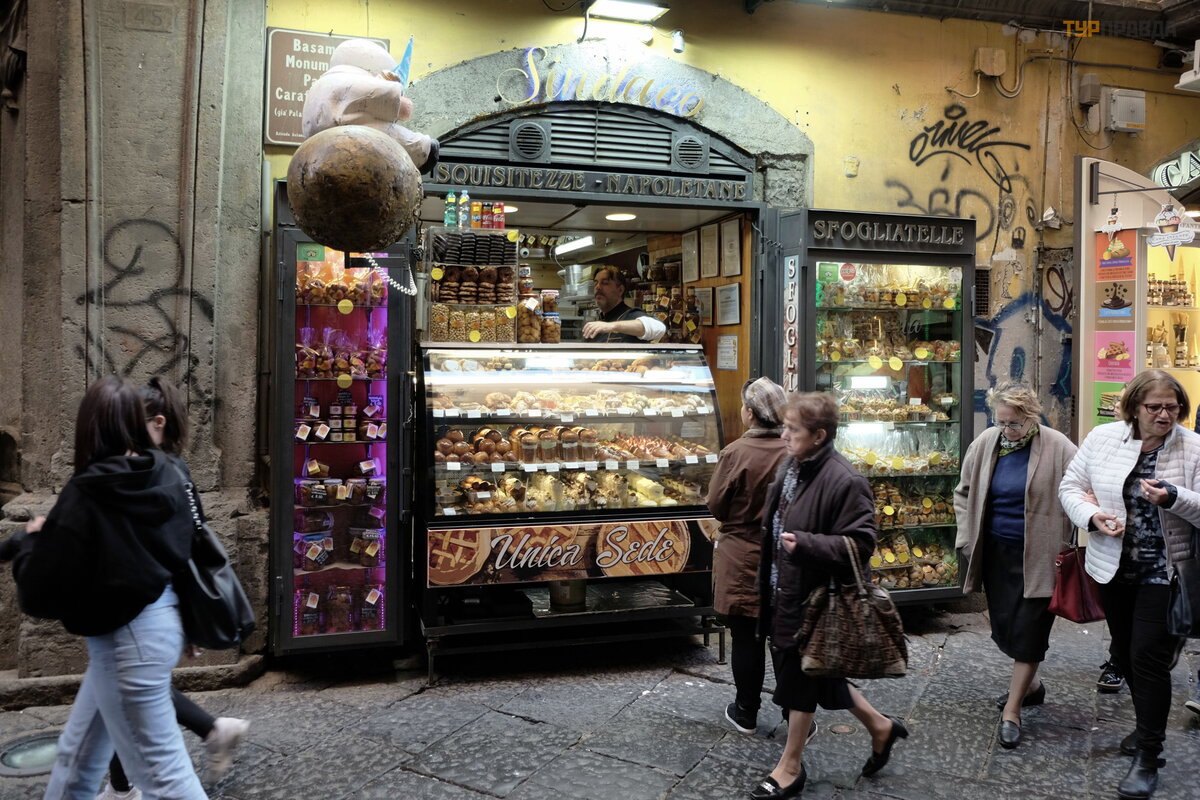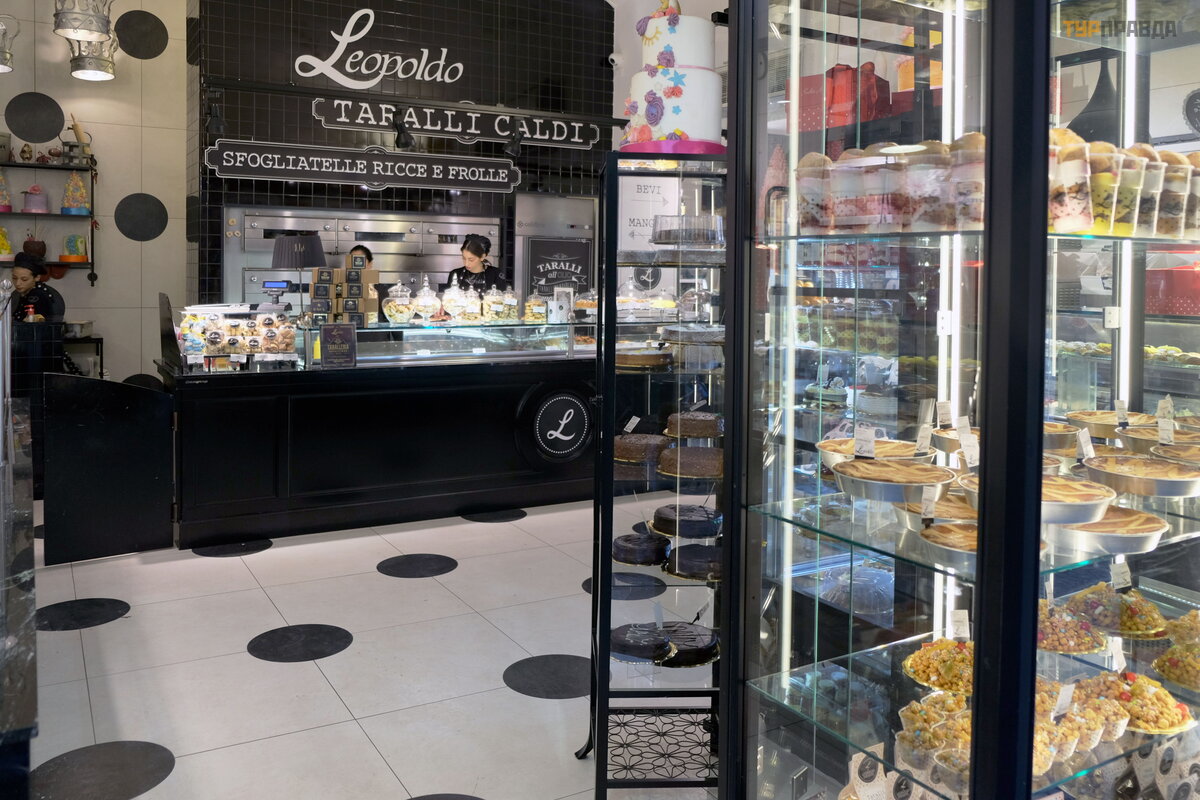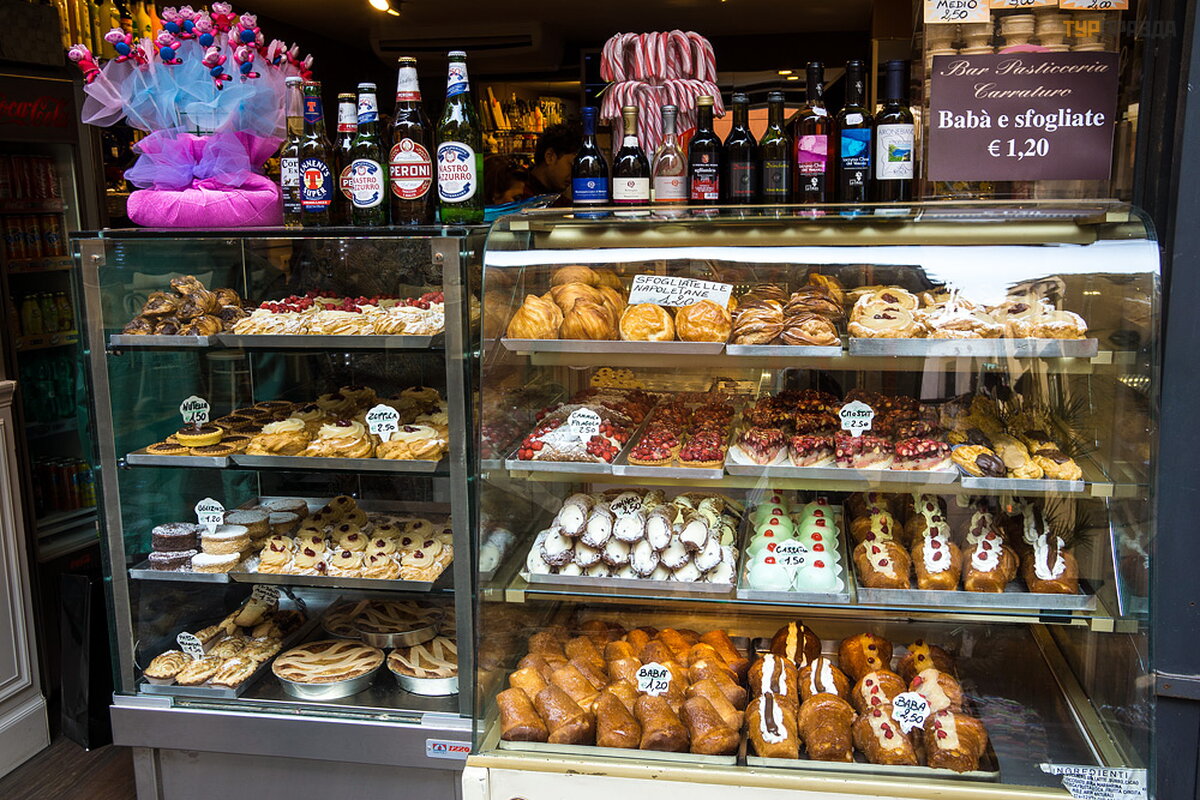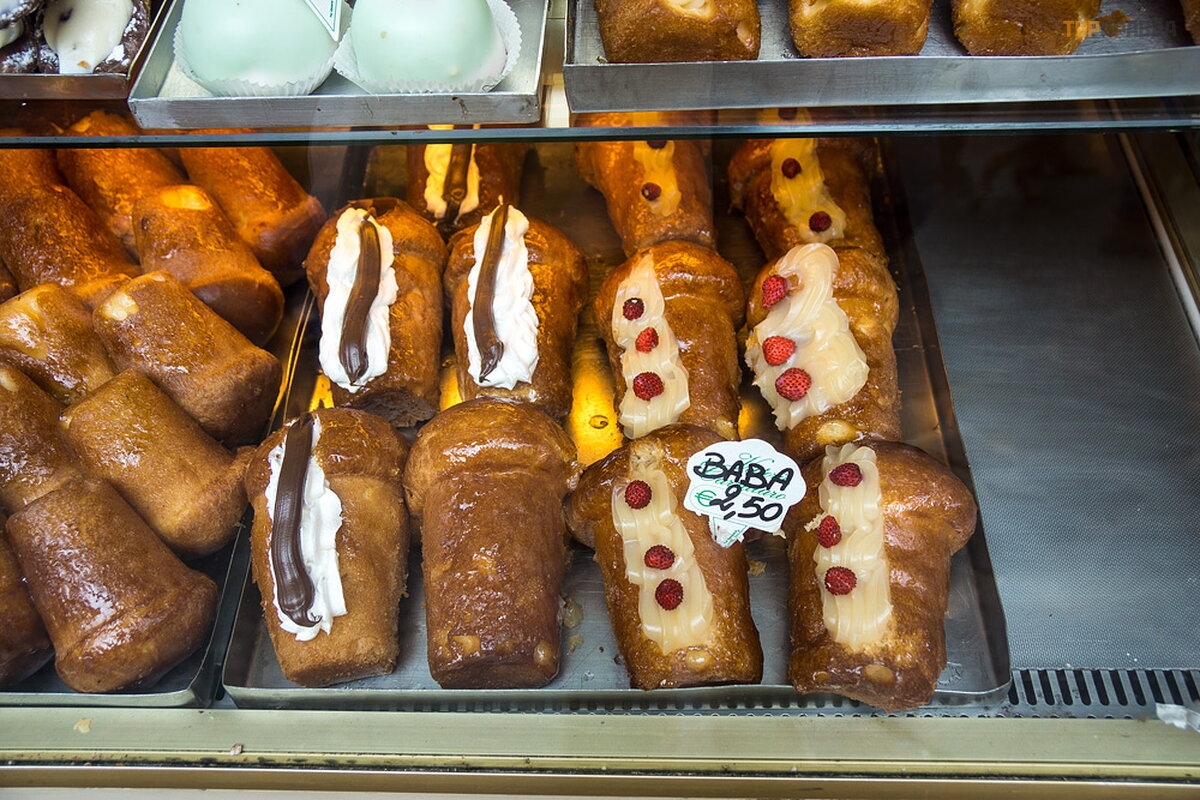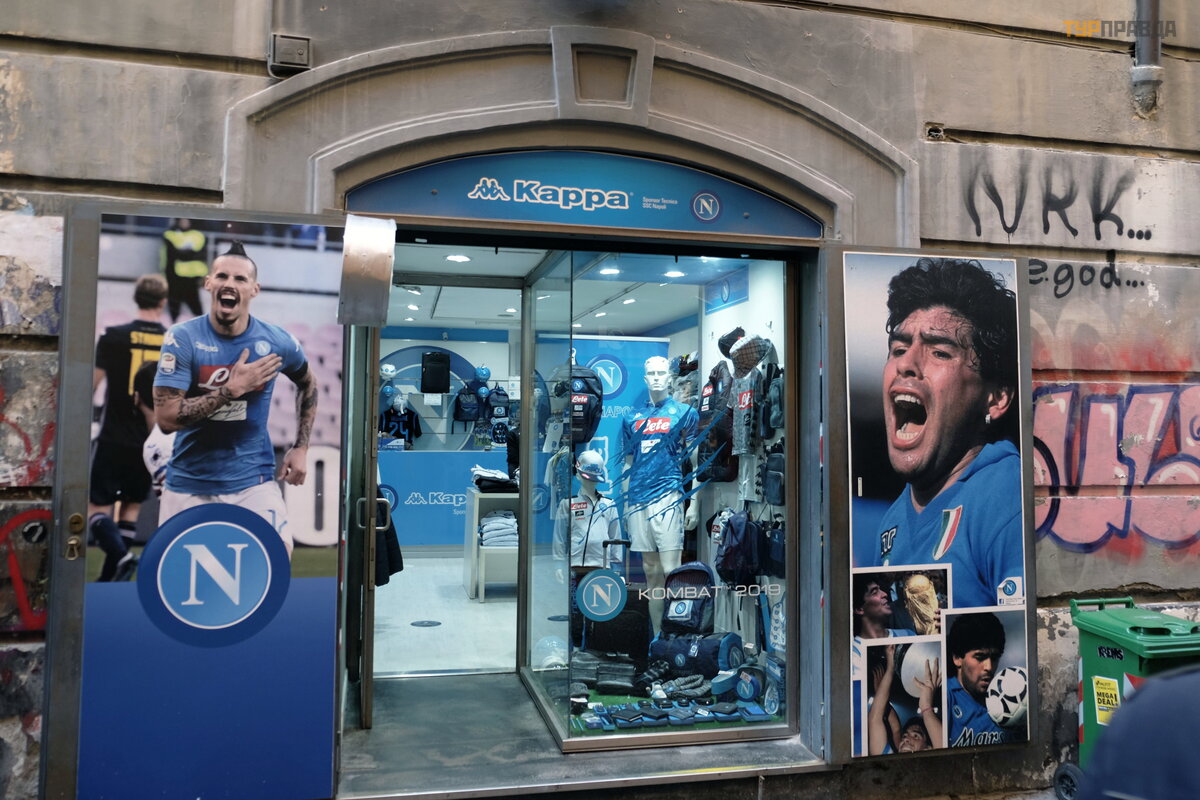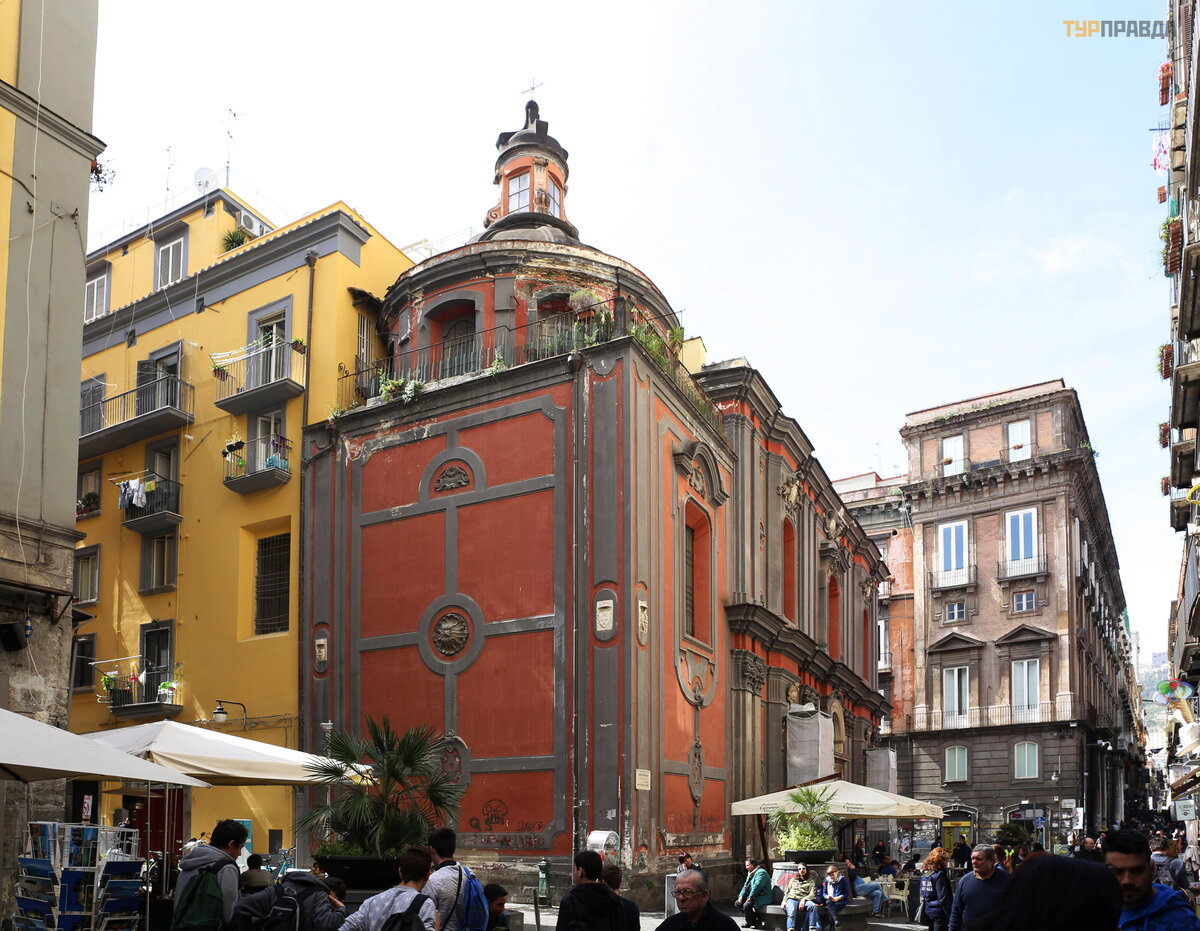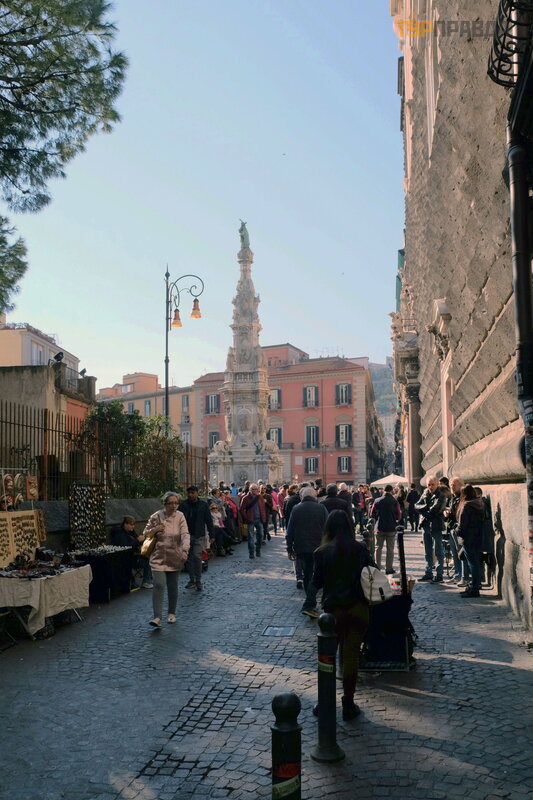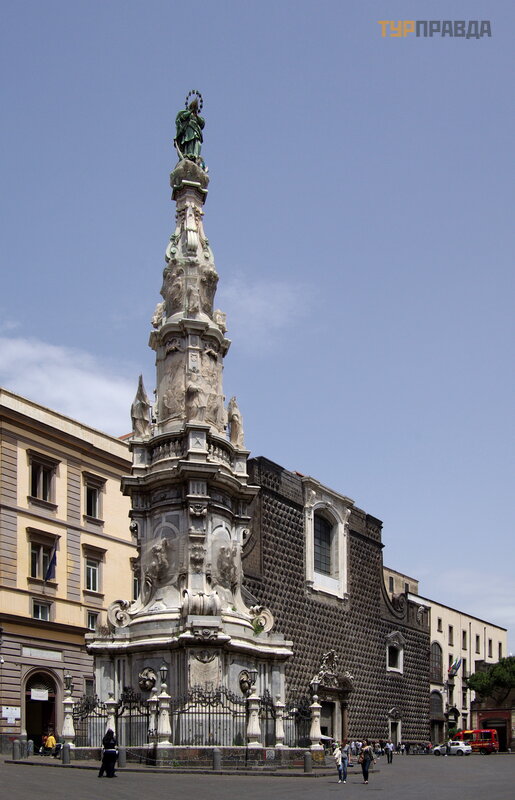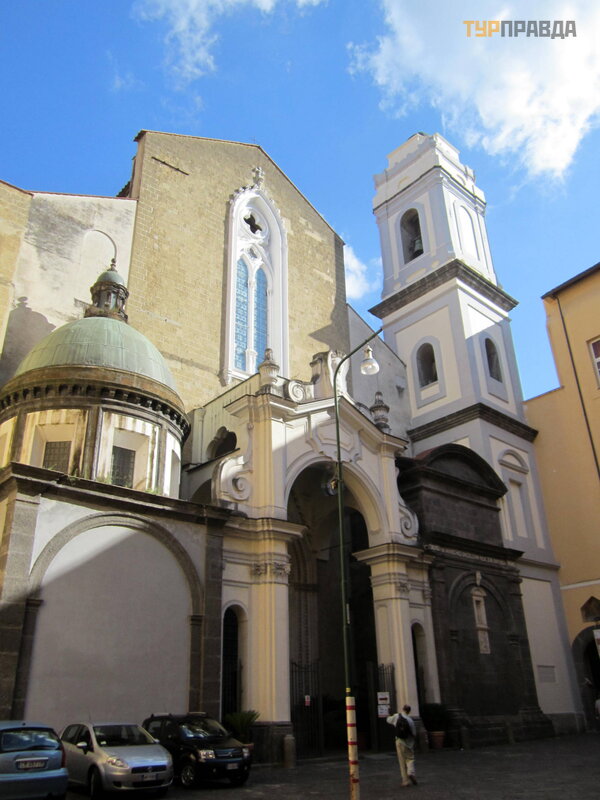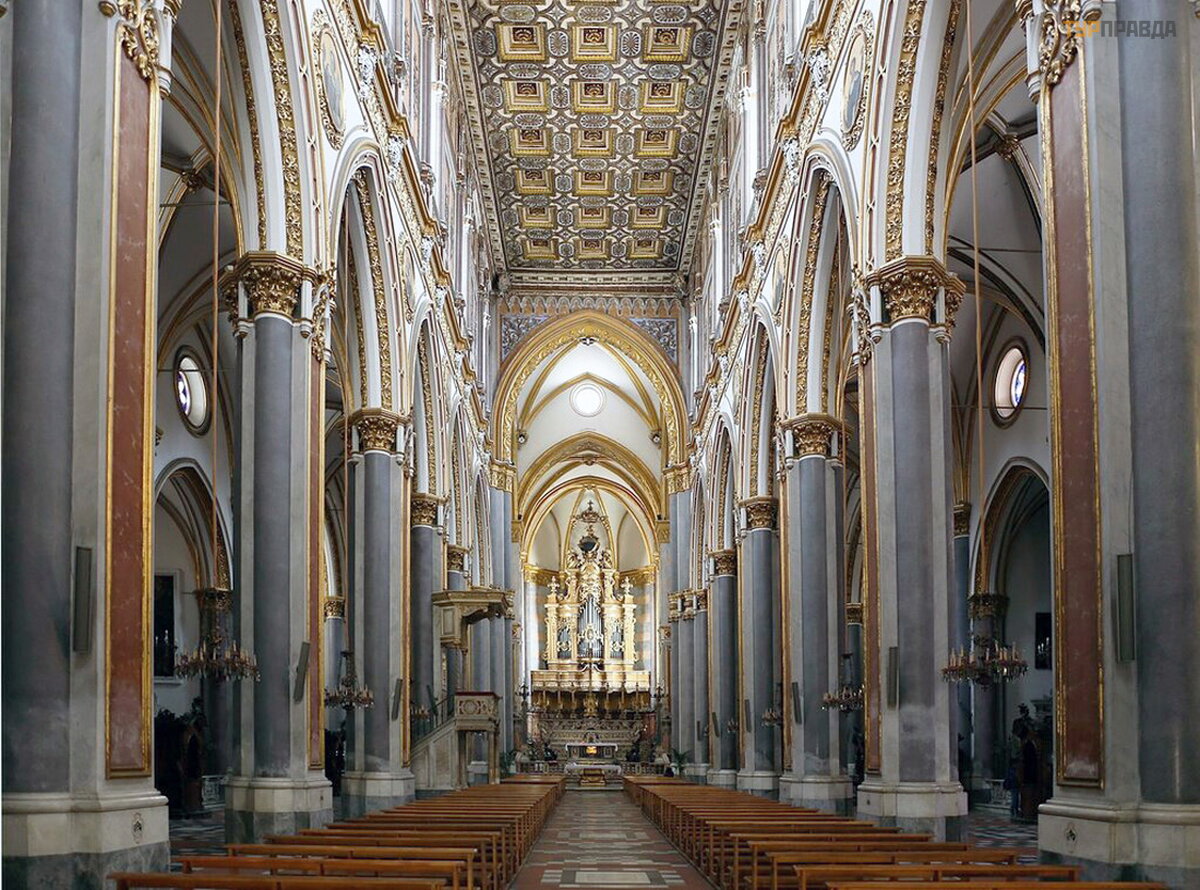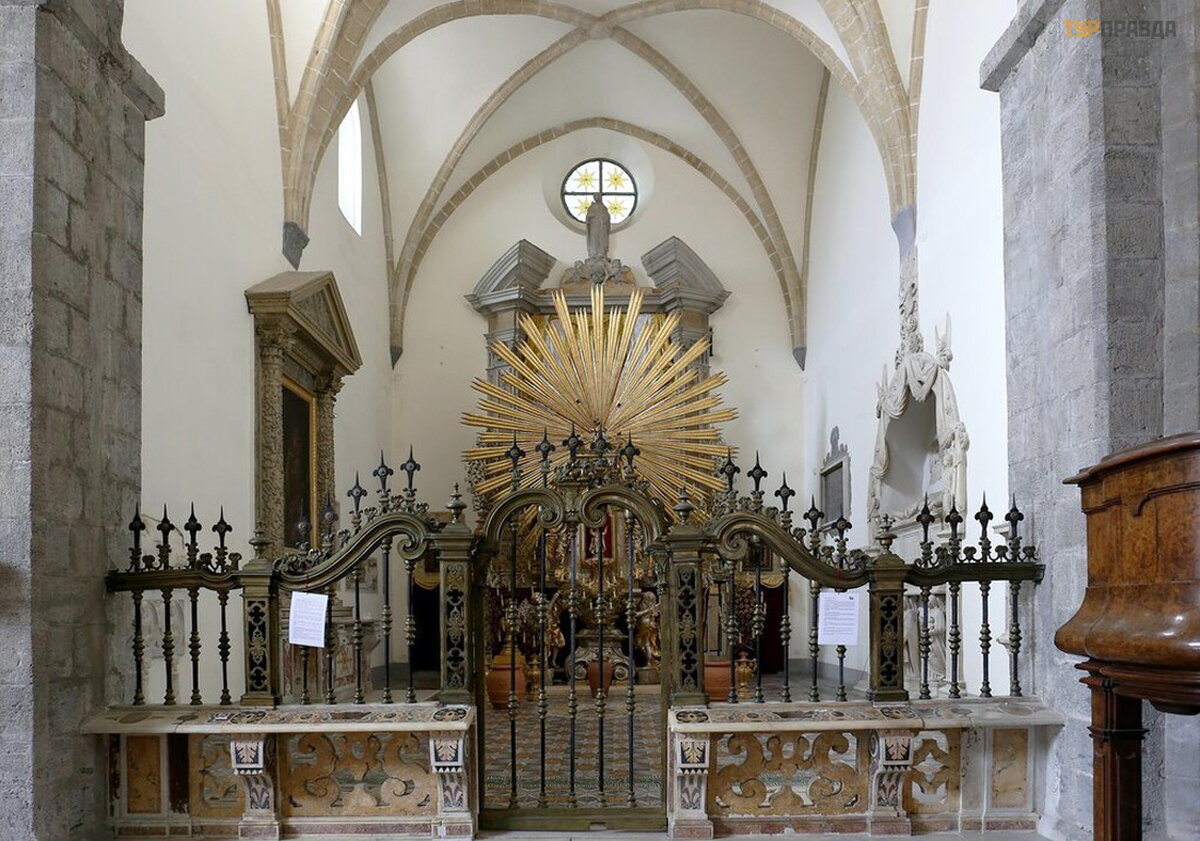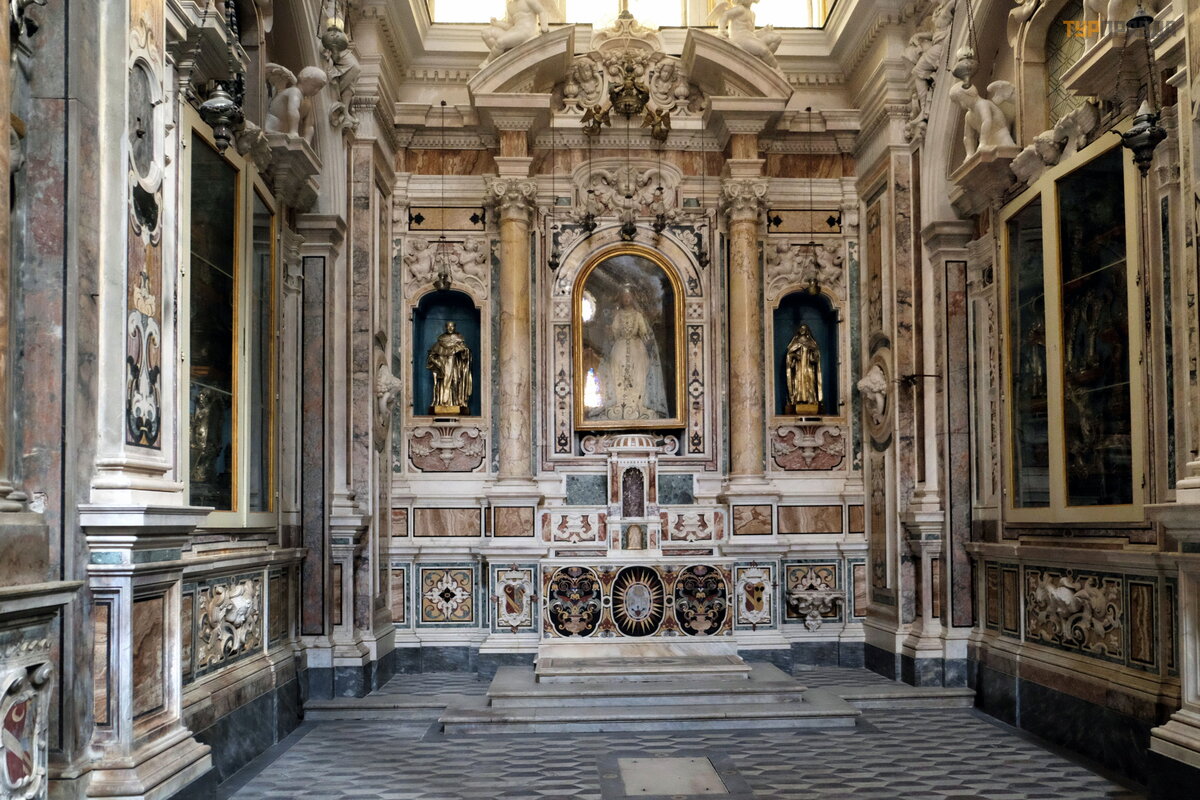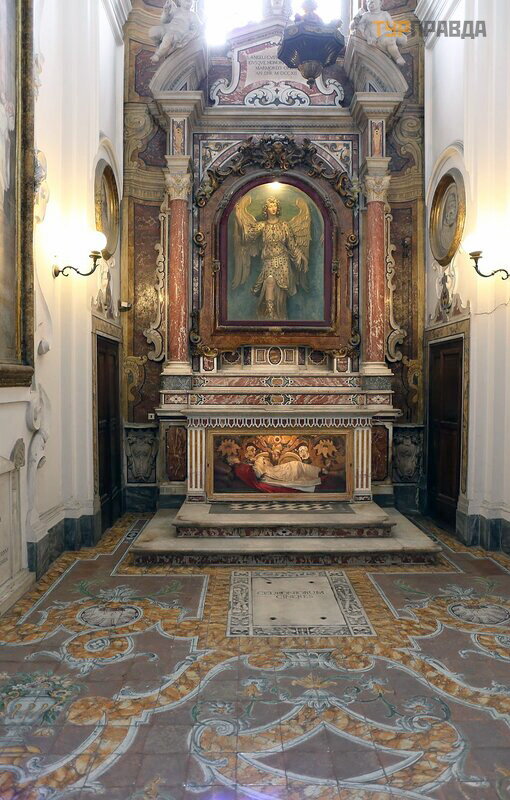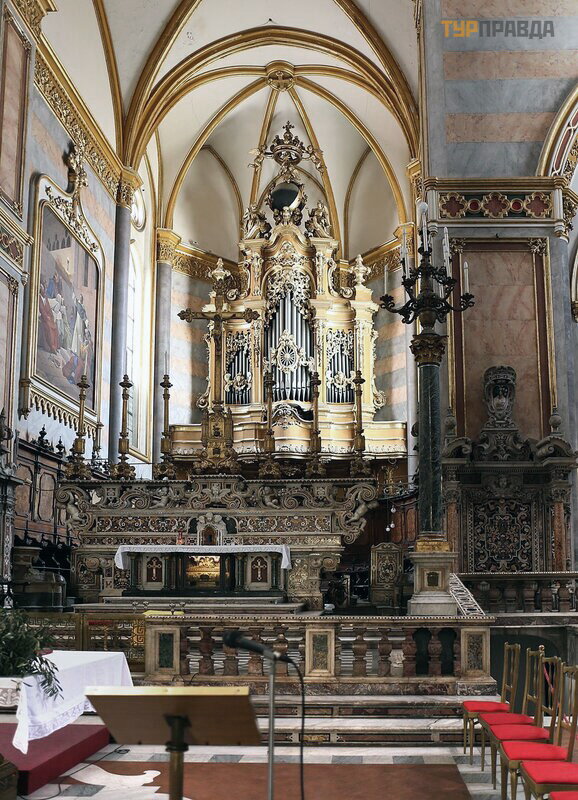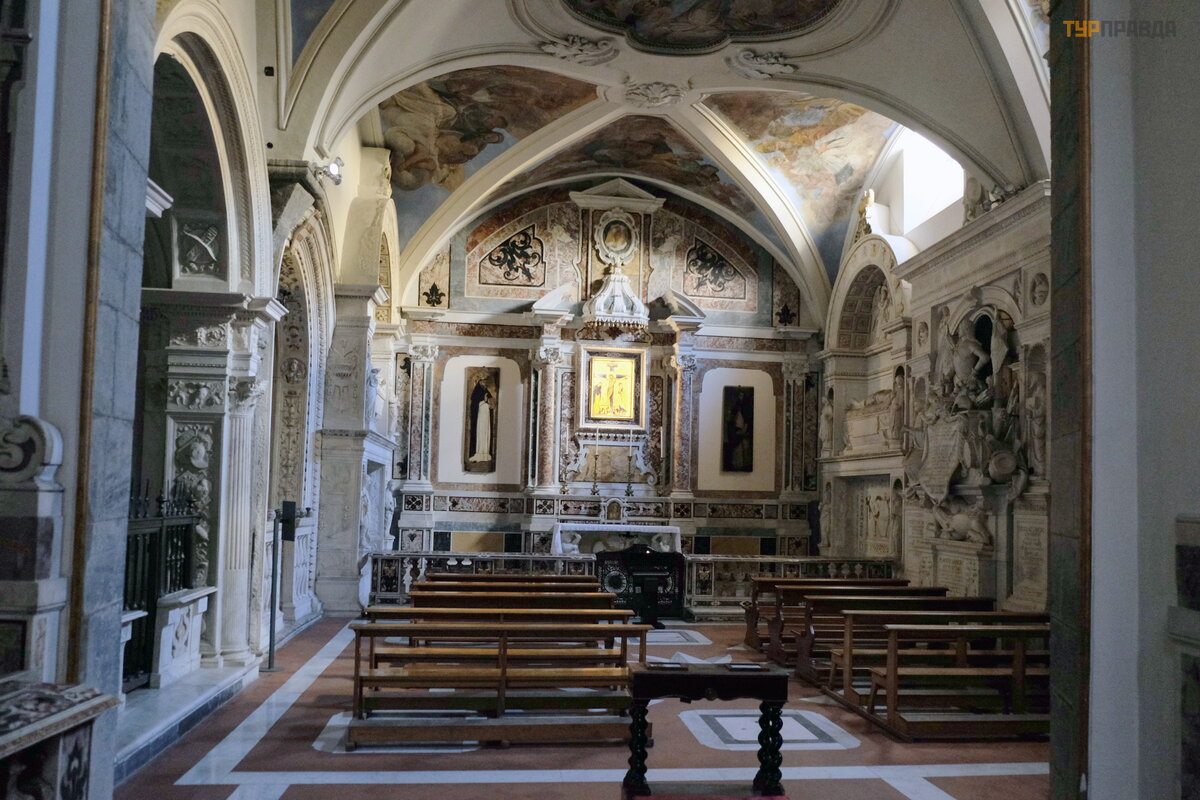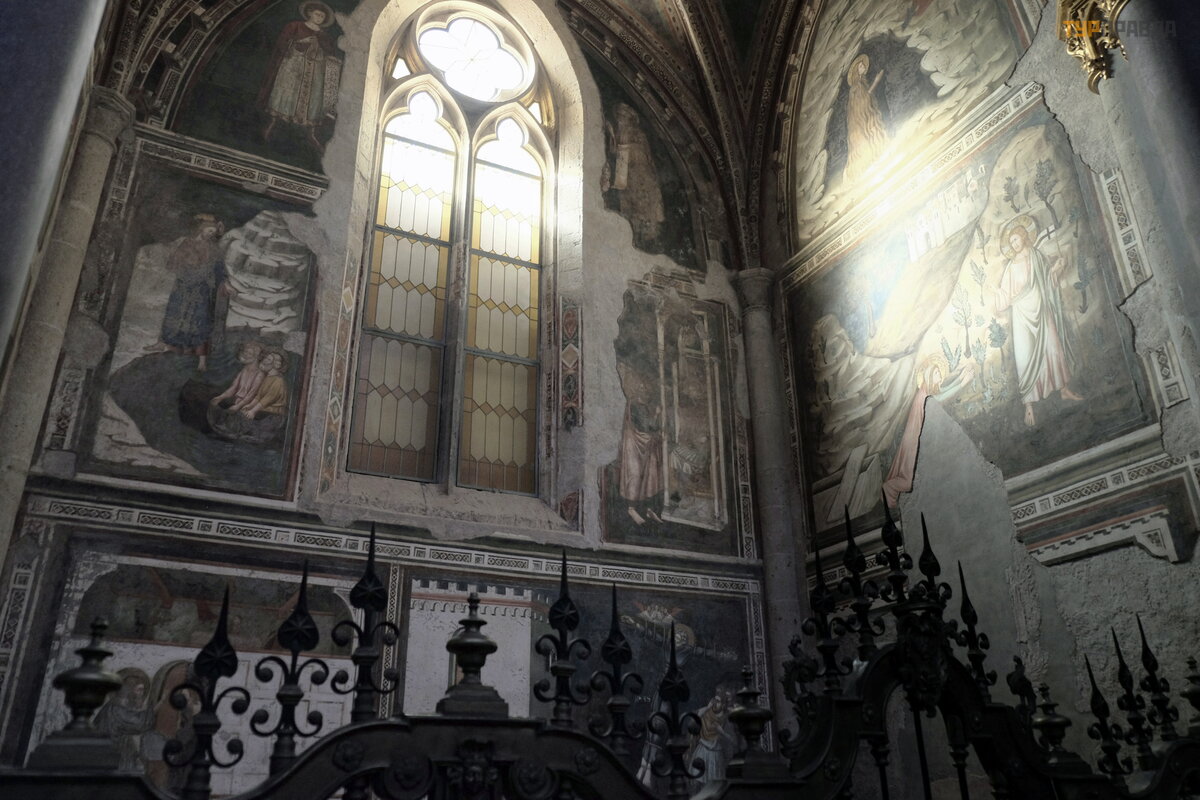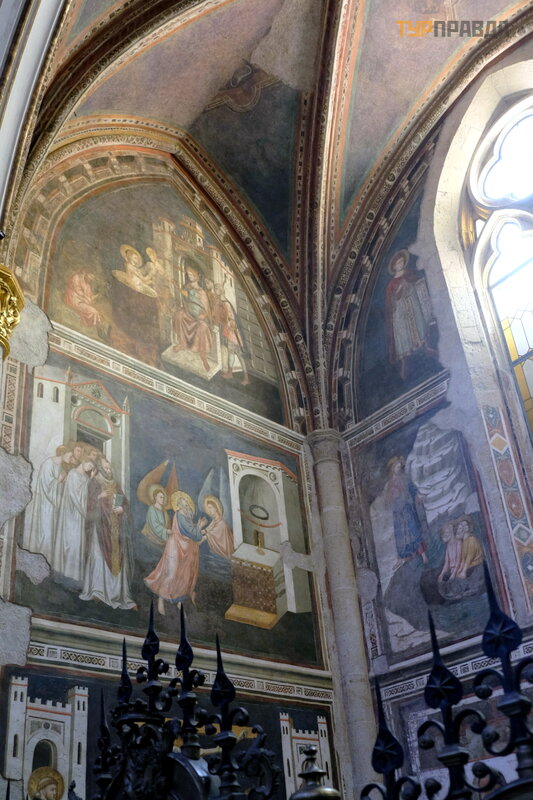My beautiful Naples. Part 7. Walk around the city

To be continued. Start here >>>
Looking through my last year's report on Naples, I suddenly discovered that the final part had suddenly disappeared somewhere.
I'll try to restore it from memory, especially since Italy is now closed, it remains only to remember.
We spent the last day of our trip walking around the city. We were in Naples a year ago, so the story will include memories and photos from last year's trip as well
Again, we start our journey from the Central Station. Garibaldi in Italy is like Lenin, there is a monument in every city.
From Piazza Garibaldi, you can clearly see the Church of St. Catherine (Chiesa di Santa Caterina a Formiello). The church was built in 1593 and consecrated in honor of the Alexandrian martyr Saint Catherine. The church was called a Formello because of its proximity to the aqueduct (lat. formis - water supply, canal).
Not far from the church is a medieval (1573) fountainFormiello, located on the back outside of Capuano Castle.
Porta Capuano is an ancient gate to Naples, part of the former fortress wall. The gate protected the road from Capua, built at the end of the 15th century.
Castel Capuano is the oldest surviving castle in Naples. The castle was built in the XII century, during the reign of the Norman conquerors. In the 13th century, the castle was expanded by order of Friedrich II Staufen. At the end of the 15th century, by decision of Ferdinand I of Aragon, the city walls were fortified, and they were also connected to the Castel Capuano castle.
In the middle of the 16th century, Viceroy Pedro de Toledo placed all city courts in the castle, which were located in different parts of the city. Presumably, for this reason, the street approaching the center of the castle was called Via Tribunali.
This niche was established in the middle of the seventeenth century, when the city suffered from the plague.
The Decumani in Naples are three streets stretching from east to west, founded by the Greeks in the 5th century BC. e. , developed under the Romans and successfully survived to this day.
Three decumanes in the center of Naples are interconnected by numerous alleys and streets. Decumans are narrow and non-pedestrian, and cars and motorcyclists pass by.
Practically all the "pearls" of the historical center of Naples are located on two decumans: via Tribunali was once the main decuman of the ancient city, the "decumanus maximus".
The second one is the so-called Spaccanapoli ("spacca" - cuts, "Napoli" - Naples). And this street really cuts through the historical center of Naples - from the height of the Vomero hill, it looks like a deep, narrow gap.
The facades are predominantly gray in color, 5-6 floors high. In the inner courtyards, there are often such multi-tiered arched galleries, behind which flights of stairs stretch.
The same can be said about churches. Their appearance is not impressive, but what a beauty inside!
Moving up Via Tribunali, the main street in the historic center of Naples. Via Tribunale ends at Capuano Castle.
In the morning, merchants lay out tables:
On Via Tribunale, the inconspicuous entrance to the church Pio Monte della Misericordia). . .
. . . where is our main goal of this day - Carravaggio's masterpiece "The Seven Acts of Mercy. A museum with an art gallery is attached to the church, where a staircase leads to the second floor. A single ticket costs 7 euros. We entered for free with the Napoli Card.
The museum has a gallery of Italian paintings with 140 canvases of the 16th-19th centuries by Massimo Stanzione, Andrea Vaccaro, Luca Giordano, Leonardo Coccorante, Mattia Preti and many other famous painters.
Self-portrait of Luco Giordano:
Going down to the church:
In six church chapels, paintings by other artists of the 17th century are exhibited: Giordano, Caracciolo, Azzolino, Santafede, and Forli.
A painting by Carravaggio adorns the main altar of the church and can be seen from the gallery on the second floor.
The painting was commissioned by a charitable foundation in 1606-1607. Previously, acts of mercy were depicted separately. Caravaggio decided to reflect them on canvas in a single composition. Between the customers and the painter, a written agreement was concluded that a copy would never be made of the work. Moreover, the painting never left its place, even during hostilities and bombings.
Opposite the church is the side facade of the Duomo (Saint Januarius) Cathedral.
It overlooks the square, where the oldest obelisk of Naples - Saint Januarius. The author of the project of the obelisk was the sculptor Cosimo Fandzago. The grand opening of the monument took place in 1660.
We visited the Cathedral several times, but in daylight its sights are better visible, I told about them in the first part of the review of Naples.
We leave the cathedral through the main portal on Via Dante.
Further down the street we reach the intersection of Tribunali and San Gregorio Armena streets,
small Piazza San Gaetano, where there is an obelisk to Saint Gaetano (Cayetan), the founder of the Order of the Teotines, as a vow to deliver Naples from the plague of 1656. The monument was designed and made by Italian sculptors Cosimo Fanzago and Andrea Falcone.
The square, on which the monumental church of San Paolo Maggiore rises, was the heart of ancient Naples, in ancient times there was a Greek agora, and in the later Roman era, a forum.
In front of the entrance to the Church of San Paolo Maggiore, mighty columns rise from the ancient Temple of the Dioscuri that once stood on this site.
The main work on the restoration and expansion of the building of San Paolo Maggiore began after the transfer of the church to the Order of Theatines and continued in the period 1580-1630.
The main altar dates from 1775-1776 and was designed by Ferdinando Fuga.
In addition, the basilica houses a statue of the Guardian Angel, made by Domenico Antonio Vaccaro.
Across from San Paolo Maggiore stands the San Lorenzo Maggiore church, built in the second half of the 13th century, which has preserved the original Gothic style, next to the bell tower.
Under some churches in the square there is an entrance to the catacombs of Naples, but I feel uncomfortable underground and do not go on such excursions.
If you continue along Via Tribunali,
then we will see one of the most beautiful palaces of Naples of the 18th century - Palazzo Spinelli di Laurino.
Next is a church with a huge dome visible from everywhere - The Great Church of Our Lady and the Holy Stone (Chiesa di Santa Maria Maggiore alla Pietrasanta), built in the Baroque style between 1653 and 1678 by Cosimo Fanzago.
The temple was called the Church of the Holy Stone because a stone was kept inside it, which was kissed to receive indulgence.
The brick bell tower was built in the Romanesque style in the 11th century and contains elements of buildings from the Roman period in its base, which were used in its construction. This bell tower is considered one of the most beautiful towers in the religious architecture of Italy.
Via Tribunale ends at the Church of San Pietro a Maiella, built at the end of the 13th century.
The monks of the Celestine order, to whom the church was intended, consecrated it in the name of Pope Celestine V (Peter in the world), who for some time led a hermit life in the Maiella mountains.
The bell tower, installed in the first aisle of the left nave of the church, was erected in the 14th century. It rises to 42 meters.
The altar was designed by the architect Cosimo Fanzago in the 17th century. It is decorated with silver chandeliers and large vases and fenced off by a polychrome marble balustrade. Above the altar is a wooden crucifix from the 17th century.
Behind the church is the area of Piazza Bellini with a monument to the great composer.
The square itself has always been considered one of the most popular places for the city's intellectual elite,
because it was surrounded by numerous universities and in close proximity to the Academy of Fine Arts and the San Pietro Majella Conservatory, where, by the way, Bellini studied and then taught.
The building of the conservatory (one of the very first in the world) is very inconspicuous and it is very difficult to take a good photo from a narrow street.
Part of the square is occupied by an archaeological zone - the ruins and foundations of buildings of the Greco-Roman period.
You can walk along Via Port'Alba the quarter that connects Piazza Bellini and Piazza Dante, which is full of second-hand bookshops and antique shops.
The quarter is called Port'Alba, after the fortress gate of 1625
The arch is part of the ensemble of a giant semicircular structure erected in 1757-65. architect Luigi Vanvitelli,
which forms the east side of Piazza Dante.
But usually all tourists immediately turn off Via Tribunale onto the narrow street of San Gregorio Armeno, which connects the two decumanuses of Naples: Via Tribunale and Spaccanapoli. The street is full of presepe, Christmas nativity scenes on all sides. There are always a lot of tourists here.
Here is the entrance to the monastery of St. Gregory of Armenia. The monastery is open from 9 am to 12 pm. A long staircase-corridor leads to the entrance, the staircase surrounded by walls on both sides, along which we entered the monastery, is so high that you get straight to the second floor. Simply put, the cloister and church choirs are on the same level.
Entrance is free, nuns sit at the entrance,
you can buy something from them, but you can go through like that.
We pass into the monastery courtyard, a real oasis against the backdrop of other buildings in the historical center of Naples, where all the buildings stand close to each other, and you can’t really see a single facade. Magnificent garden planted with fruit trees (oranges, lemons) and flowers.
The cloister of the monastery was designed by the architect Giovanni Vincenzo dela Monica. The gate leading to it is painted by Giacomo del Po (17th century).
In the center of the courtyard is a baroque marble fountain flanked by statues of Christ and the Samaritan woman by Matteo Bottilleri (18th century).
A small but very beautiful Idrija chapel is covered with frescoes on the theme of the life of the Virgin.
In the chapel there is an icon of Our Lady Hodegetria.
The barred windows on the right (when viewed from the entrance) wall of the church overlook the cloister. From the side of the cloister, a low niche leads to each window, so you can look through the window at what is happening in the church, but only on your knees.
There are chapels that are not connected to the church, the entrance to which is organized directly from the cloister.
We return to the street of San Gregorio Armeno, and find ourselves in front of the entrance to the Church of San Gregorio Armeno.
According to legend, there was a monastery founded here by Saint Helena, the mother of Emperor Constantine the Great. Then nuns, followers of Saint Patrickea, settled here. The nuns kept the relics of St. Gregory of Armenia, taken from Constantinople. during the period of iconoclasm. In 2000
the relics of St. Gregory were returned to the Catholicos of Armenia.
In the 16th century, the entire church and monastery complex of buildings was completely rebuilt according to the design of Giovan Battista Cavagna and Giovanni Vincenzo della Monica. The famous architect of that time, Domenico Fontana, took part in the work. In 1580 the new church opened to the public.
The ceiling has an unusual coffered texture, which was given to it by the Flemish artist Dirk Hendrix in 1580. The carved gilded segments of the ceiling contain paintings depicting scenes from the lives of the saints, whose relics are kept in the monastic complex adjacent to the church.
Behind the large altar made by Dionisio Lazzari is a beautiful image of the Ascension by Giovanni Bernardo Lama.
In 1671, the dome was painted by Luca Giordano, who depicted the plot "Glory of St. Gregory". In total, the church contains 52 frescoes made by this master.
The lower decumanus was nicknamed the "Knife of Naples" - Spaccanapoli. But such a street does not exist; in each of its sections it takes on different names.
We get off at Spaccanapoli at the place where it is called Via San Biagio dei Librai.
The street is slightly wider than Via Tribunale.
If you turn left towards the station, you will see Palazzo Marigliano nearby, also known as Palazzo di Capua, a Renaissance palace. The current appearance of the palace was designed by the architect Giovanni Donadio, known as Il Mormando, in 1512-1513. Now there is the archival department of the province of Campania. Entrance to the palace is free at certain hours.
There are no other special attractions in this side of Spaccanapoli, so everyone turns right towards Palazzo del Monte di Pieta. Once within its walls there was a city pawnshop "Monte di Pieta", founded in 1539 after Emperor Charles V issued a decree on the expulsion of Jews engaged in usury. Between 1597 and 1603, Gian Battista Cavagna, with the participation of Giovanni Giacomo Di Conforto and Giovanni Cola di Franco, built a building with an adjacent Mannerist chapel, where the pawnshop moved. The chapel attracts attention with its facade. On either side of the entrance, between two Ionic columns, there are two niches with statues of Pietro Bernini.
Farther, you can see two small churches facing each other: San Nicola a Nilo (Chiesa di San Nicola a Nilo). . .
and the Church of the Apostles James and Philip (Chiesa dei Santi Filippo).
Nearby is an interesting palace of a representative of the Karafa family, built in 1466
Behind the palace is a sculpture located in a small Nile Square. The marble sculpture is an image of the god of the famous Egyptian river. Statue of the god Nile. It was erected back in the days when Naples was a Greek city. It found its present place in the 18th century.
In this part of Spaccanapoli, the street is full of various shops, cafes, pastry shops.
How can you not eat the famous Neapolitan rum baba (Vava) here?
Maradona is still the No. 1 idol of all Neapolitans.
Next, another church associated with the Nile - Church of the Holy Angel near the Nile (Chiesa di Sant'Angelo a Nilo), not its current appearance in 1709
We go to the large Piazza San Domenico Maggiore (piazza San Domenico Maggiore) in the center of which the obelisk of St. Domenic, designed by the architect Cosimo Fanzago (1656-1658). The obelisk is decorated with marble ornaments and sculptures, some of which are by Lorenzo Vaccaro.
The Church of St. Dominic (Chiesa di San Domenico Maggiore) overlooks the square,
is part of the monastery complex.
The construction of the temple was started by order of Charles II of Anjou in 1283 and finished in 1324 . In the XV-XVIII centuries. the temple underwent significant reconstruction, distorting its original appearance, but in the XIX century. scientific restoration was carried out in it.
The main entrance is located on the opposite side, and in order to approach it, you need to go from the alley under the archway and through the courtyard.
A huge three-nave space of the cathedral with Gothic vaults and arches:
There are chapels on both sides of it, some of them are wonderful, but all of them are poorly lit, and some of them are also closed with bars. All chapels belong to the aristocratic families of Naples.
Previously, they were decorated with paintings by Raphael, Carravaggio, Titian (now in museums).
In the side chapel there is the Crucifixion, from which, according to legend, Christ spoke with Thomas Aquinas. On the territory of the monastery complex was then the University of Naples, where Thomas taught and lived right there, in the monastery. Alumni of the university were Giordano Bruno and Compostella.
There are burial places of Neapolitan kings from the Aragonese dynasty. Numerous tombstones of representatives of noble families attract attention.
The most valuable of the chapels, the Brancaccio Chapel, was painted by Pietro Cavallini in 1309.
Continued here >>>
